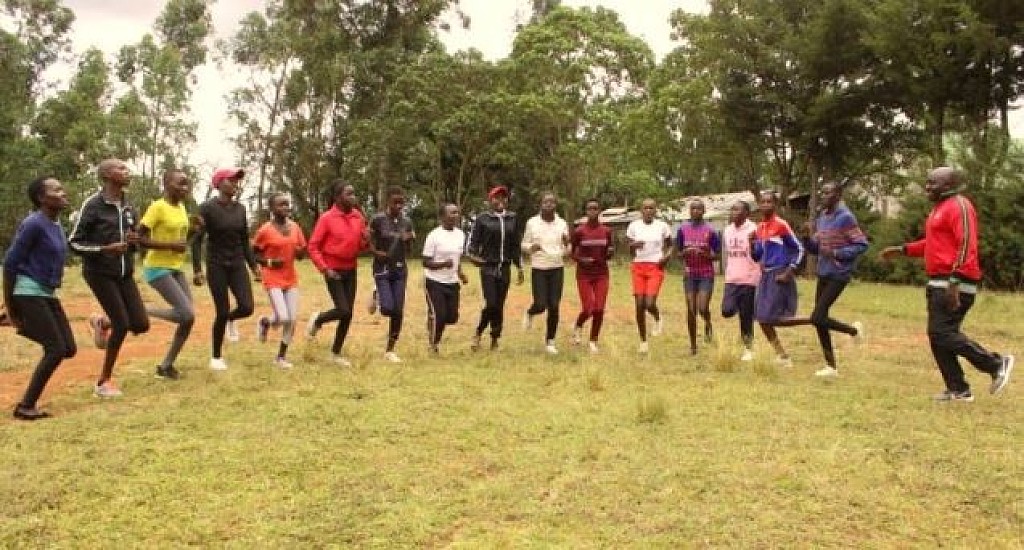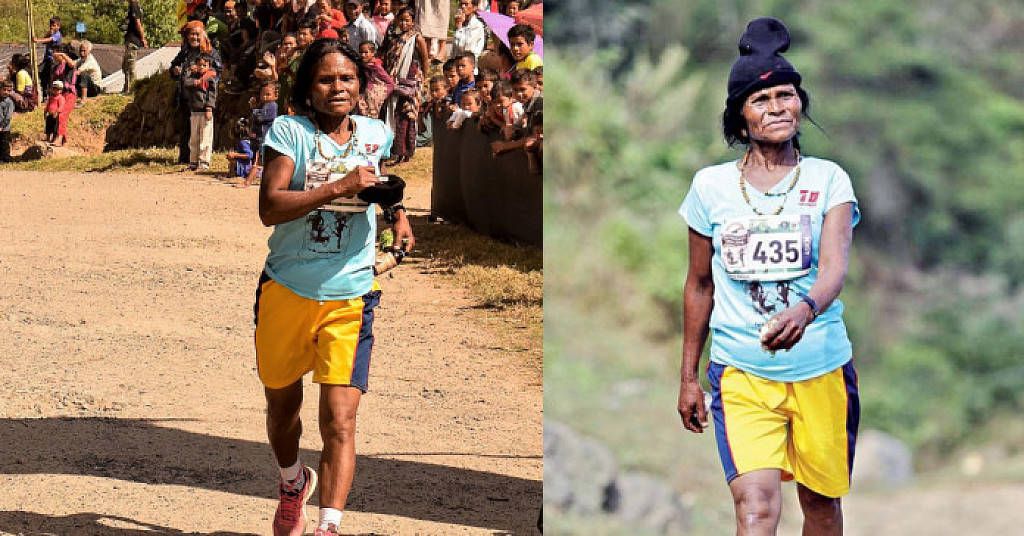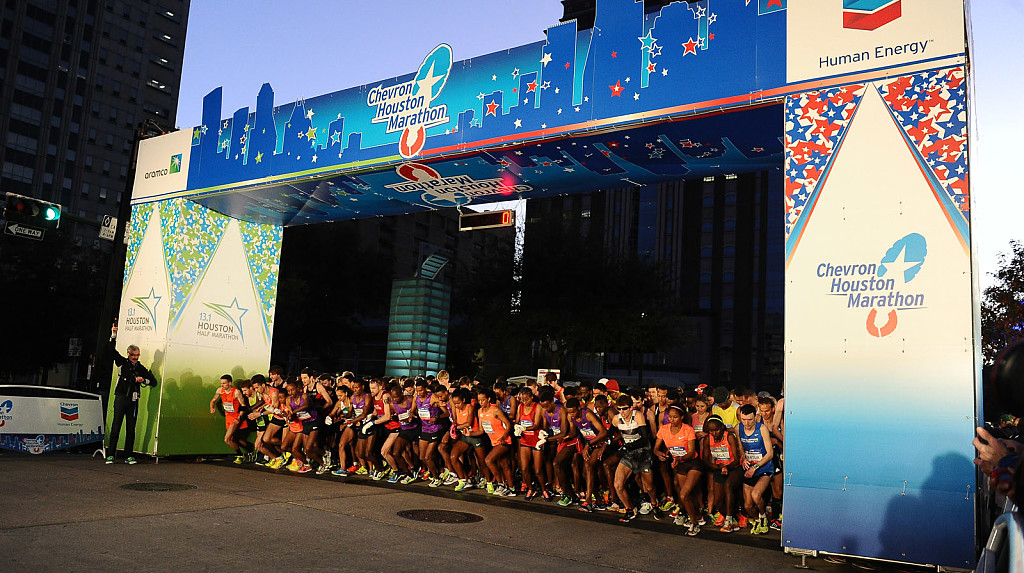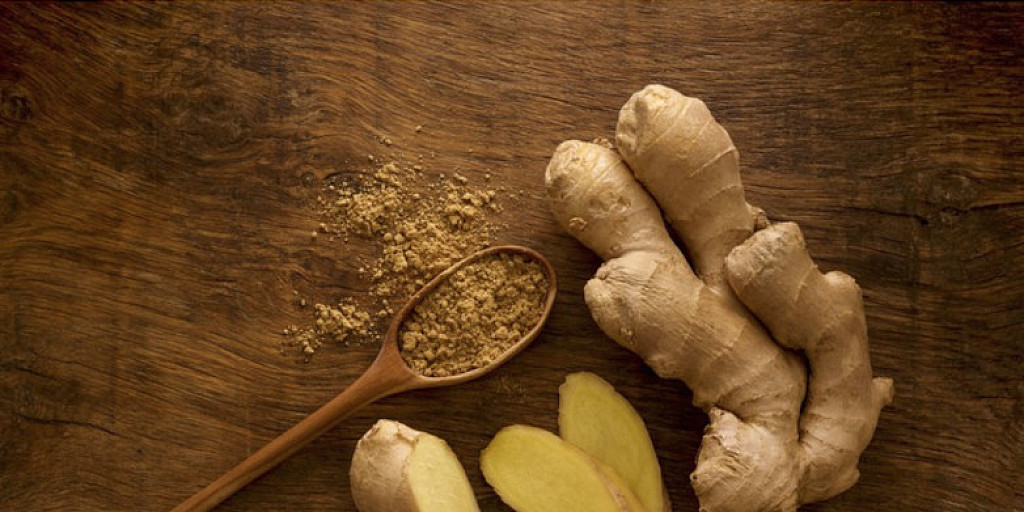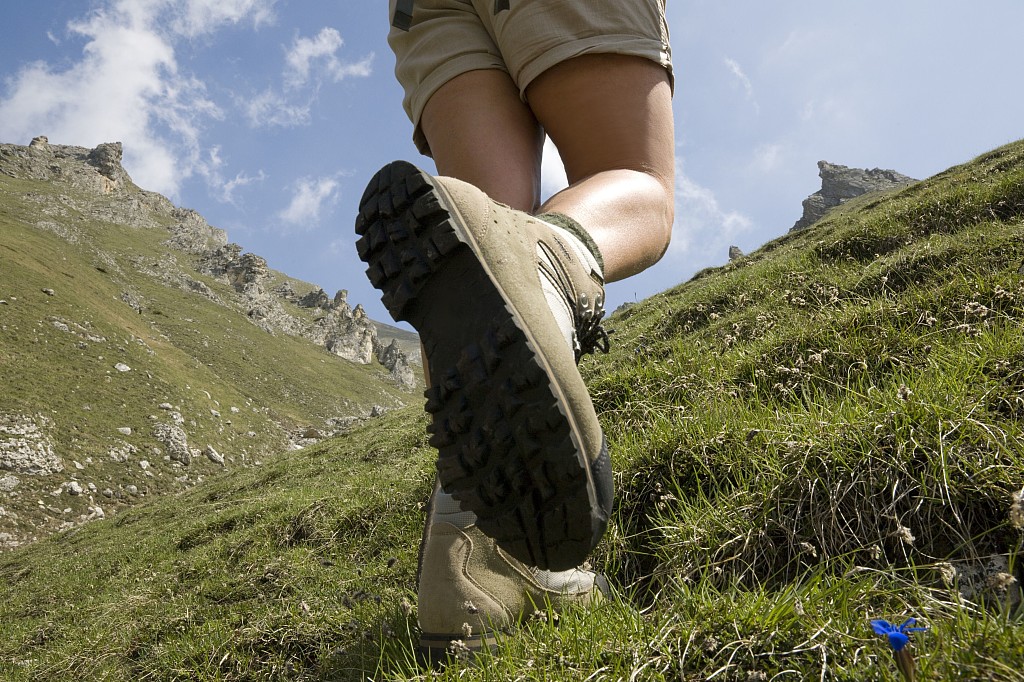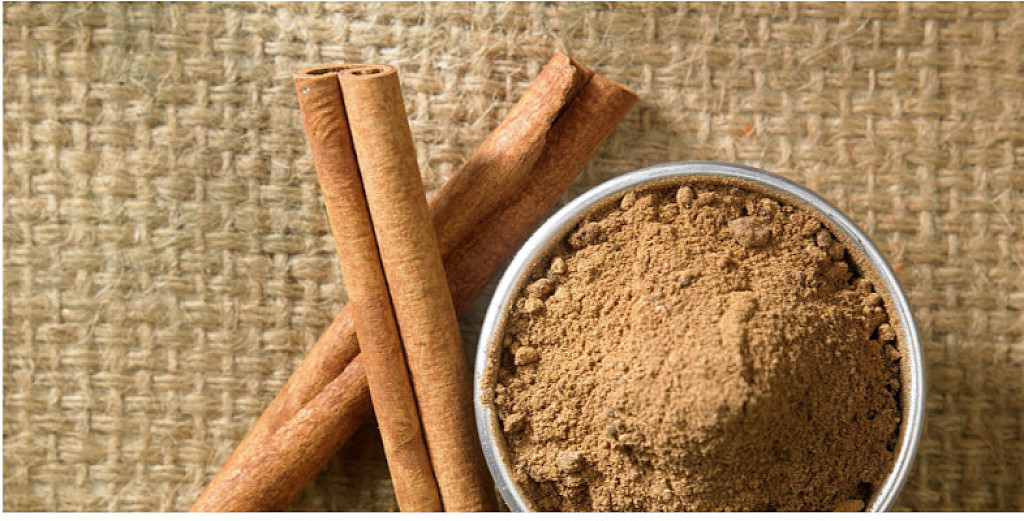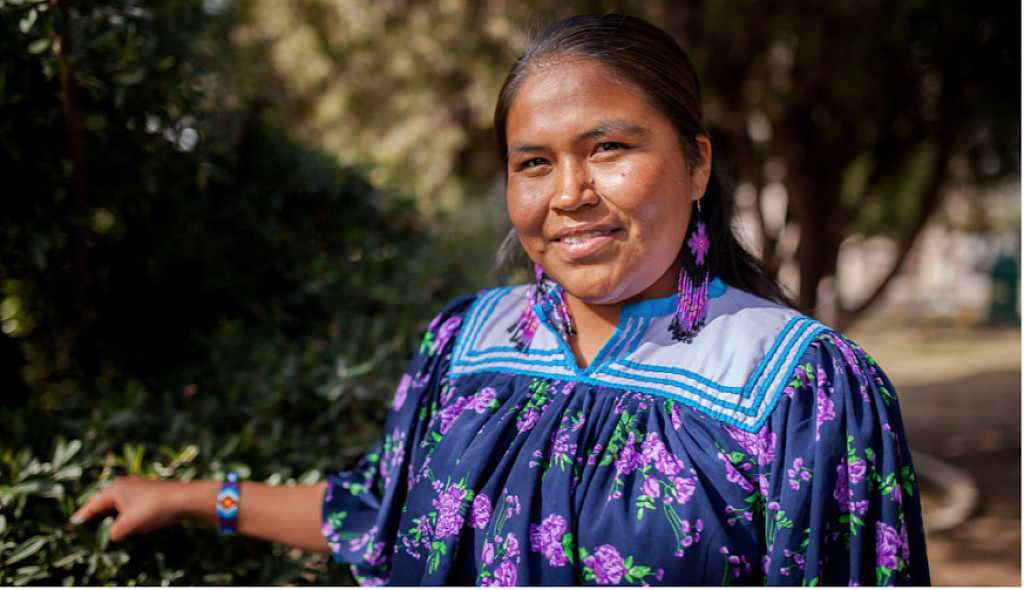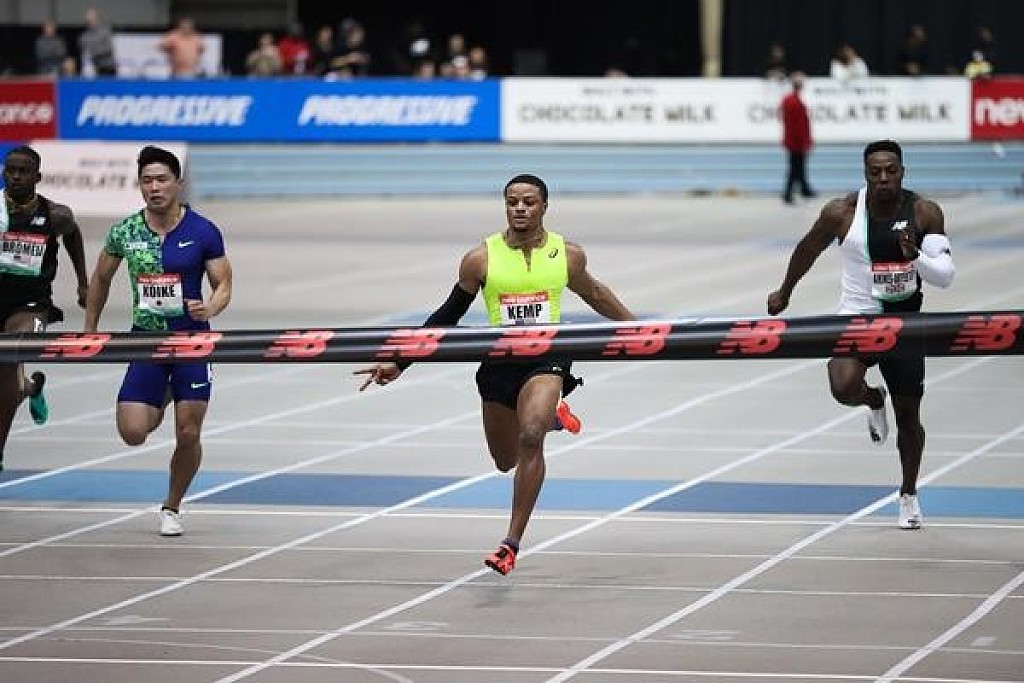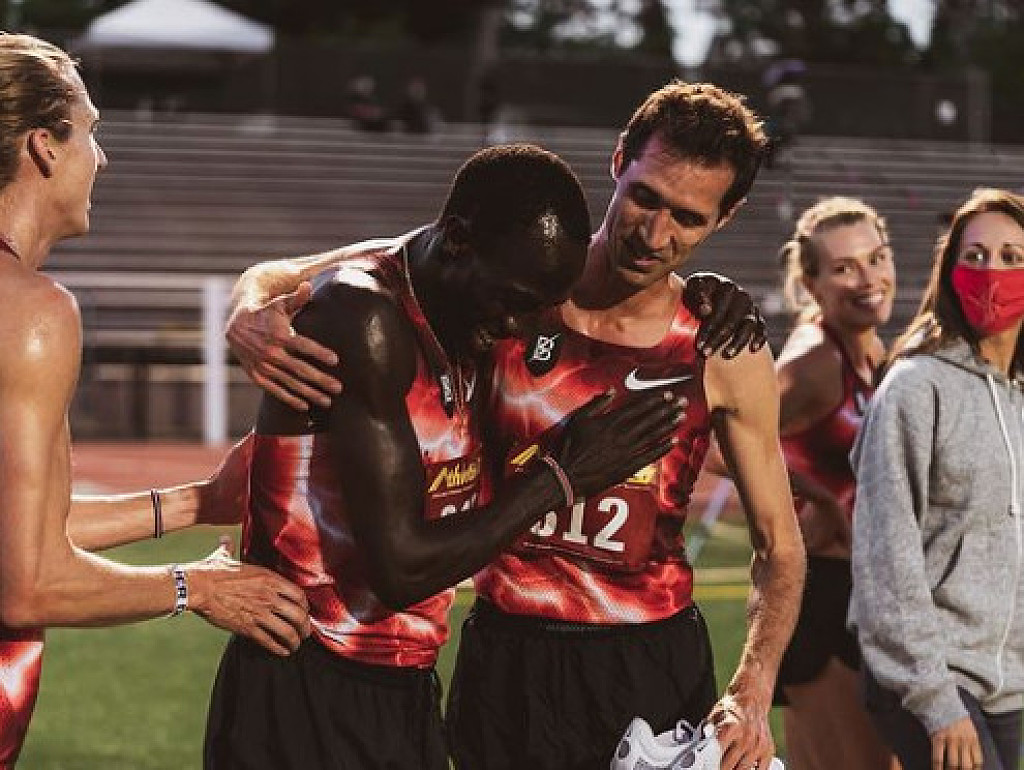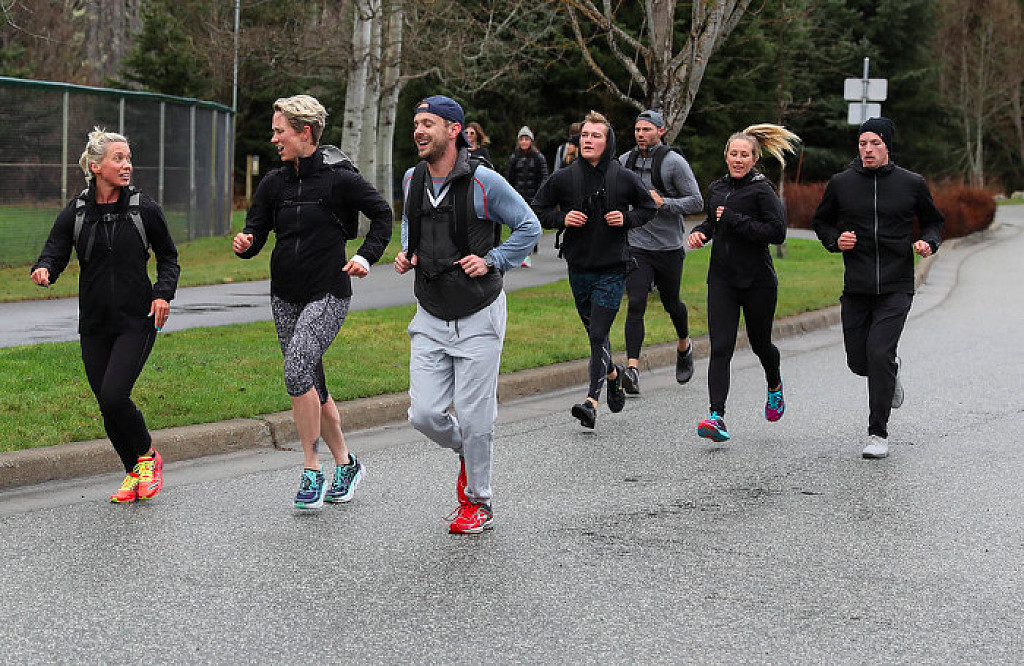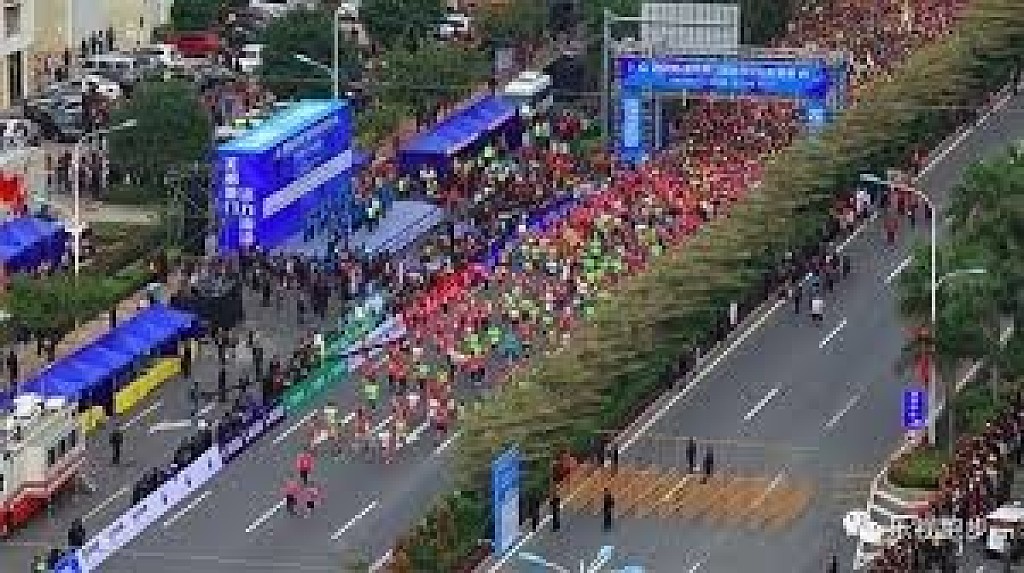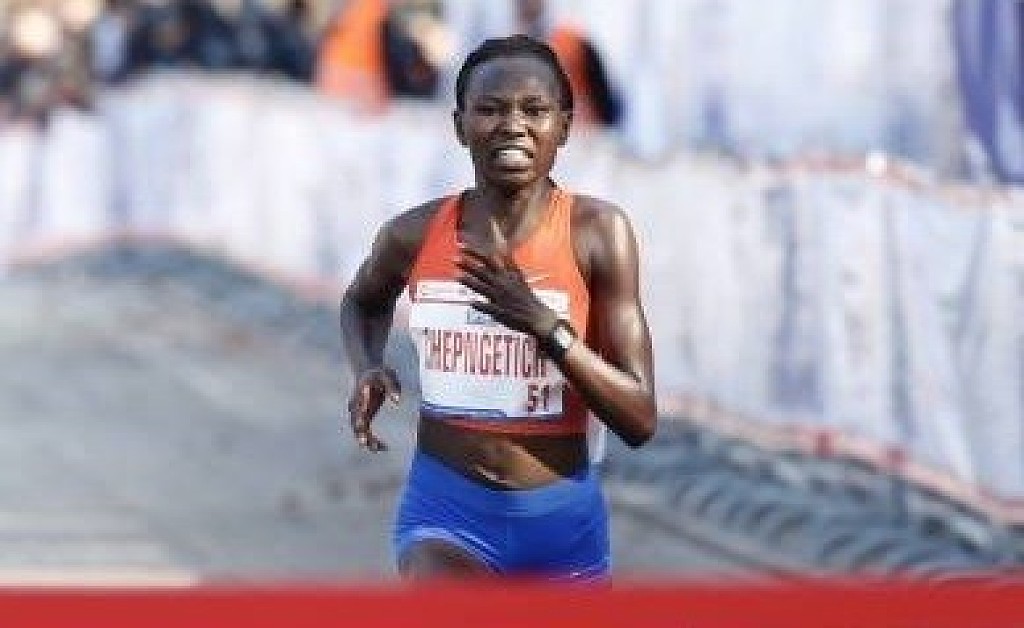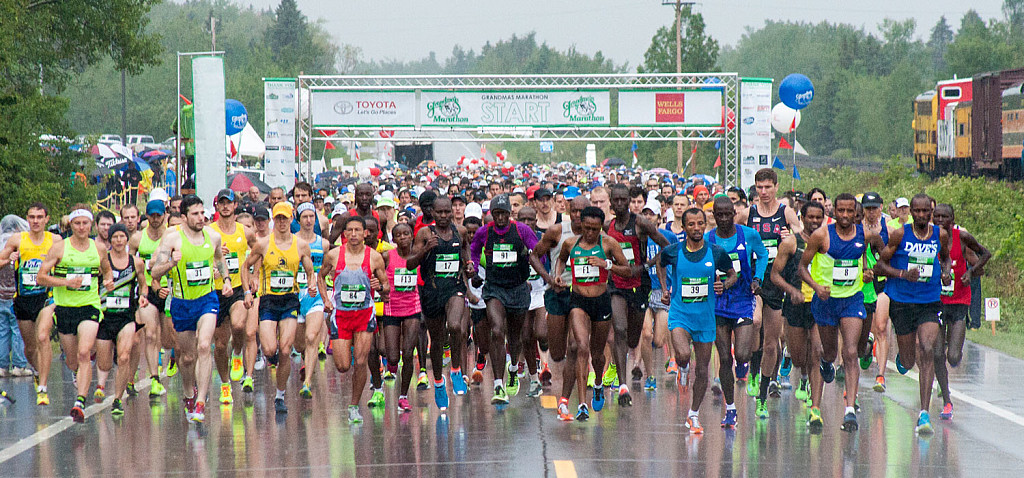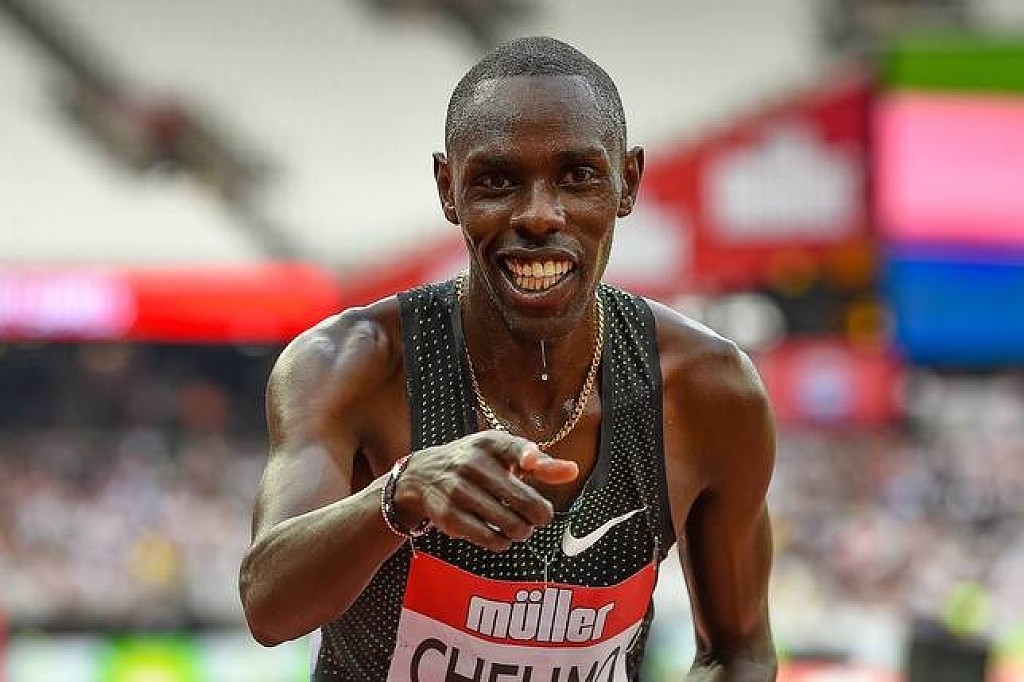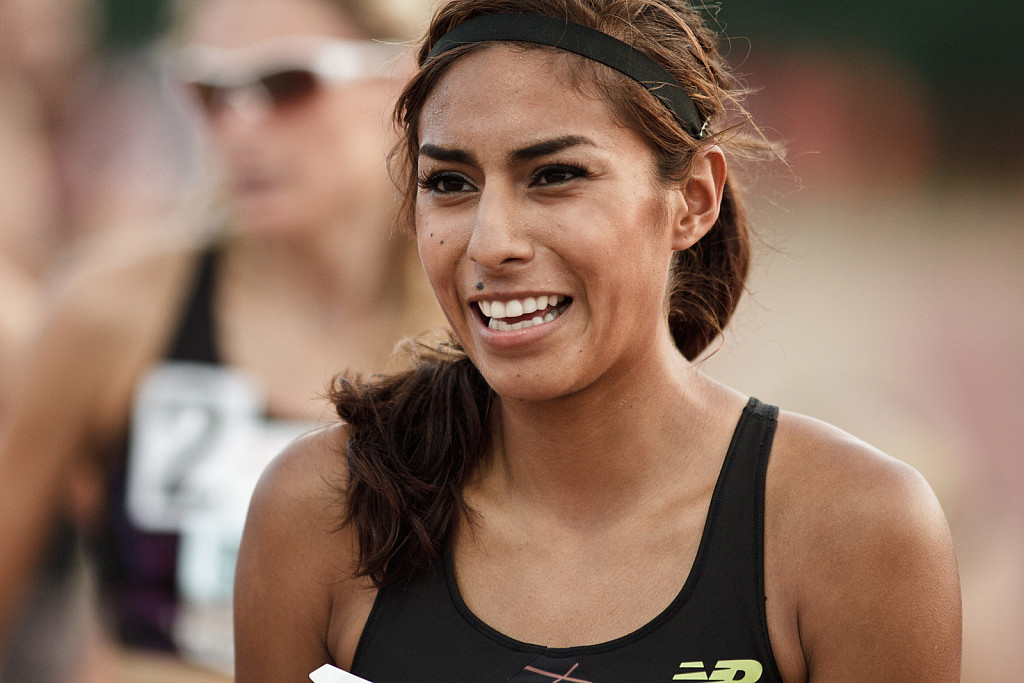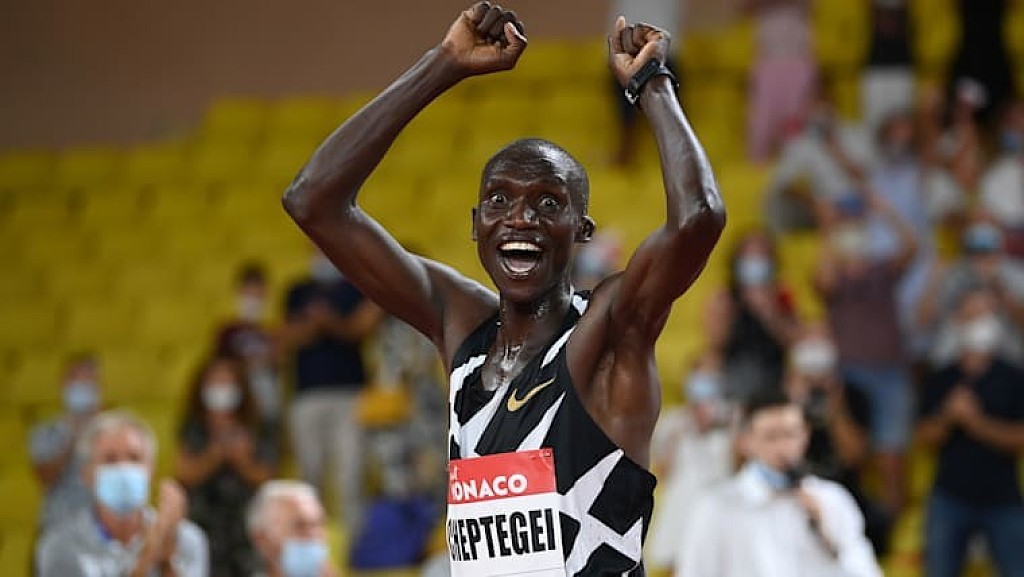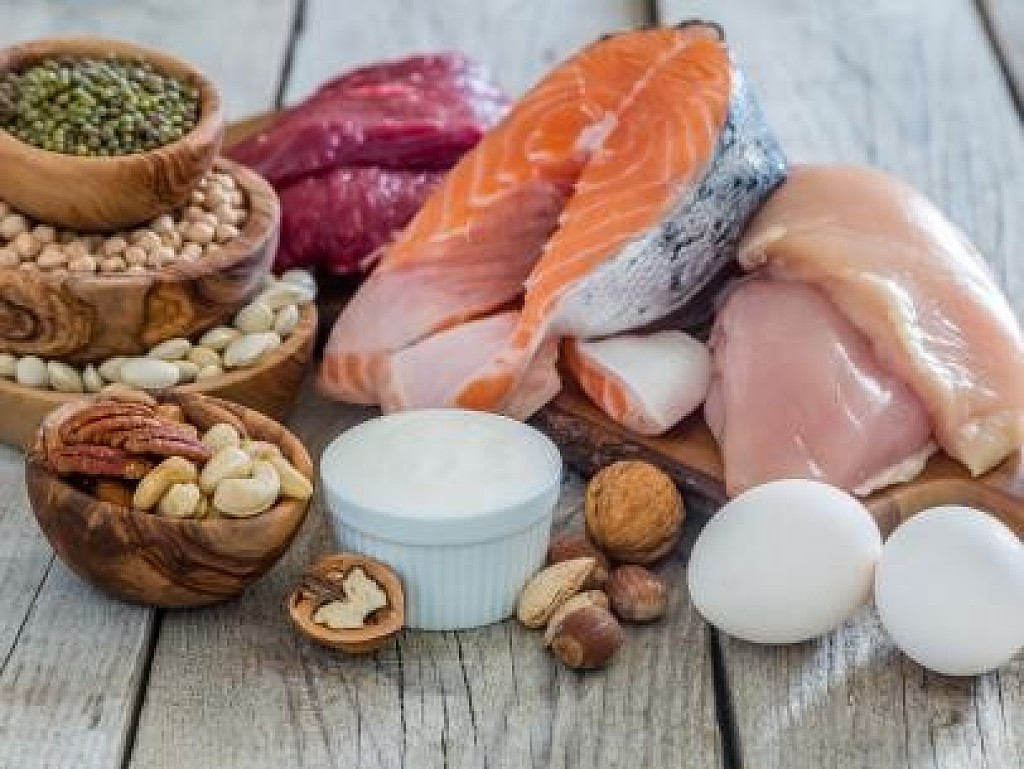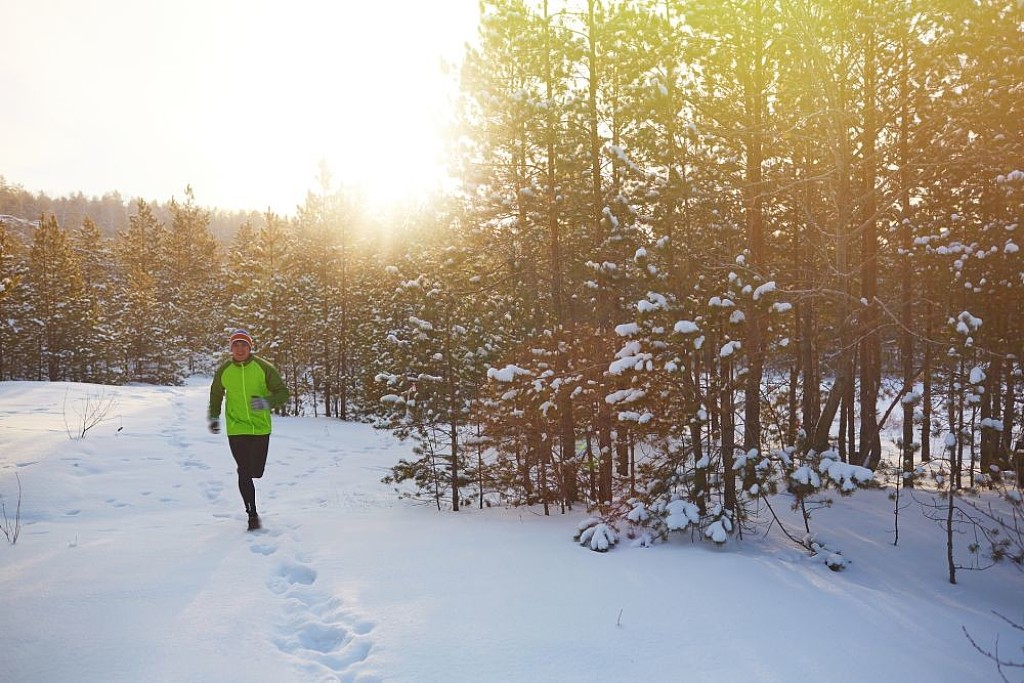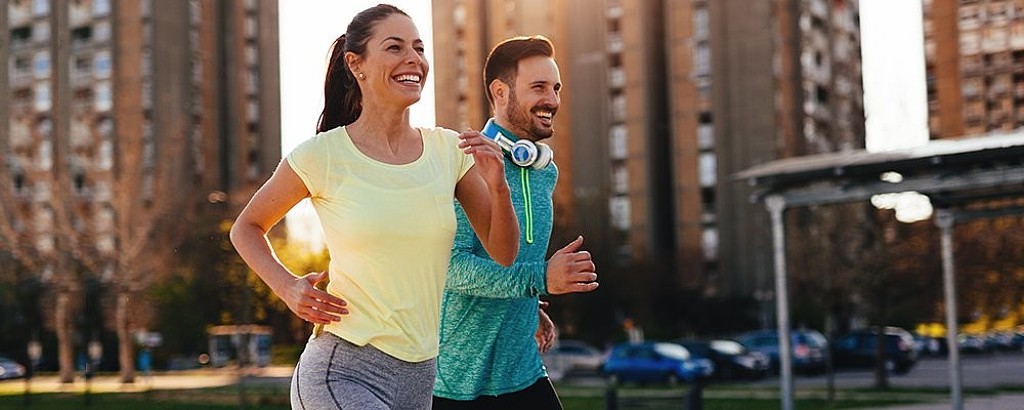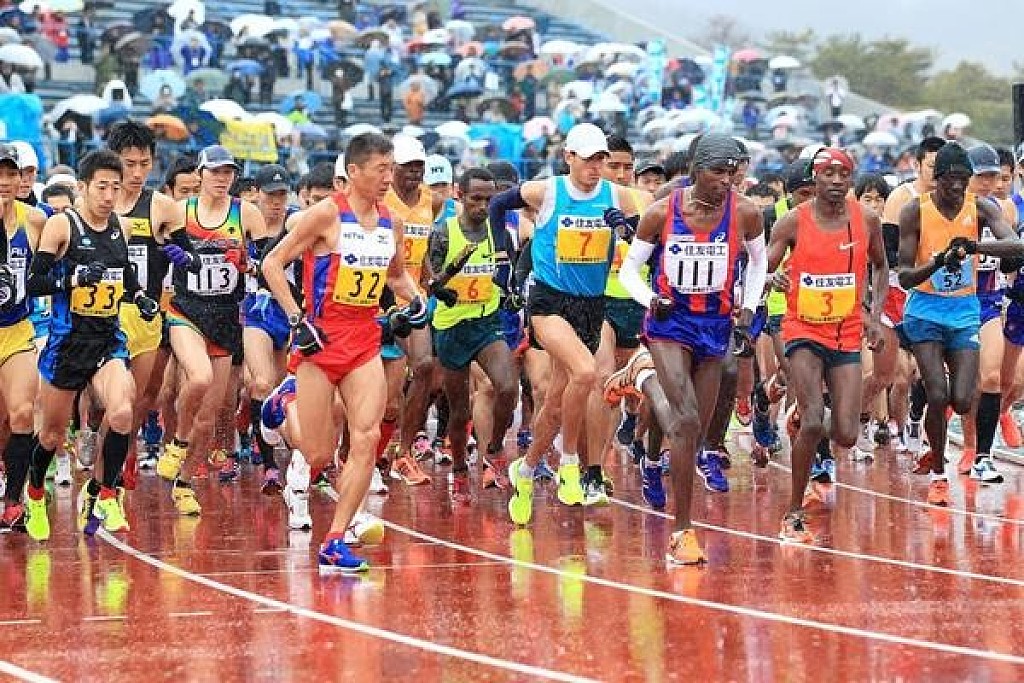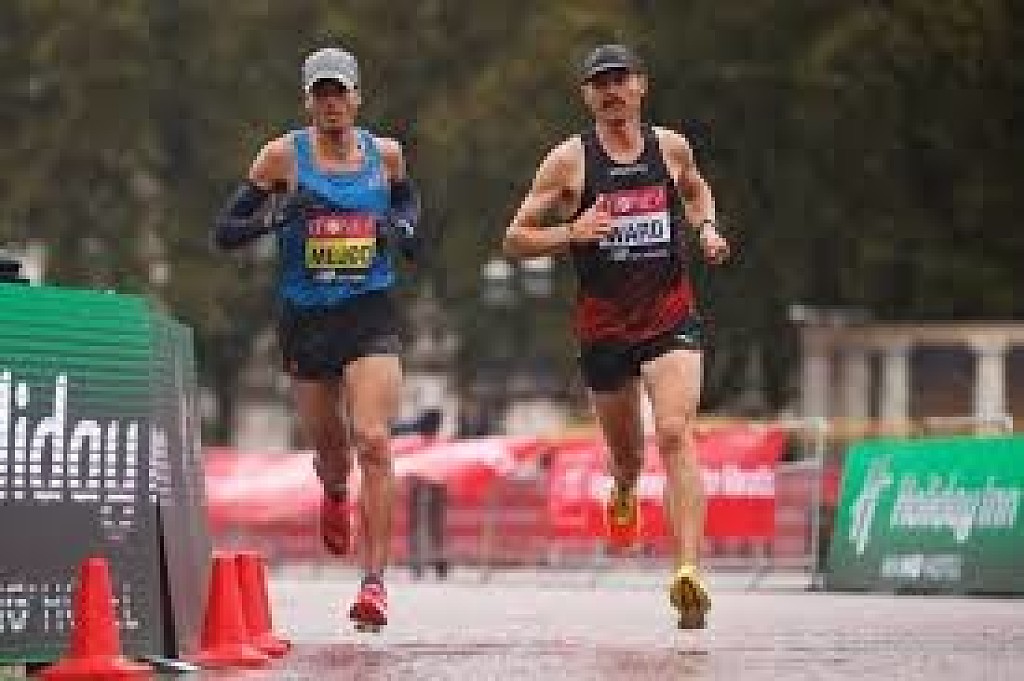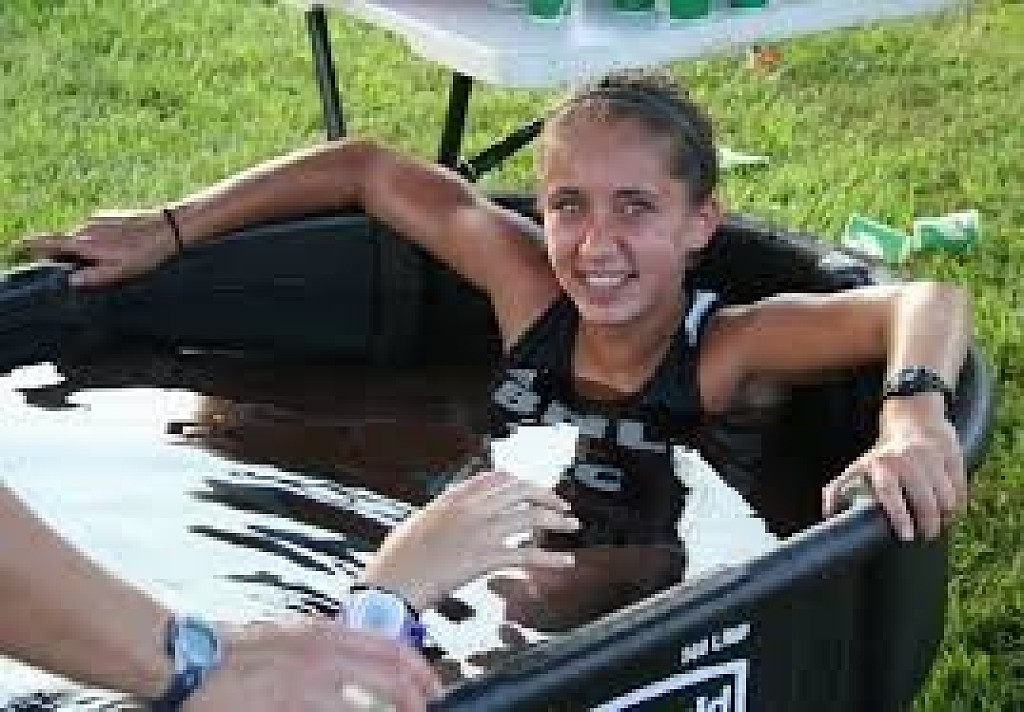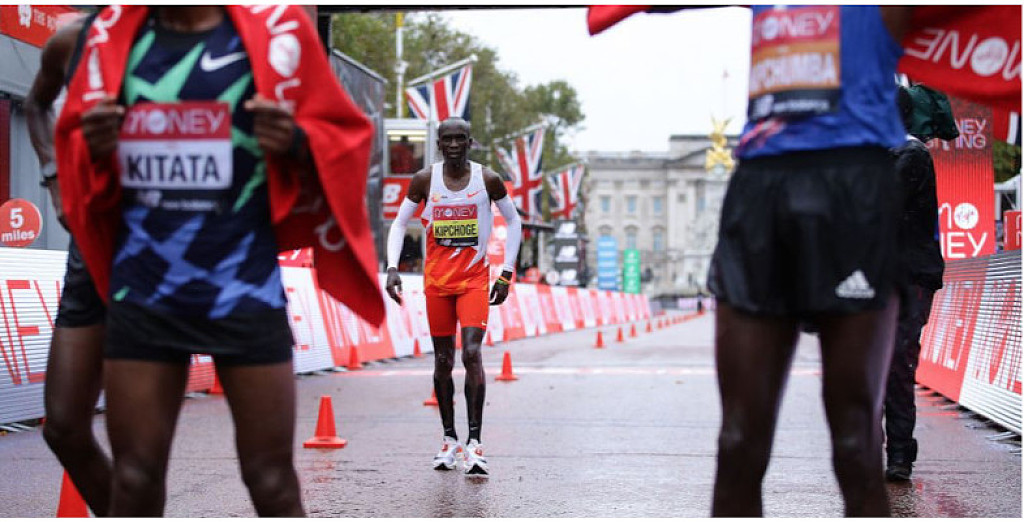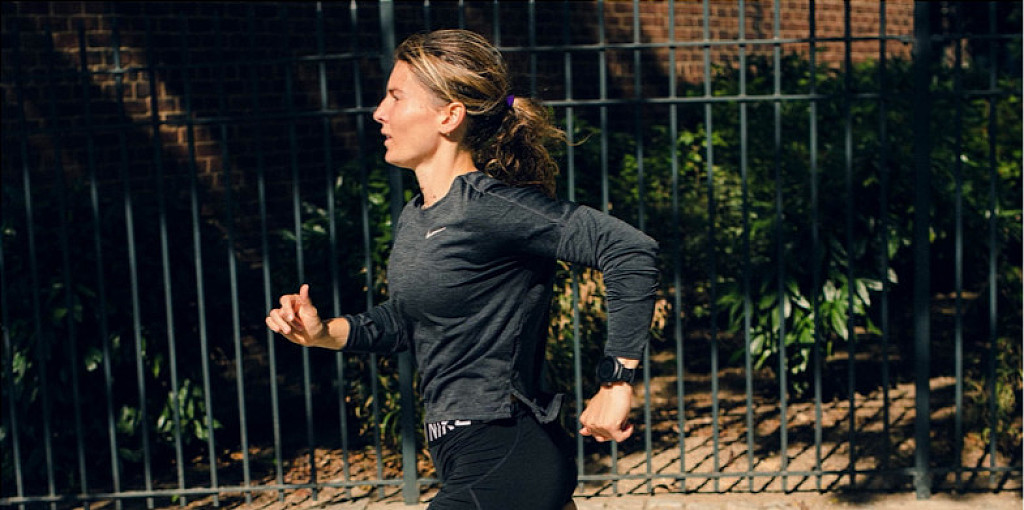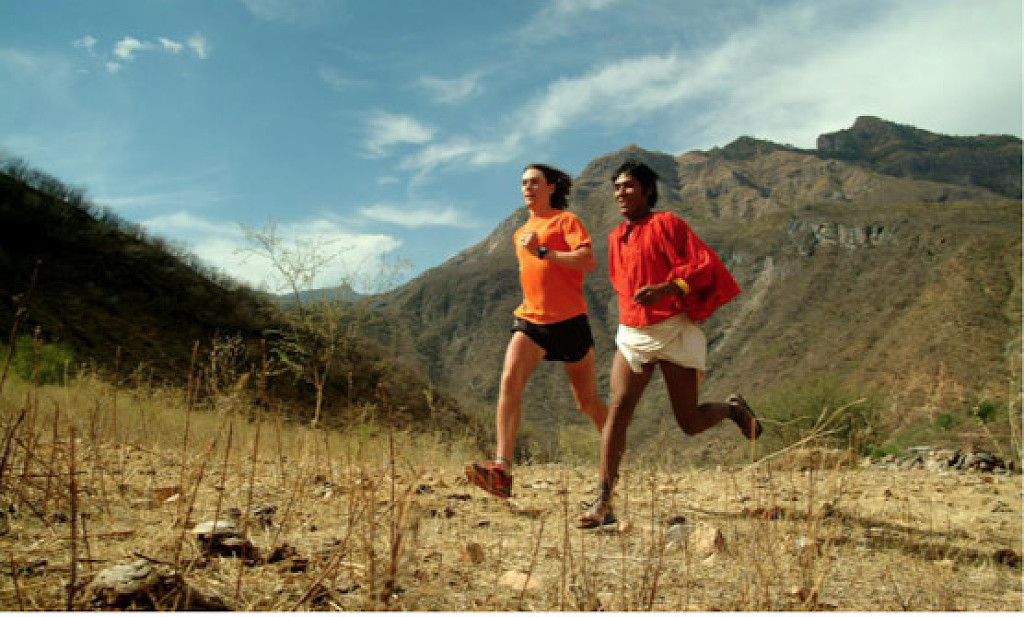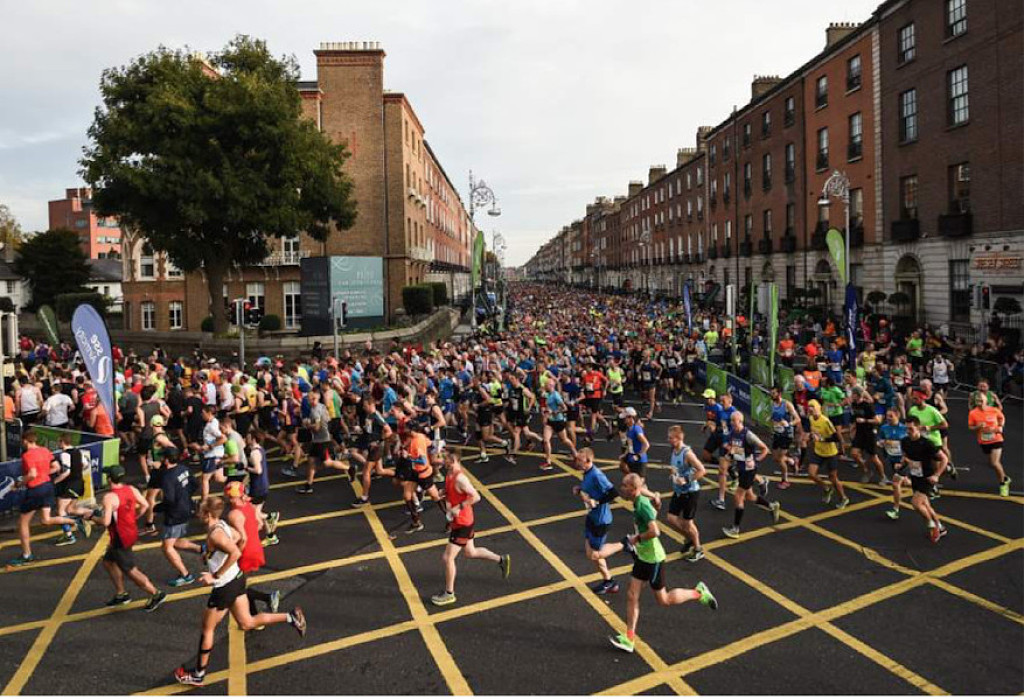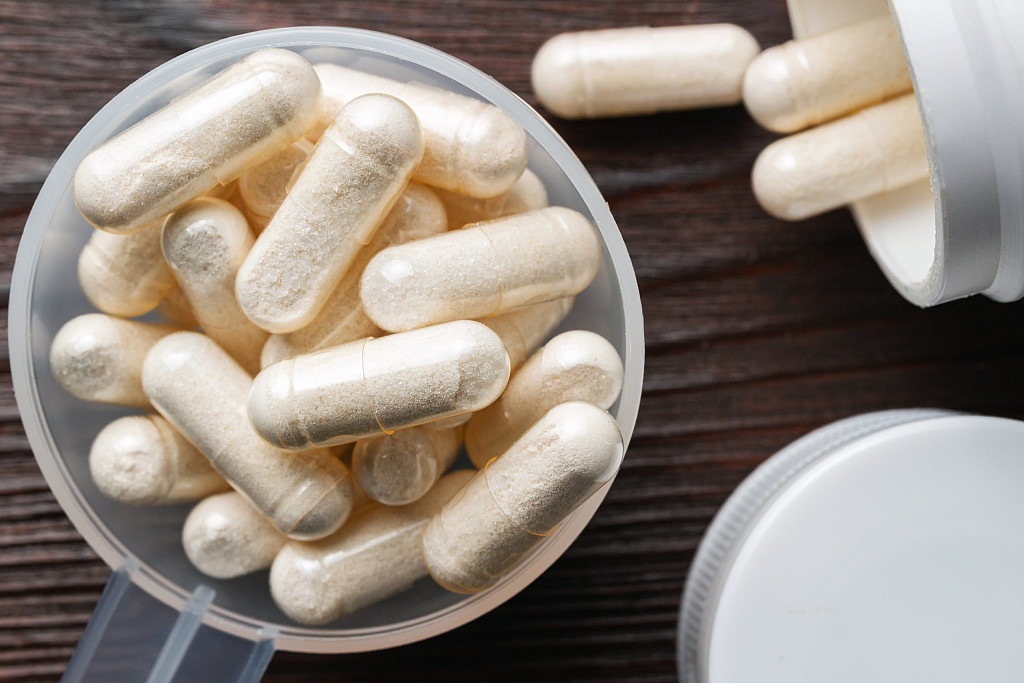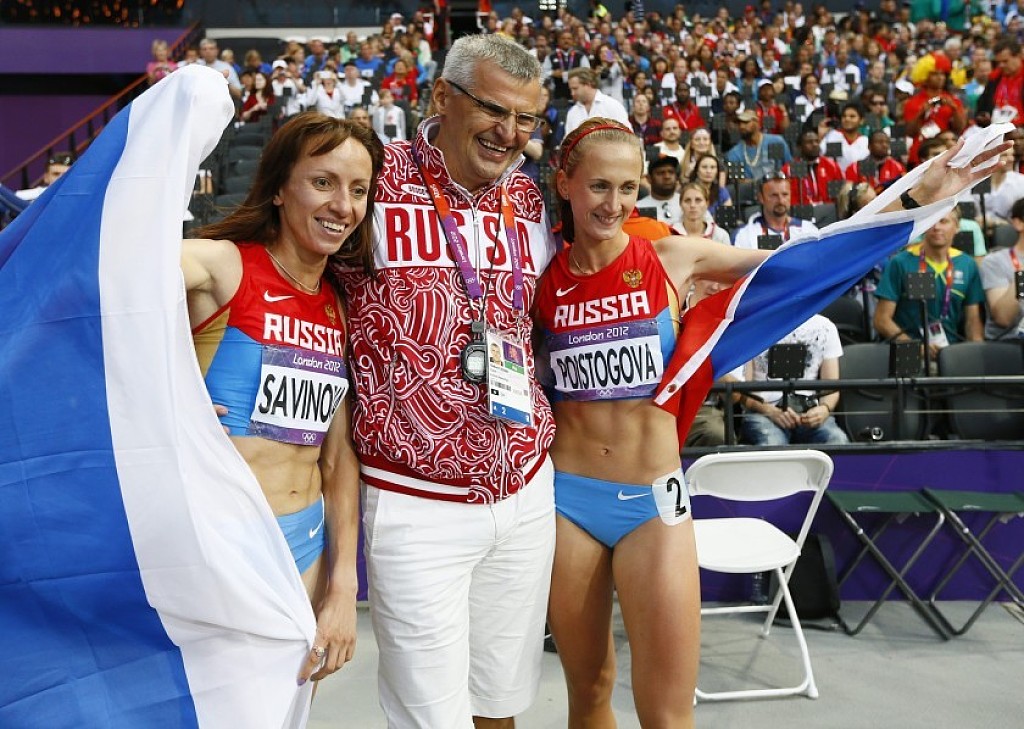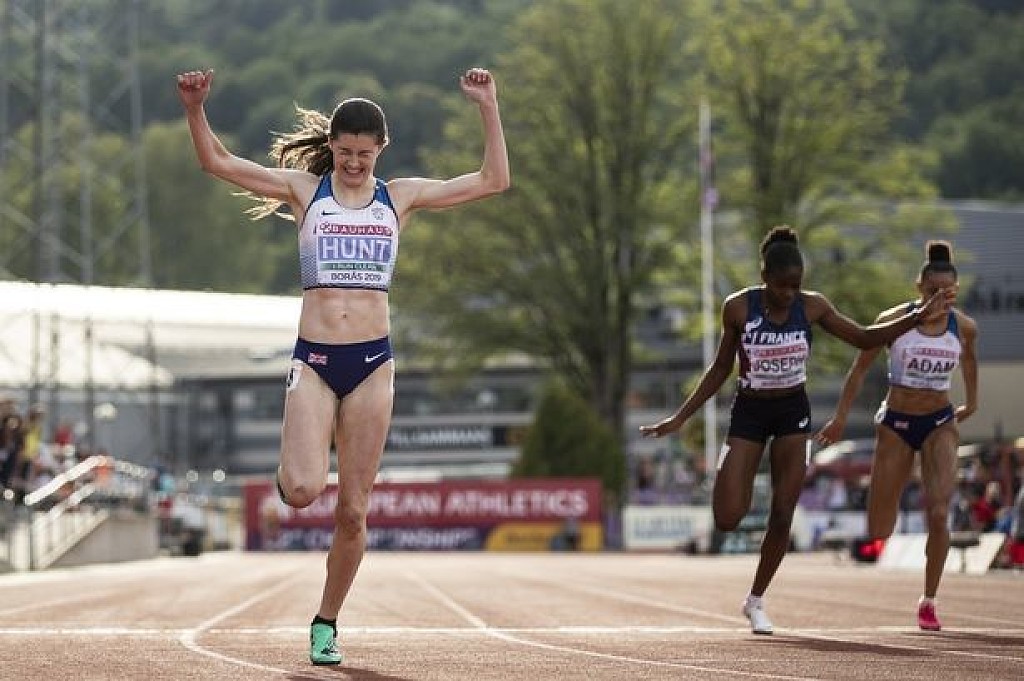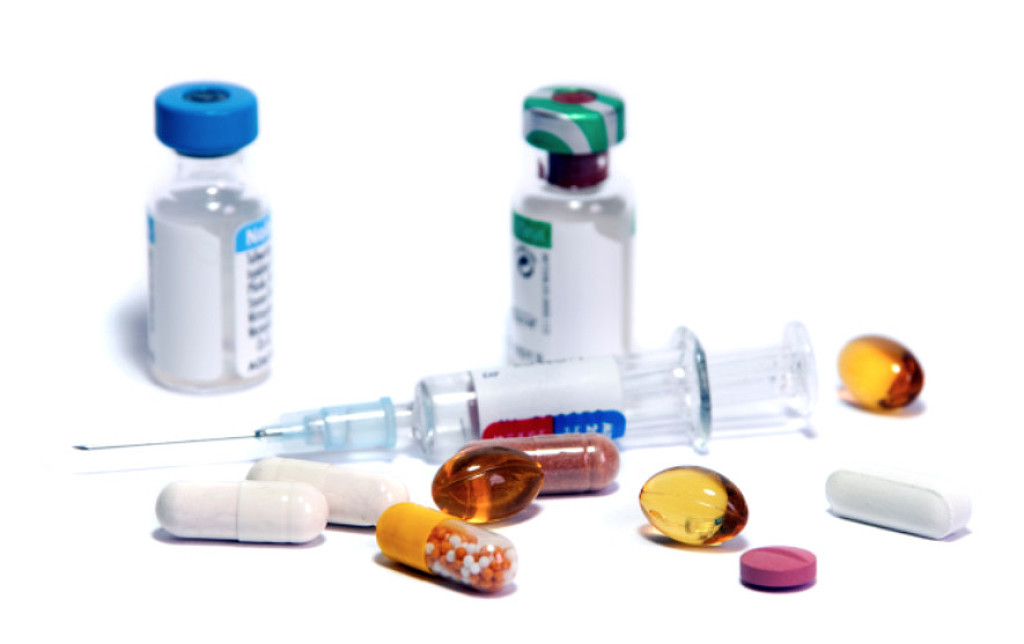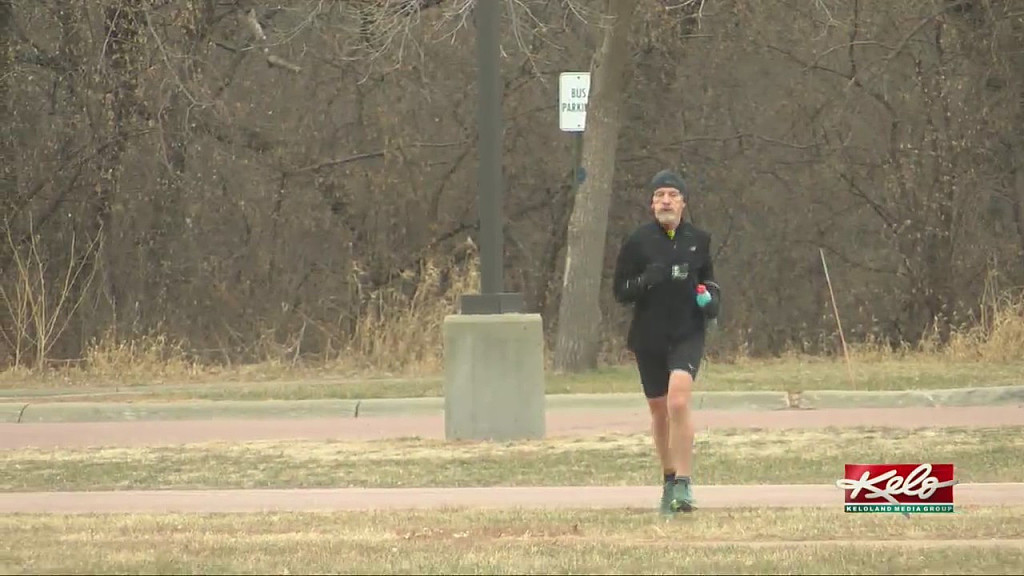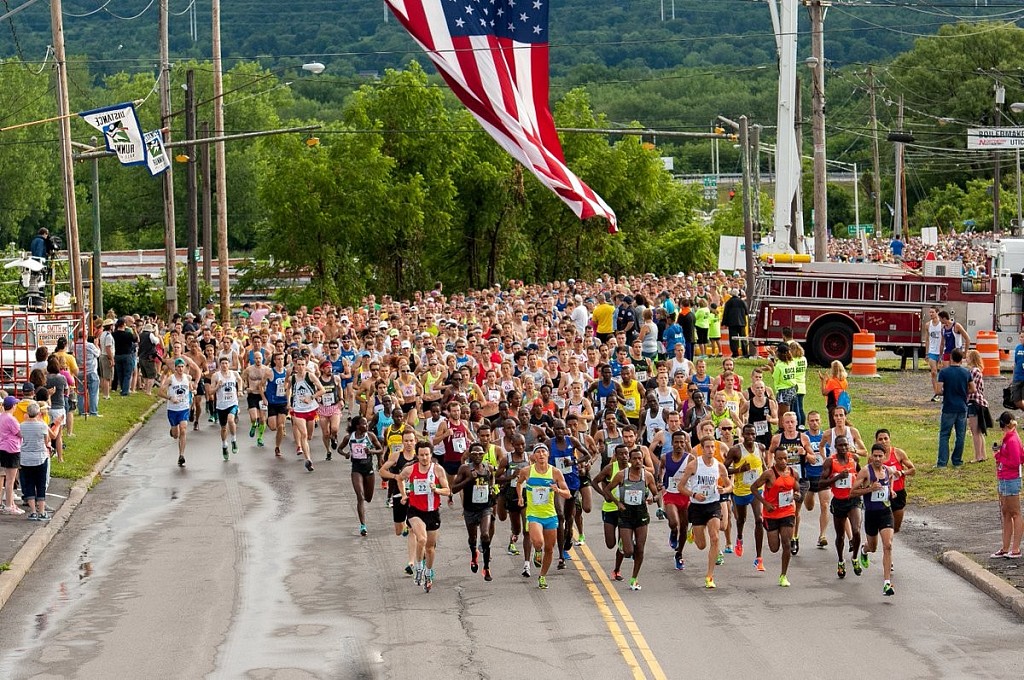Running News Daily
Running News Daily is edited by Bob Anderson in Mountain View, California USA and team in Thika Kenya, La Piedad Mexico, Bend Oregon, Chandler Arizona and Monforte da Beira Portugal. Send your news items to bob@mybestruns.com Advertising opportunities available. Over one million readers and growing. Train the Kenyan Way at KATA Running Retreat Kenya. (Kenyan Athletics Training Academy) in Thika Kenya. Opening in june 2024 KATA Running retreat Portugal. Learn more about Bob Anderson, MBR publisher and KATA director/owner, take a look at A Long Run the movie covering Bob's 50 race challenge.
Index to Daily Posts · Sign Up For Updates · Run The World Feed
Muruto camp in Nandi is a training base like no other
A dusty, winding road off Mosoriot-Kabiyet road at the Kamoiywo in Nandi takes you to Muruto junior athletics training camp.
It is along this four kilometre road, which gets muddy whenever it rains, that junior athletes train every day during school holidays.
The camp, which was established in 2015, has been the training base for athletes in track events including 100m, 110m hurdles, 200m, 400m, 800m, 1500m, 3000m, 5000m and 10000m. They also train for field events including high jump and pole vault.
With nearly 30 athletes in the camp located in an area described as the source of champions owing to the numerous athletes the region has produced, Muruto has over the years proved to be a unique camp.

Secondary schools, with the interest of establishing formidable athletics teams, have catered for the junior athletes' fees as they seek to nurture the best talents.
For the last five years, the training camp’s coach and founder Andrew Kipkoech says parents have not paid school fees because they encourage secondary school principals to support the students complete their education.
Several athletes, Kipkoech says, will sit for their KCPE exams this year and already, some secondary schools have expressed interest in admitting them.
He says the junior athletes represent their schools in different competitions and their performance in athletics and academics has been impressive.
According to the coach, the camp is on a mission to support juniors from humble backgrounds by growing their careers while seeking to secure them full scholarship opportunities in secondary schools and colleges.
“Those who were expecting to sit for their national examinations in 2020 were to receive their admission letters last December had education not been disrupted by the Covid-19 pandemic. We normally receive their admission letters as we break for Christmas and New Year festivities,” the coach says.
The annual Isaiah Kiplagat Memorial Ndalat Gaa cross country, which takes part in Nandi, was a perfect spot for athletes from the camp put their strength to test.
“I used to expose them to running opportunities in Ndalat Gaa, Tuskys and University of Eldoret cross country competitions where they offered a strong challenge to athletes from well established training camps,” he says.
According to Kipkoech, 2016 is was when the camp started mentoring the juniors through talks from elite athletes including former world 800m world champion Eunice Sum, Faith Chepngetich (former 1500m world champion) and 3,000m steeplechase world record holder Beatrice Chepkoech, among others.
(01/04/2021) ⚡AMPby Stephen Rutto
73-year-old Kmoin Wahlang is one of India’s oldest woman marathon runner
A mother of 12, a grandmother to almost 30 kids, Kmoin Wahlang is one of India’s oldest woman marathon runner.
Hailing from the north-eastern state of Meghalaya, Wahlang grabbed the eye-balls of sports fans and fitness enthusiasts when she made her presence felt during the Tata Mumbai Marathon in January 2019.
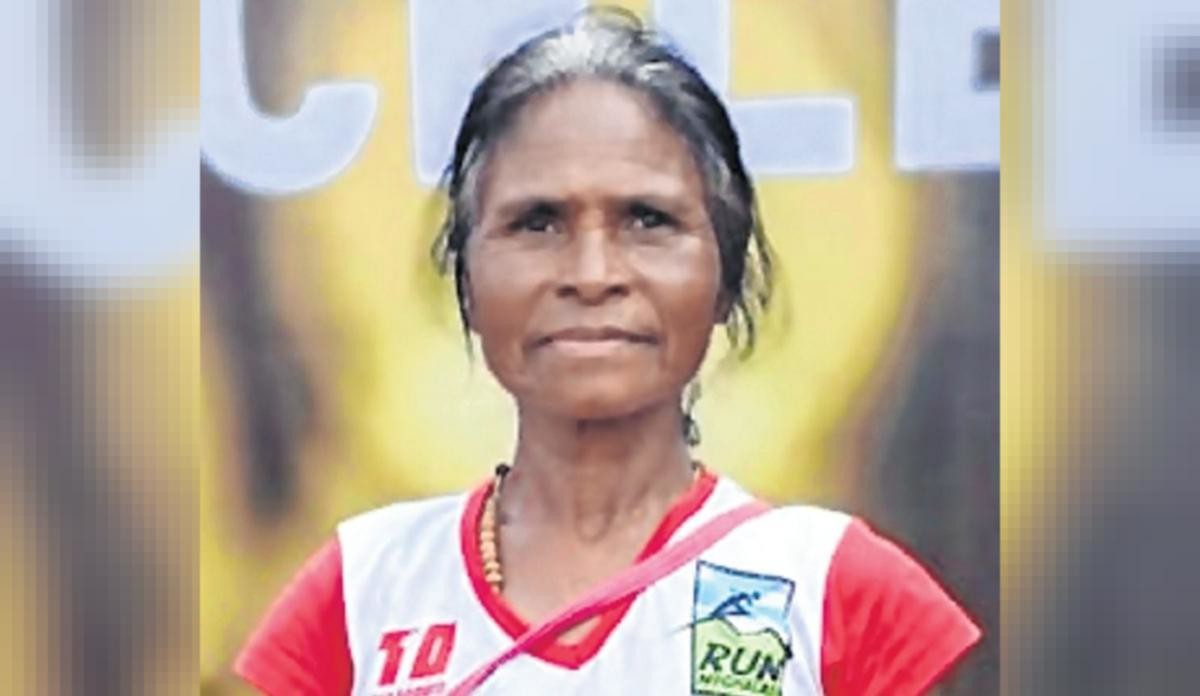
While many of us continue to blatantly state our age as an excuse when we fail to execute any strenuous physical activity, Wahlang successfully finished a marathon run at the age of 71 years!
She completed the 42.195km run with a timing of 4 hours 33 minutes and 55 seconds. If the age and the timings didn’t impress you, then note that Wahlang finished the marathon at 89th position out of total 520 women runners during that edition of the Tata Mumbai Marathon.
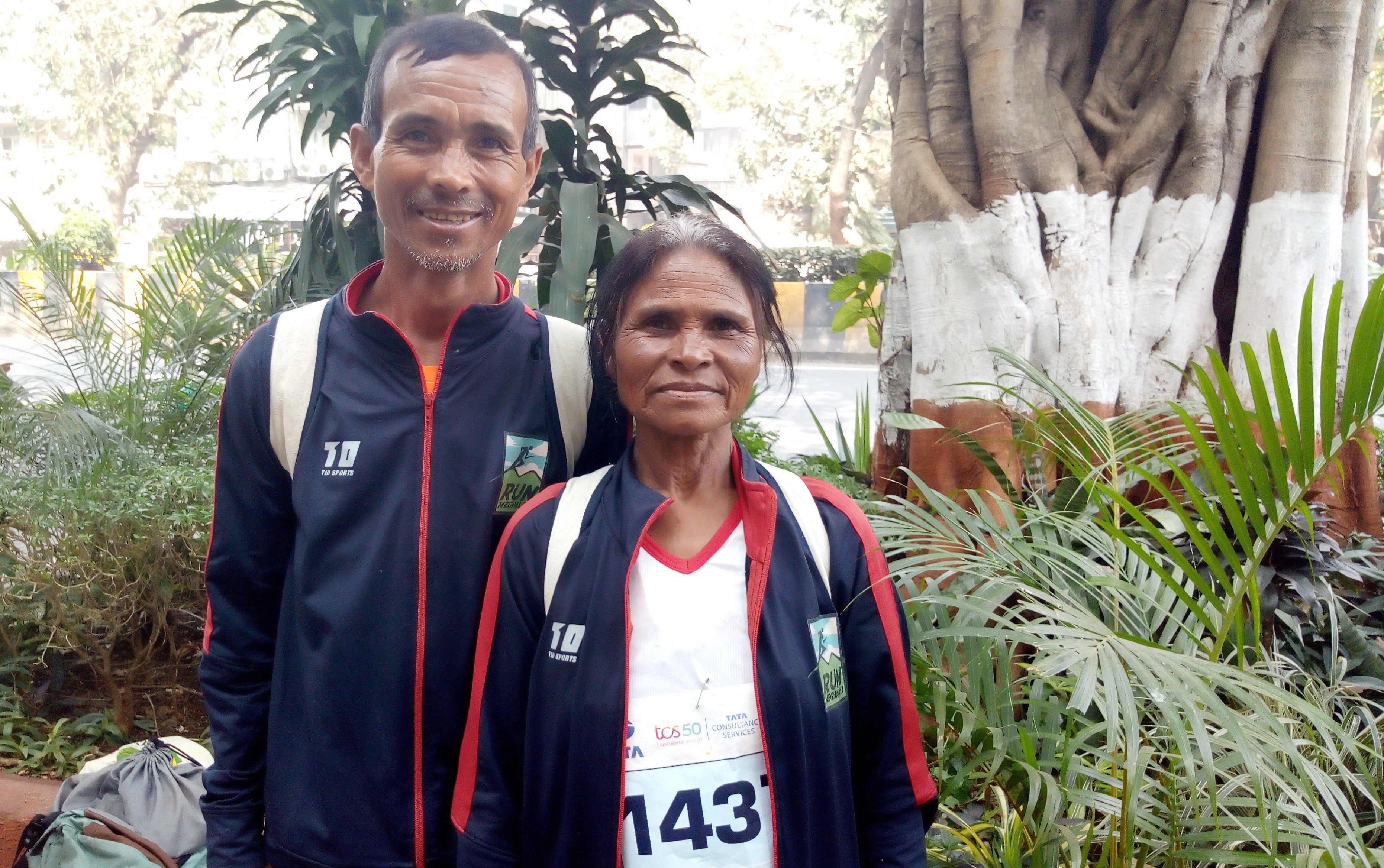
Though she can only converse in her mother tongue, Wahlang didn’t show any discomfort while running the Mumbai Marathon which incidentally was her first marathon outside the city of Shillong. Instead, she showcased extraordinary consistency during the entire course of the race and rarely dropped below the speed of 9km per hour.
Surprisingly, Wahlang’s running career can be traced back to almost two decades. The now 73 year old faced severe stomach issues after the birth of her twelfth child way back in 2001. She started walking extensively to counter this health issue and slowly this walking made way for running.
Wahlang was first discovered by a non-profit organisation called RUN Meghalaya and has since been participating in various marathons in her home state. She had even completed the 45km run in the Mawkyrwat Ultra Marathon before coming down to Mumbai for the Tata Marathon.
(01/04/2021) ⚡AMPby Abhijit Nair
2021 Chevron Houston Marathon to kick off virtually this week
Daniel Dannug and his close-knit running group were in the middle of a training run when they heard it:
“Six feet, gentlemen. Six feet!” a stranger yelled as he drove by a Northeast Houston running trail.
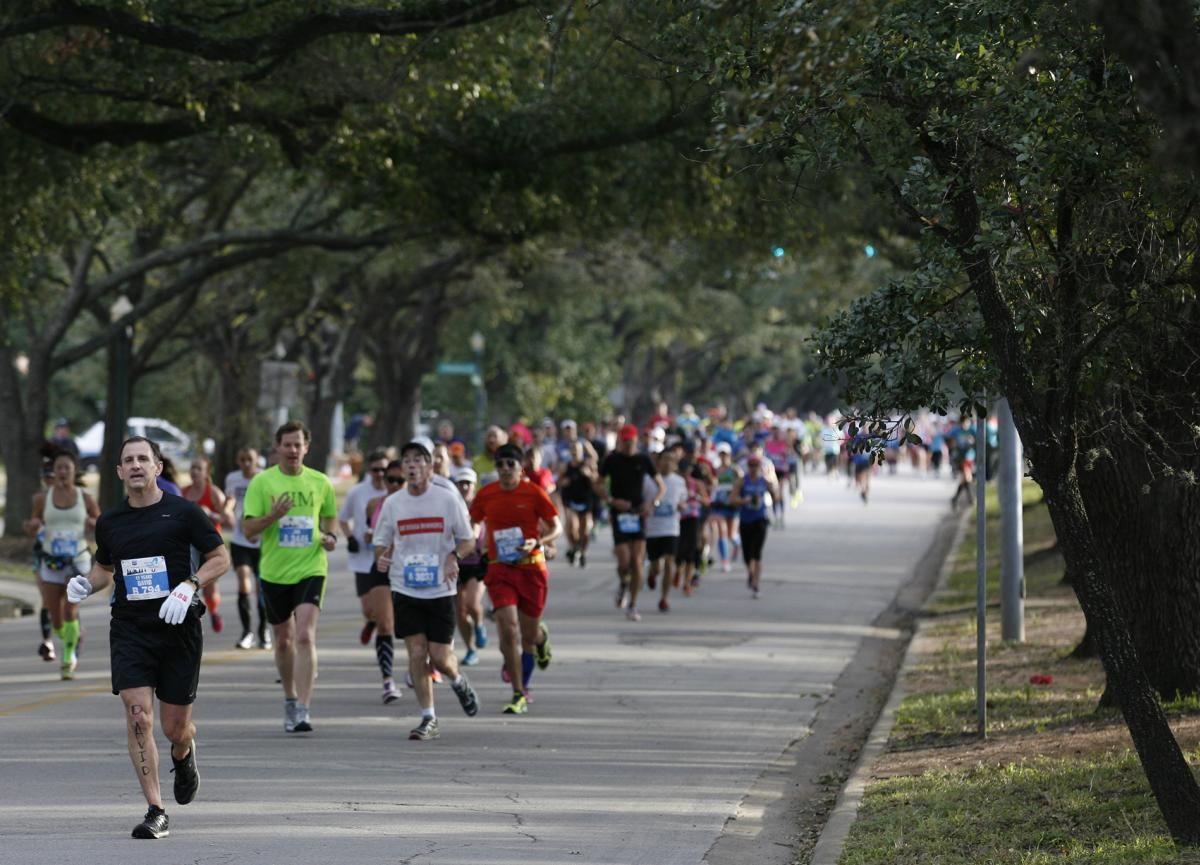
Dannug acknowledged that his running crew goes against some COVID-19 safety guidelines recommended by the Centers for Disease Control and Prevention: No one lives in the same household and some have higher exposure rates because they don’t work from home.
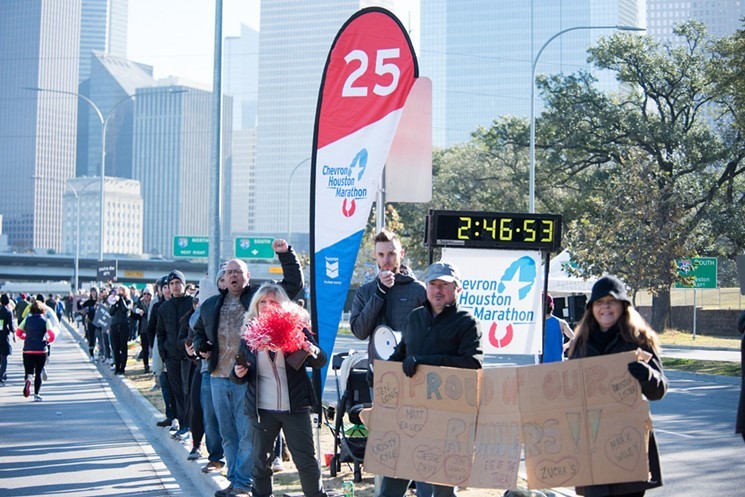
But they need each other to accomplish their goal of running a marathon, he said.
“We’re all first-time marathoners, and that’s what motivated us to continue pushing forward; this is all brand-new territory for us,” Dannug, 39, said. “It’s me and four other people every Saturday going out to train. We had this mantra: Keep pushing. It’s a strong mindset to try to achieve, and we’re seeing it through.”
Dannug co-founded Champions Running Association, a run club serving Houston’s northeast suburbs with 180 members, in 2017. Back in April, Dannug ran his first virtual race feeling what he called a “virtual high.” That quickly turned to virtual fatigue, and he lost all motivation to run solo by the summer.
“I took a break after that. I knew I wanted to save any motivation for doing a virtual race for the Chevron (Houston Marathon),” he said. “It would have been so much easier to fold, but that’s not how I’m wired and I’m hyped for other people.”
On Jan. 17, Dannug and 21 others from Champions Running Association will run together for the 49th annual Chevron Houston Marathon, which will be held virtually for the first time.
The event’s three races — a 5K, half-marathon and marathon — can be accomplished any day, time or location between Jan. 8 and Jan. 17. The only rule is once a race is started, it must be finished in the same go but there is no six-hour limit, like in typical years.
More than 9,300 runners signed up, said Muffy King, marathon marketing director. Registration is closed since virtual capacity was met, she said, adding that orders for T-shirts, finisher medals, drinking mugs and swag had to be ordered far in advance.
About 200 runners have registered to run all three events, which is impossible in a normal year, King said. Participants can run the 5K one day, the half-marathon another day and a marathon on a third day.
(01/04/2021) ⚡AMP
by Julie Garcia
Chevron Houston Marathon
The Chevron Houston Marathon offers participants a unique running experience in America's fourth largest city. The fast, flat, scenic single-loop course has been ranked as the "fastest winter marathon" and "second fastest marathon overall" by Ultimate Guide To Marathons. Additionally, with more than 200,000 spectators annually, the Chevron Houston Marathon enjoys tremendous crowd support. Established in 1972, the Houston Marathon...
more...Running Is Hard. Here’s How I Fell in Love With Discomfort
When you know a a workout is going to hurt, use these strategies to embrace the challenge and get stronger in the end
If you think about it too hard, running makes little sense. We are making a choice to suffer, to feel hardship, to sweat and ache and get uncomfortable. It’s no wonder our nonrunning friends think we’re all a little weird.

So then why do we do it? For me, it comes down to this: Running trains me how to hurt. The end of a hard workout is a benchmark that tells me how much hurt I can handle. It gives me the confidence to hurt a little more the next time. And a little more, and a little more.
A few years ago, I read a story about a man in his 50s who quit his job in IT to start a North Brooklyn pizza shop because he loved cooking Italian food for his family more than anything. His story resonated so much that I sent him a message on Instagram. He asked me about my dreams. I told him, but gave him excuses about why I couldn’t go after them. His response: “The walls of fear are paper-thin.”
Those words stuck with me when, later that year, I ran the NYC marathon. It wasn’t my first, but there was something undeniably different. It was me. I was stronger. I dug deeper. I endured more physical discomfort than ever before. At the finish line on that perfect fall day in Central Park, I felt overwhelmed with joy, but filled with pain. Tears streamed down my face, and yet I was smiling from ear to ear. It is a moment so strong and powerful that it is almost confusing when it happens. You know what I mean if you’ve experienced this. It is in this very moment that you learn to love and appreciate pain and discomfort.
This is not because suffering is glamorous. Rather, it is when you recognize that the obstacles and discomfort you thought were blocking you from the finish line are, in reality, paper-thin. If you continue to push through and persevere, you will find that victory and success are waiting on the other side.
The world will continue to try to add more weight to your shoulders. There will always be an obstacle to overcome, because life’s challenges never stop. But running has taught me not to fear the discomfort and pain, but instead to use it as a tool that achieves successes and overcomes difficult things.
The common problem here? Pain and hardship suck. It’s much easier and more comfortable to watch those weird runners through the window. But if you stay put, you’ll never know how thick those walls really are.
I stay connected to things that are not easy, because life is full of great joys, but it comes with hard work, and I’m better in my relationships, I’m sharper professionally, and I have a greater sense of appreciation for others when I use running and strength-training as the valuable tools that they are to continue to be my best self.
So the next time you are in a really hard workout, one that you know is going to hurt, here are my strategies to embrace the challenge and get stronger.
→ Emotion is a powerful force
It will tell you what’s meaningful to you. Use your emotions to fuel you. Get mad at the bar when you keep missing your lift. Use running to work through tough decisions happening at your job. Allow movement to provide opportunities to work through things you are facing both professionally and personally. Extreme emotions allow you to experience extreme efforts. Feel the pain. Don’t try to go somewhere else or put your mind in another place. Instead, embrace it. Sit in it. Settle into it and stop trying to avoid it.
[Download the All Out Studio App for more amazing at-home workouts!]
→ Accept that it will not be easy
Progress is hard. Tough efforts will be tough. Instead of avoiding hard work and discipline, start to welcome it. Start to look for it, maybe even crave it. This provides you with a chance to accept and appreciate the fact that a challenge will have moments of extreme difficulty and that you might be tempted to quit. Keep going. Stop looking for a shortcut or an easier path to overcome moments of hardship. Once we accept that there are no shortcuts, we become patient. We start to understand consistency. We start to appreciate the process and we realize that there are no quick fixes to reach success. After all, would success taste as sweet if we overcame nothing to get there?
→ Train with people who are more fit than you
They have been exactly where you are at one point in their running life. They’ll keep you accountable and show you what’s possible in your running future if you dig deeper.
→ Fill the bucket a little bit every day
The key to success in anything is patience, persistence, and consistency. It’s not one big training day that matters. It’s weeks, months, and years of training that matters. Progress comes in small doses compounded over time, which means that one bad day—one run that hurt too much—isn’t going to derail your improvement. Keep consistent and you will get better.
→ Stop talking about it
Action over words. Talking gets in the way of doing. The people who are really doing it aren’t sitting around talking about what they are going to do. They are showing you.
→ Stop looking for external rewards
The reward for overcoming difficult things is simply that: working through a challenge and becoming better because of it. The praise, the pat on the back, the chance to brag (dare I say, even the finisher’s medal) should never be your driving force. It will only be a matter of time before that no longer is strong enough to drive you through the hardship. It must come from within. The funny thing about that day back at the finish line in Central Park? It was a 22-minute PR for me. But that, somehow, is one of the last things I think about when I reflect on that day. I think about how I felt.
I hurt—a lot. And that felt good.
(01/03/2021) ⚡AMPby Runner’s World
Running With an Upset Stomach Is the Worst. Here Are 6 Ways Ginger Can Help
Do you suffer from stomach troubles on the run? This flowering plant might help relieve some discomfort.
Ginger is a bold, aromatic spice that once might’ve been only associated with the holiday season (think gingerbread) but has since made its way into mainstream health trends (such as drinking ginger tea or ginger water to aid digestion). And, it easily elevates baked goods, savory dishes, and drinks.
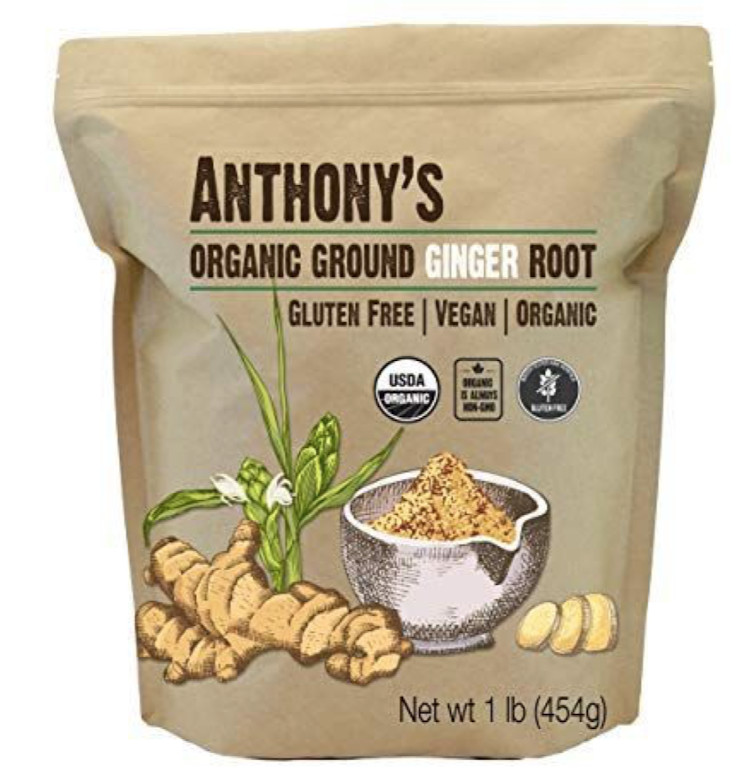
“Ginger is actually a plant, and the ginger spice that we use in cooking comes from the root of the plant,” says Amber Pankonin, M.S., RD, owner of Stirlist.
Not only is it delicious, it also has some awesome health benefits.
“Ginger has been traditionally known as a carminative or a substance that soothes the intestinal tract,” says Sonya Angelone, M.S., RDN, and spokesperson for the Academy of Nutrition and Dietetics. “More recently, ginger has been found to have anti-inflammatory effects.”
It’s also a good source of phytonutrients (compounds produced naturally in plants).
“Ginger itself is not a great source of any one particular nutrient, but it does contain phytochemicals, which are found in both fresh and dried versions,” says Pankonin.
Benefits of Ginger

→ Ginger may help with wear and tear on knees. 
In one study done on people with osteoarthritis, it was found that fresh ginger may help to lower pain and disability from arthritis.
“Since this is a condition of wear and tear, runners may find that ginger can help knee pain, and it is safer than taking non-steroidal, anti-inflammatory medications,” Angelone.
→ It might help improve digestion in general. 
Runners can deal with a gamut of gut issues, from diarrhea to constipation, which can impact your training.
Ginger has been shown to help to improve gastric motility, which basically means it can help with the movement of food from your mouth to the large intestine, says Pankonin. This one is important for runners because a healthy digestive system can help improve performance.
→ It may help treat migraines.
Ginger was shown to help reduce migraine pain as much as prescription medicine in this study published in Phytotherapy Research in 2014. Headaches are a pain for everyone, especially if they get in your way of training.
“A small amount of powdered ginger may do the trick and get them back on the road,” says Angelone.
→ Ginger can help reduce nausea.
Ginger has antiemetic properties that can increase gastric emptying (food emptying from the stomach to the small intestine). Basically, ginger works to improve the general health of your digestive tract, which could help alleviate nausea, says Pankonin.
→ It could help with menstrual cramps.
If cramps prevent you from logging your miles, ginger may help.
There has been some research that shows ginger may be effective in decreasing pain during the first three to four days of a menstrual cycle, says Pankonin.
→ Ginger may reduce inflammation.

Anti-inflammatory compounds found in ginger—gingerols and shogaols— may be helpful in aiding recovery after long runs when inflammatory chemicals settle in, says Angelone.
How Much Ginger Should I Eat?
To get the full benefits of ginger, you don’t need very much.
In general, the average recommendation is about 1 gram of real ginger per day to help relieve nausea, and this doesn’t count anything that comes from cookies or sodas, says Pankonin. There are ginger capsules available, but before adding any kind of ginger supplement, you should consult with your physician, as it might interfere with certain medications.
​
When it comes to cooking, different forms of ginger may be best for certain dishes, according to Angelone.
Crystalized ginger, chopped: In tea (or in hot water to make a hot beverage), oatmeal, cookie recipes, apple/pear crisps, banana bread, pancakes, infused into maple syrup.
Ginger powder: It can be used most anywhere, especially when you want it blended.
Fresh ginger, grated: Hot water, tea, vegetables, stir fry, poached fish especially salmon, steamed rice (cook together).
And the type of ginger you use may also impact how much you use in recipes.
“Whenever you convert from a fresh spice to dried spice, the ratio 3:1. So, if your recipe called for 3 teaspoons of fresh ginger, you would only need 1 teaspoon of dried ginger,” says Pankonin.
The Best Ginger Recipes For Runners
Here are seven delicious ginger-filled recipes to help fuel you for your runs.
Whole Wheat Chocolate Chip Gingerbread Pancakes
If you need the perfect holiday treat, try these whole wheat chocolate chip gingerbread pancakes. They are made with Greek yogurt for extra protein, making them the perfect recovery meal after a run, says Sarah Schlichter, MPH, RDN, and owner of Bucket List Tummy.
Pork Tenderloin with Cherry Chutney
This pork tenderloin with cherry chutney contains both lean protein and a good source of healthy carbohydrates from the cherry chutney—which also contains fresh ginger.
“The combination of carbs and lean protein provides a nutritious energy source for runners,” says Pankonin.
Prerun Sweet Potato Ginger Energy Bites
These sweet potato ginger energy bites are a filled with antioxidants. They make a great anti-inflammatory snack for before, during, or after a run, says Schlichter. The ginger can help alleviate any exercise-related nausea, and the sweet potatoes are a great carbohydrate option that’s easy on the stomach.
Easy Weeknight Quinoa Stir Fry
This quinoa stir fry will be a crowd favorite and chances are you might already have these ingredients in your pantry and fridge, says Pankonin. Plus, the addition of vegetables from the stir fry might even help reduce oxidative stress after long workouts.
Gingerbread Crockpot Oatmeal
This gingerbread crockpot oatmeal is a great make-ahead meal for a morning run, full of holiday flavors and carbohydrates for quick energy!” says Schlichter.
Sweet Potato Orange Salad with Honey Mustard Dressing

If you’re in need of a good energy source to fuel up before a race without upsetting your stomach, try this sweet potato orange salad with honey mustard dressing recipe. It’s made with sweet potatoes (which contain vitamin A, and help support immune health) and ginger, which makes it a great meal, says Pankonin.
Easy Egg Noodle Stir-Fry with Veggies and Chicken
Looking for a quick 30-minute meal? This egg noodle stir-fry with veggies and chickenmakes weeknight dinners easy, says Schlichter. The best part: it’s ready in one pan, and has the perfect blend of protein, carbohydrates, and vegetables for optimal recovery and balanced macronutrients.
(01/03/2021) ⚡AMPby Runner’s World
Yes, Walking Is Sometimes Faster than Running Uphill
Top trail runners mix running and walking on steep terrain, but even scientists aren't sure how we choose which is better
There was a time, in my younger days, when I thought I would never walk during a run. I abandoned that philosophy about two-thirds of the way up a mountain in Slovenia, where I was competing in the 2010 World Mountain Running Championships. The course climbed a little over 4,000 feet in 7.5 relentless miles. During one particularly steep section, I finally gave in and started to walk. To my surprise, I didn’t lose any ground to the runners around me. Lesson learned, and I’ve been less dogmatic ever since.

I’m not alone, though. Even among serious trail runners, there’s sometimes a tendency to keep running at all costs, according to Jackson Brill, a Salomon-sponsored trail runner and graduate student in Rodger Kram’s Locomotion Laboratory at the University of Colorado. But when the hills get steep enough, walking becomes inevitable—and the decision about when to switch back and forth between gaits is among the key tactical choices trail competitors have to make. As it happens, Brill and his colleagues have been researching this problem for several years, and a pair of recent studies offer some interesting new insights. The bottom line: “Our research,” Brill says with tongue in cheek, “gives people permission to walk if they want.”
Yes, It’s Running
To understand the transition between running and walking, you have to start with a simpler question: is there really any difference between them on the steepest slopes? Under normal circumstances, one of the key distinctions between the two gaits is that you always have at least one foot on the ground when you’re walking, whereas you leave the ground between each step when you’re running. But that rule of thumb breaks down on steep hills: even when you’re “running,” you never fully lose contact with the ground.
Not convinced? Take a look at this 2015 video of former Locomotion Lab researcher Wouter Hoogkamer running on the world’s steepest treadmill, which is jury-rigged to go all the way up to 45 degrees (i.e. a 100 percent grade). He looks to me like he’s running, but he always has one foot on the ground.
Kram and his team broke out this same treadmill, which has been used for a bunch of previous uphill running research, for a study published over the summer in the European Journal of Applied Physiology. Led by first author Clarissa Whiting, a former Penn track star, the researchers recruited ten elite trail runners and had them run or walk on level ground and with the treadmill set to 30 degrees. That’s steep: typical gym treadmills only go up to about nine degrees, and black diamond ski runs tend to be around 30 degrees.
Sure enough, even though the runners always had one foot on the ground, there were distinctive differences between uphill running and walking. One clue was the stride pattern: on the slope, cadence was 40 percent quicker for running than walking, and feet stayed on the ground for 40 percent less time—a similar pattern, though less pronounced, to what you’d see on level ground.
But the smoking gun came from an accelerometer clipped to the subjects’ waistbands, which measured the rise and fall of their center of mass. On level ground, walking produces two distinct acceleration peaks, one as you land and one as you push off. Running, in contrast, is a series of hops from one leg to the next, producing just one acceleration peak as you land and take off. The accelerometers found exactly the same patterns on the inclined treadmill, confirming that steep uphill running really is running, and not just some sort of bouncy fast-walk.
The Transition
That’s intellectually interesting, but in practice you’ll almost certainly be walking up any 30-degree hills you encounter. So in a separate study that’s currently under review (but available online as a preprint), Brill and Kram recruited another ten elite trail runners to run at zero, five, ten, and 15-degree slopes. The goal was to understand what prompts people to switch from a run to a walk or vice-versa, and determine whether our natural inclinations also correspond to the most efficient approach.
There’s been lots of research on the walk-run transition on level ground. At slow speeds, we burn less energy walking than running; at fast speeds, it’s the other way around. Scientists used to assume that the decision to switch from walking to running was simply a matter of sticking with the most efficient stride. But a series of studies since the 1990s have found that we actually tend to break into a run at slightly slower-than-expected speeds, when walking would actually be more energetically efficient.
There’s no consensus on why this happens, but one theory is that certain muscles in the calves or shin get fatigued or have trouble producing enough force during fast walking, so it’s more comfortable to run even if it costs a bit of extra energy. This makes intuitive sense: think about the feeling of walking so fast that you decide to break into a run. You switch because it’s uncomfortable, not because you’re out of breath.
Brill and Kram found that this pattern persisted at slopes up to ten degrees: the subjects switched from walking to running at a slower speed than the energetically optimal transition. But at the steepest slope of 15 degrees, the difference disappeared and they started running precisely when it became more efficient than walking. Once you’re going up a steep enough hill, it’s hard work regardless of whether you’re walking or running, so it appears that the desire to save energy and be as efficient as possible takes over.
Into the Wild
There’s another more subtle difference between level ground and steep uphills, Kram points out. On the flats, there’s not much ambiguity about whether you should walk or run. At any given speed, one feels right and the other feels wrong. In the mountains, on the other hand, there’s a pretty broad range of conditions where the decision is ambiguous. When you’re walking, you get the feeling that you’d probably be more comfortable running. And that may be true for a brief period of time after you switch, but pretty soon you get the sense that walking might have been more comfortable after all. There’s no stable equilibrium; you oscillate back and forth.
Another detail from Whiting’s study offers some possible insight on this. She attached electrodes to four different leg muscles in her subjects to compare muscle activation under the various testing conditions. The soleus, one of two main calf muscles, showed 36 percent less activity per stride during steep uphill running than during steep uphill walking, which is consistent with the idea that local muscle fatigue triggers the transition. You walk until your legs—and perhaps the calves in particular—get too uncomfortable. Then you start running, which initially feels better but eventually leaves you more out of breath, so you switch back to walking, and the cycle repeats.
For a competitive trail runner like Brill, it would be nice to take away some practical insights about when to switch. In his study, he also tested heart rate as a proxy for figuring out the most efficient transition point. While the heart rate values did correlate with energy consumption, there was too much individual variation to make it useful in the real world. Brill’s next study, when pandemic, fire, and other disruptions permit, will involve trail runners walking, running, or choosing their own mix of the two while climbing an actual mountain. The goal, after all, is to be as fast as possible, not as efficient as possible.
For now, Brill will stick to the approach he’s figured out through trial and error, relying on his intuition about which gait feels best at any given moment. He tries not to switch back and forth too frequently, sticking with each gait for at least 15 to 30 seconds. He doesn’t consult a heart-rate monitor. “It’s great that we’ve done all this research,” he says. “But when I hit the trail I pretty much throw it out the window.”
For more Sweat Science, join me on Twitter and Facebook, sign up for the email newsletter, and check out my book Endure: Mind, Body, and the Curiously Elastic Limits of Human Performance.
(01/03/2021) ⚡AMPby Outside Online
Cinnamon Is a Hero of Holiday Spices. Here Are Some Unexpected Health Benefits
Here’s why you you should definitely add this spice to your fueling regimen.
“Cinnamon is an aromatic spice that comes from the dried bark of the cinnamomum tree,” says Robin Foroutan, M.S., RDN, and spokesperson for the Academy of Nutrition and Dietetics. “There are two main kinds of cinnamon: ceylon cinnamon, aka true cinnamon, and cassia cinnamon (less expensive and commonly used in processed food).”

Not only is this spice delicious, but cinnamon is also loaded with some unexpected health benefits of which runners can, and should, take advantage.
5 Health Benefits of Cinnamon for Runners
→ It may help balance your blood sugar.
Polyphenol antioxidants, found in cinnamon, may act like insulin, which means they assist glucose in moving out of the bloodstream and into cells. “This is important for runners because the faster sugar gets into muscles, the faster it can be burned for fuel,” says Foroutan.
→ It may help lower your cholesterol.
Animal studies have shown that cinnamon may play a role in lowering cholesterol concentrations in the body. In a study, mice that were fed a diet that included cinnamon extract had significantly higher HDL (good) cholesterol. Results showed it could also help lower total and LDL (bad) cholesterol, says Ginger Hultin, Seattle-based RDN, spokesperson for the Academy of Nutrition and Dietetics and owner of ChampagneNutrition.
“This seems especially true for those with high cholesterol and diabetes,” says Hultin.
A human study showed that out of people in the study using 1, 3, or 6 grams of cinnamon for 40 days, all three of the groups (but not the placebo) had lower triglycerides, LDL cholesterol, and total cholesterol, as well.
→ It may help blood vessel function.
Cinnamon has been shown to improve blood vessel dilation, which is the ability for your blood vessels to expand to allow better blood flow, in animal studies, says Foroutan. “Cinnamon is one of many natural foods that contain phytonutrients that help improve blood vessel dilation.”
This is important to runners, because blood flow is important for peak muscle and cardiovascular performance, however more research is needed to confirm the effect in humans.
→ It may help lower inflammation.
Previous small studies have shown that people who drank cinnamon tea had a higher antioxidant status than those who drank tea without cinnamon or hot water. This is likely because antioxidant flavonoids in cinnamon and the essential oils it contains, such as cinnamaldehyde, could act as free-radical scavengers (substances that protect cells from damage) and play a role in lowering inflammation, says Hultin.
Because exercise creates free radicals (unstable molecules created during normal cell metabolism) that can trigger inflammation, athletes need to go above and beyond to include plenty of foods that help the body balance inflammation. Foods that are high in antioxidants, such as cinnamon and other spices, help stabilize free radicals so they can’t inflame our cells and tissues, Foroutan says.
→ It can help reduce added sugar intake.
If you sprinkle some cinnamon on your food, the sweet taste of cinnamon can trick your tongue into thinking that a food is sweeter than it actually is. This can help people reduce the amount of added sugar they consume, says Foroutan.
Consuming too much added sugar is problematic for everyone’s health—even athletes, says Foroutan. Relying on slow burning complex carbs and natural sugars from fruit instead of reaching for candy can give you that burst of energy and keep you fueled for longer.
How much cinnamon should you eat?
To get the full benefits, you may need to eat a lot of cinnamon. But you can still benefit from adding even a bit of the spice to your diet. According to some studies, it’s safest to consume in moderation—about 1 teaspoon per day.
“It’s important to know that in studies, trials are often using amounts that are much higher than a person would typically eat in their diets; often 1 to 6 grams for up to three months. A teaspoon of cinnamon is less than 3 grams for reference,” says Hultin.
But, eating too much cinnamon could have some side effects of its own. One teaspoon of cinnamon contains between 7 and 18 milligrams of coumarin, so it’s important you don’t start loading up every dish with it.
“Cinnamon has a compound called ‘coumarin’ which has been shown to potentially have some negative effects at high levels,” says Hultin. “There is a chance of irritation to the liver and could irritate the mucosal membranes in your mouth and digestive tract.”
The Best Cinnamon Recipes for Runners
Here are 11 delicious cinnamon-filled recipes to help fuel you for your runs.
Banana Ginger Oats
If you’re looking for ways to add cinnamon to your breakfast, try these banana ginger oats.
“Naturally sweetened with nutrient-packed bananas (and nothing else!), these whole grain oats are perfect on a long-run day. Add extra cinnamon to taste for more flavor and potentially anti-inflammatory benefits,” says Hultin.
Salted Cinnamon Peanut Butter
Keep this salted cinnamon peanut butter on hand to put on top of everything from toast and oatmeal to yogurt. “Peanut butter offers a fantastic combination of fat and protein for satiety and pairs perfectly with so many carbohydrates to fuel running,” says Sarah Schlichter, MPH, RDN, registered dietitian nutritionist and owner of Bucket List Tummy.
Peanut Butter Sweet Potato Bread
This peanut butter sweet potato bread is great for eating any time to fuel your runs.
“I love the combination of ingredients and flavors in this recipe,” says Amber Pankonin MS, RD, LMNT, registered dietitian and owner of Stirlist. “The cinnamon combined with sweet potatoes and peanut butter provide a nutritious energy source for runners. Cinnamon has also been known to help decrease appetite, so the combination of these ingredients can help with fullness and satiety.”
Ginger Pumpkin Breakfast Smoothie
If you’re a smoothie fan, try this ginger pumpkin breakfast smoothie.
“One of the most important parts of a pumpkin-spice mixture is the cinnamon; it’s the spice you’ll use in the greatest amount. That’s perfect for flavoring smoothies that can power your run,” says Hultin.
“Use canned pumpkin any time of year in this recipe for added vitamin A and other nutrients and don’t hold back on the cinnamon which adds intensity of flavor and some potential health benefits, too.”
Maple Cinnamon Granola
Keep this maple cinnamon granola on hand for easy snacking. “An easy make ahead snack for pre- or post-run to help provide instant energy and/or replenish glycogen levels,” says Schlichter.
Apple Cinnamon Baked Oatmeal
You probably already have all the ingredients needed to whip up this apple cinnamon baked oatmeal. “Cinnamon combined with fiber sources like apples and oatmeal could be beneficial for digestive health,” says Pankonin.
Banana Chia Pudding
Try this banana chia pudding in the morning. “The perfect carbohydrate rich breakfast for before or after a run. Loaded with whole grain oats and a banana, this flavorful overnight oats can be made ahead of time [for you early risers] and is full of electrolytes,” says Schlichter.
Hawaiian Pork and Peas
For a protein-packed lunch or dinner, try this Hawaiian pork and peas recipe. “Combining lean protein with complex carbohydrates from vegetable sources is a great recovery meal for runners,” says Pankonin. “Some research has suggested that cinnamon has anti-inflammatory properties, which might also help with recovery.”
Healthier Spiced Apple Crisp
Try this tasty and healthier version of spiced apple crisp. “Meal prep this healthy crisp and use it as a breakfast or snack pre- or post-run all week long,” says Hultin. “Having a healthy, whole grain, carbohydrate-rich meal can give your body what it needs to perform. Cinnamon takes center stage in this apple and oat-based recipe. By boosting up spices like cinnamon, you can often cut back on the amount of added sugar you use.”
Apple Cinnamon Potato Bread
Looking for your new go-to snack? Find it in this apple cinnamon potato bread. “This quickbread makes for a quick, easy and convenient snack between exercise sessions, or a fast way to get quick acting carbohydrates before a run. Top it with peanut butter for more staying power,” says Schlichter.
Cinnamon Poached Chicken and Rice
If you’re a fan of savory foods, add this cinnamon poached chicken and rice dish to your meal-prep rotation.
“This savory dish combines lean protein with rice and seasoned with cinnamon. Cinnamon contains antioxidants, which might improve heart health making it a great spice for runners to include in their diets,” says Pankonin.
(01/02/2021) ⚡AMPby Runner’s World
Joshua Cheptegei aims for 'amazing' Tokyo double
Joshua Cheptegei has said his focus is on becoming just the eighth man to successfully complete the 5,000m-10,000m double at an Olympic Games.
The Ugandan, 24, set world records over bothdistances last year, adding to the 5,000m world gold he won at Doha 2019.

"It would be a mountain to climb, but the challenge is up to me," he told BBC World Service Sport.
"It is demanding a lot, in terms of racing and mindset but I want to give myself a try to win both gold medals."
Seven men have won both 5,000m and 10,000m golds at the same Olympics, with Britain's Mo Farah doing the double at both London 2012 and Rio 2016.
As a teenager, Cheptegei finished eighth and sixth in the 5,000m and 10,000m finals respectively in Rio.
"It would be really amazing to win the double, but if I win gold in the 10,000m I would still be grateful," Cheptegei added.
Uganda have won only two Olympic gold medals in their history, with John Akii-Bua winning the 400m hurdles in 1972 and Stephen Kiprotich winning the marathon 40 years later in London.
Cheptegei wears Nike's ZoomX Dragonfly spikes, which transplant the sportswear giant's controversial combination of highly resilient foam and carbon plates to the track.
However Cheptegei believes that, with the same technology available to all athletes if they want it, he doesn't have any unfair advantage.
"The shoes really do help," he said.
"But in this case the shoes are not only available to Mr Cheptegei.
"They are available for everyone who wants to attack the world record.
"You have seen the likes of Yomif Kejelcha, Selemon Barega...it is not about shoes only, but athletes having this period concentrating more on training and not travelling.
"I was focused on just this one thing. And that was breaking the world record."
(01/02/2021) ⚡AMPby BBC
New 30 for 30 Film Reveals Truths About the Tarahumara
If you're new to running and have been inundated with information about new, fancy shoes with thick, bouncy soles, it will come as somewhat of a surprise that just 11 years ago, many American runners were part of a minimalist running movement, spurred by the book Born to Run. Back then, it was all the rage to wear as little on our feet as possible.
The book by Christopher McDougall was about the Tarahumara people living in Mexico's Copper Canyon, who run hundreds of miles at a time, either barefoot or wearing sandals with old, recycled tires serving as tread. They rarely get injured and they can run forever, or so it seems. The premise of the book was that their durability was due to the biomechanics they honed by not wearing running shoes. And as the book gained in popularity, the industry pounced on the opportunity to sell something new.

But during a pivotal moment in a new ESPN 30 for 30 documentary, The Infinite Race, which debuts at 8 p.m. Eastern on Tuesday, December 15, Silvino Cubesare, a Tarahumara ultrarunner and farmer, watches footage of McDougall running barefoot in Central Park. Cubesare shakes his head and says, "I don't know what they are thinking. Why do they want to run barefoot? I think they are crazy."
If runners can afford shoes, why wouldn't they use them?
The Infinite Race seeks to expose another side of the story, beginning with the fact that the Tarahumara name came from the Conquistadors. The Indigenous people call themselves the Raramuri. The audience is introduced to Irma Chavez, a Raramuri activist who adds context to the reasons why running is part of their culture-a tradition that, unsurprisingly, does not stem from lack of running shoes or organized ultramarathons like the local Ultra Maraton Caballo Blanco (more on that later), but is in fact rooted in survival and spirituality.
In the documentary, Chavez explains the "races" that the Raramuri historically participate in. The men run rarajipari, kicking a ball and chasing it together over long distances. The women pass a hoop with sticks that they carry on the run; this version is called ariweta. What the minimalist running shoe craze mostly missed in 2009 was that the Tarahumara were also running from organized crime groups that were taking over land to plant marijuana and poppy. The Raramuri people have been recruited by cartels to run the drugs across the U.S. border.
"Many families were forced out of their communities because of violence," Chavez says. "Unfortunately, you have to run away before they kill you."
The film intertwines the story behind the Ultra Maraton Caballo Blanco, a local race that was founded in 2003 by American ultrarunner Micah True, who played a central role in the Born to Run book, too. His intention was to help the Tarahumara people preserve their running heritage while also aiding a region experiencing hunger and a lack of clear water. True, who died of a heart attack in 2012, gave away cash prizes as well as corn, and the race started attracting more Americans to the area. But in 2015, gang violence threatened the safety of the event, and the American organizers called off the official race just hours before it was set to begin.
The local runners, however, raced anyway-they needed the corn vouchers to feed their families. The film covers how the events of that year unfolded from the perspective of Cecilia Villalobo, who was the director of tourism in Urique (where the race is held) at that time, and from the viewpoint of Josue Stephens, the former U.S. race director. Unsurprisingly, they viewed the circumstances-and the way they were handled-differently.
"The Infinite Race is about how outsiders, many well-intentioned, impact a community in unexpected ways," says Bernardo Ruiz, who directed the documentary. "It is also about the starkly different ways people can view events based on the economic, political, and cultural realities they inhabit."
The Infinite Race is an important story, especially for those who bought into the Born to Run frenzy and added the Caballo Blanco race to their bucket lists. It's through the voice of Chavez that we see why running has always been so critical to the Indigenous people there-a critical perspective for runners in understanding the impact they can have on the communities and cultures where they race and the narratives they choose to hear about them.
"What interests me is that space where white American athletes and Raramuri athletes negotiate power," Ruiz says. "And I am most interested in the perspective of people like Irma Chavez, who views an ultramarathon like a short spring, when you consider the long arc of history."
(01/02/2021) ⚡AMPby Trail Runner Magazine
He Won’t Stop! 26-Year-Old With Cerebral Palsy Doing 21K for Charity
Sebastian Rosado is the runner we all should look up to.
December was especially challenging for Sebastian Rosado. The 26-year-old from San Juan, Puerto Rico, took on something he never had before: 21K over 30 days.

Racing is nothing new for Rosado, who was born with cerebral palsy, a neurological disorder that affects a person’s ability to move and maintain balance and posture. Though most of his life has been confined to a wheelchair, he has done at least one race a year since 2011 in his wheelchair.
It was about a decade ago that his mother was training for a race in Puerto Rico, and Sebastian asked if he could accompany her. She’d have to push him in the wheelchair because his arm functions are limited, and she was okay with that. However, the race wouldn’t allow it.
Instead, after consulting with Sebastian’s physical therapist, Sebastian’s family decided to make a race for children who also had neurological disorders and benefits Centro María de Los Angeles, which hosts an annual month-long camp and is now raising money to create a care center for children in Puerto Rico.
The race is called Córrelo, Camínalo o Ruédalo, which translates to Run it, Walk it or Roll it. It gives runners like Rosado a chance to prove that despite being told from a young age that they might not be able to do things in their lives, they too can become what they wish to be in life.
“He’s an athlete,” Jaime, Rosado’s father, tell Runner’s World. “To do this, it depends on your energy, your enthusiasm, and your stamina. Those are the qualities of an athlete, and Sebastian has them because he works as hard as anyone.”

Nine years later, the 10th edition of the now 5K race is happening virtually on January 10. Rosado has run it every year using a special walker, which is fairly heavy to support him and tough to move with limited mobility in his legs.
Because of the coronavirus pandemic, the race moved to being virtual, but athletes adapted to the changes as they—and the race—have done before.
In 2018, after Hurricane Maria devastated the country, the race was canceled. Instead of taking the year off, Rosado instead reached out to and received permission from the Miami Marathon to have a team relay him in his wheelchair for most of the race. Then, with two miles to go, he’d get out and complete the final stretch using his walker.
The pandemic presents another challenge, but one that Rosado welcomes.
“It has been tough for him during the pandemic because he’s very sociable,” Jaime said. “He’s very enthusiastic, he loves music, and he’s always going to different places with his friends to listen to music. He’s been confined all this time and it’s been tough. This race is away for him to escape and do something he loves.”
Each year, Rosado tries to outdo his previous goal. Instead of just a 5K in 2020, he wanted to attempt to run 21K over 30 days. The number 21 is significant to Rosado, and many Puerto Ricans, as it is the number of native son and MLB legend Roberto Clemente.
Rosado’s plan is to complete the distance by January 9, accounting for completing 1K, at most, in a day and rest days in between each. You can still register here to run for and with people like Sebastian on January 10.
“He’s in very good shape,” Jaime said. “He’s been doin his 1Ks in basically an hour and that’s really good. When he did the 5K in 2016, it took him almost four hours. Based on the way he’s going now, I think he could do a 5K in three hours, which is great for him.”
Because of COVID restrictions in the country, Rosado is doing his 1K runs in his neighborhood in San Juan near the convention center. His parents stream it live on his Facebook page in hopes of continuing to prove that even with a neurological disorder, anyone is capable of things they’re told they might not be able to do.
“Sebastian used to train in a track and field facility close to home, and it’s amazing to hear runners telling him things like, ‘Wow, sometimes I don’t have the strength to train but when I see you doing this I feel that I have no excuses,’” Jaime said. “Yesterday, somebody told us that 62 swimmers are joining Sebastian’s challenge this month by swimming 800 meters each one. He is an inspiration.”
As always, Rosado is also raising money for Centro Mariá, which you can donate to here.
So far, Rosado has completed 14K. He plans to finish the last 7K by race day.
“Sebastian has a saying that your disability is not in your body, it’s in your mind,” Jaime said. “I think that’s really powerful. If you promise yourself you’ll do something, you can achieve it by using your mind.” 

(01/02/2021) ⚡AMPby Runner’s World
7 reasons running is better than triathlon
Listen, triathlon is great. Like running, it’s an endurance sport that gets people all around the world exercising, and that’s invaluable. But when it comes to the question of which is better, running or triathlon, the answer is obvious: running is best. Our friends at Triathlon Magazine Canada seem to think otherwise, and we don’t want beef with all you multi-sport athletes out there, but come on, you know it’s true. Here are seven reasons why we’re right.
We have so much time on our hands

Triathletes spend so much time training. Like, way too long. Runners? We get our run in for the day, do some strength work and get to chill out. Relaxing is fun, but it’s something triathletes rarely get to do. They finish their swim, hop on their bike, ride for four hours and then close out the day with a run. Honestly, triathletes must have so little free time. It’s a miracle they get anything else done in their lives.
Our sprints are actually sprints
In running, a sprint actually means athletes are sprinting. We’re talking 100m and 200m races that are done in 10 to 20 seconds. In triathlon, a sprint takes even the fastest athletes close to an hour. What’s with that? Triathlon “sprinters” swim 750m, bike 20K and run 5K.
Triathlon is expensive
If you want, you can certainly spend a lot of money on running gear, but you don’t have to. As long as you have a good pair of shoes, you’re set. In triathlon, though, you need a wetsuit, a tri-suit, a bike, a helmet, bike shoes, running shoes and so much more.
The marathon is hard enough
Running 42.2K is no joke, and it’s a challenge that can defeat even the best of athletes. So we have to ask: why on Earth would you make that harder by swimming 3.8K and biking 180K before hitting the marathon course? It just sounds so painful.
No early morning swim practices
As runners, we sometimes have to get up for early runs, but that doesn’t compare to morning swim sessions. Swimmers arrive at the pool when it’s dark outside and the sun still hasn’t risen when they leave. At least we get to see the sun rise when we run in the morning.
Aero this, aero that
Aerodynamics are of course important in any race, but runners don’t obsess about this like triathletes do. Some of us shave our legs, but if we don’t it’s not the end of the world. We might wear half-tights or split-shorts, but either works. If you don’t shave your legs as a triathlete or if you show up to a race in anything other than skin-tight spandex, you’ll hear about it from your fellow racers.
Running came first
This is no “chicken or the egg” situation. We know what came first: running. Without running, triathlon wouldn’t exist. If triathlon had never been invented, though, running would be fine.
(01/02/2021) ⚡AMPby Running Magazine
Comedian pledges to run 31 marathons in 31 days for charity
The comedian’s challenge aims to promote ‘unity’ and ‘goodwill’
Comedian Eddie Izzard has announced he will run 31 marathons in 31 days next January, as part of his ‘Make Humanity Great Again’ campaign. Each treadmill marathon will be followed by a stand-up gig that will be streamed from the Riverside Studios, in west London.

A limited number of audience tickets for groups of two to four will also be available
for the gig series, which is called ‘Still Standing’.
Izzard’s ‘Make Humanity Great Again’ campaign will raise money for charities supporting disadvantaged and vulnerable people.
Viewers are encouraged to join in virtually over Zwift or Zoom as he runs the marathons. The subsequent gigs will provide a ‘best-of’ of Izzard’s stand-up, and will include two performances of his latest show, ‘Wunderbar’, in German (January 23) and in French (January 28).
Each run will take the ‘theme’ of a different city – a nod to Izzard’s past challenges, which have seen him run marathons in various international locations. Last February, Izzard ran 29 marathons in 29 days, one in each European capital, plus a final extra one back in London. He raised £140,000.
He also ran 27 marathons in 27 days across South Africa in 2016 and 43 marathons in 51 days in 2009.
On the campaign’s crowdfunding page, Izzard wrote: ‘Make Humanity Great Again stands for unity, the sharing of beliefs and the power of human beings uniting across the continents and around the world.
‘As a campaign, it seeks to promote a fair chance in life for all, particularly those who experience disadvantage and discrimination.’
(01/02/2021) ⚡AMPby Runner’s World
Kenyan Daniel Simiu and Ethiopian Yalemzerf Yehualaw imposed their rhythm in the San Silvestre Vallecana event
Kenyan athlete Daniel Simiu and Ethiopian Yalemzerf Yehualaw were proclaimed winners of the 56th edition of the Nationale-Nederlanden San Silvestre Vallecana on Thursday, after dominating their respective races with authority.
The athletic event with which Madrid says goodbye to the year 2020 surely missed the 'magic' of its usual route and seeing how the streets are flooded with runners for the popular test, and the spectators who approached the Ensache de Vallecas did not witness the usual spectacle of a San Silvestre marked by the wind and by the great dominance of its two winners.
In the men's event, from the beginning, the small group of candidates for victory was formed and to which the rest of the participants could hardly get close, with the Spanish-Moroccan veteran Ayad Lamdassen setting the pace from the beginning and with Ebenyo , the American Paul Chelimo, the Dutch Mike Foppen, the Burundian Thierry Ndikumwenayo and the Spanish Ouassim Ouaziz.

All eyes were focused on Chelimo, but it was Simiu who made the move that dictated the future of the event. The Kenyan was brave and changed pace on the third lap to open a gap that would already be impossible for his rivals.

Simiu, who had a personal best of 27:18 last September in Berlin, did not slacken and took advantage of his tactic. The African gradually opened the distance with the rest and was able to win comfortably with a record of 27:41.
On the other hand, in the women's race, there was a bit more emotion, mainly because the two indicated as favorites, the Kenyan Ruth Chepngetich and the young Ethiopian Yalemzerf Yehualaw Densa, fought a beautiful heads up.
However, Densa, who had already beaten Chepntegich in the New Delhi Half Marathon, was again stronger than her rival with an acceleration in the third lap against which the Kenyan could do nothing.
The Ethiopian went solo and won with a time of 31:17, ostensibly improving her personal distance record (31:55) and condemning Chepntengich, who reached more than half a minute, again to second place in the vallecana race. The podium was completed by the French Alessia Zarbo, one place ahead of the best Spanish, Carolina Robles.
(01/02/2021) ⚡AMPSan Silvestre Vallecana
Every year on 31st December, since 1964, Madrid stages the most multitudinous athletics event in Spain.Sport and celebration come together in a 10-kilometre race in which fancy dress and artificial snow play a part. Keep an eye out for when registration opens because places run out fast! The event consists of two different competitions: a fun run (participants must be...
more...The 2021 Maui Marathon is going virtual due to the ongoing coronavirus pandemic
Due to the ongoing COVID-19 pandemic, the in-person 2021 Maui Marathon has been cancelled and the running event now is going virtual, race officials announced.
Registration now is open for the virtual marathon, half marathon, 4-member marathon relay, 5- and 10-kilometer run/walk. Mileage can be completed at any location in Hawaiʻi or on the Mainland between April 1 and April 30, 2021.
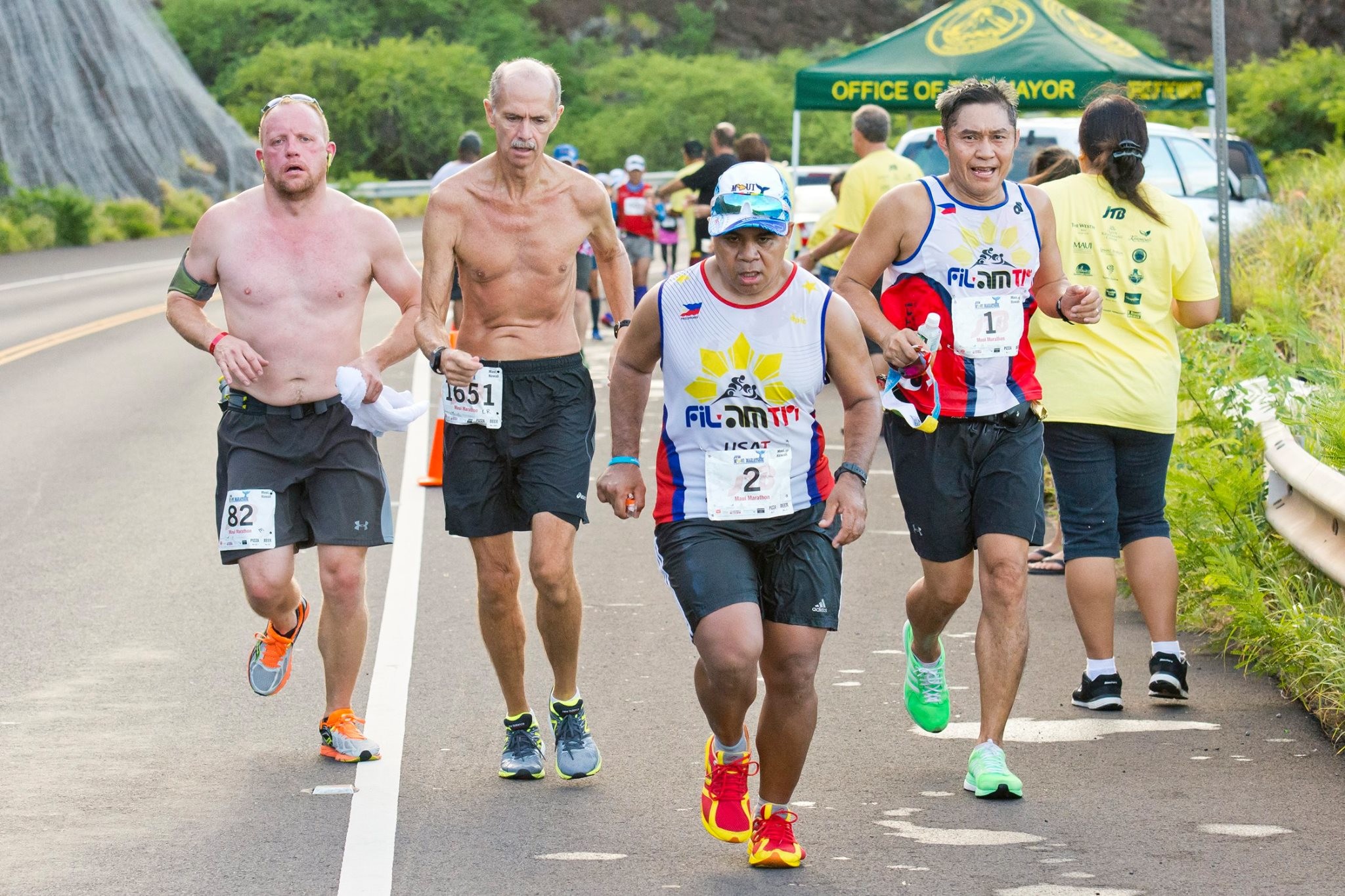
“Runners are struggling to adjust to the abrupt change in plans but rather than letting the goals of runners go unfulfilled, we are offering a virtual run with all the swag,” race director Jon Emerson said. “As for the full race experience, let’s hope that the virus will be under control and we can have an in person event for 2022.”
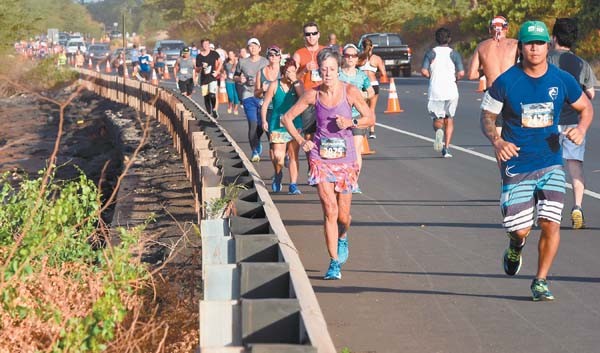
Runners have 30 days in April to finish the race they register for, uploading times to the registration website.
Those who had previously signed up for the in-person 2021 Maui Marathon can automatically compete virtually, or have the option to roll over their registration to the January 16, 2022 Maui Marathon. There are no refunds.
(01/02/2021) ⚡AMPMaui Oceanfront Marathon
The Marathon Starts in Wailea and runs along the oceanfrontto Kamehameha Iki Park near the Banyan Tree in Old Lahaina Town. 26.2 miles of whales, beautiful oceanfront and mountain vistas. As its name suggests, the Maui Oceanfront Marathon, Half Marathon, 15K Run & 5K gives runners the chance to run along the oceanside highways of the windswept western coast of...
more...Japan bans foreign visitors as COVID-19 cases spike and new variant detected
The Japanese Government has announced that foreign travellers will not be permitted to enter the country until at least the end of January due to a rise in COVID-19 cases in the nation due to host the next Olympics and Paralympics.
The new measure is set to start tomorrow and will continue throughout January.

It follows a record daily increase in new coronavirus cases - including at least two of a new, faster-spreading strain of the virus.
Japan reported in excess of 3,500 new cases yesterday.
A further 50 deaths were reported as well.
As Japan tightens its border, citizens and foreign residents will be required to quarantine for two weeks upon returning to the country and must show proof of a negative COVID-19 test within 72 hours of their departure for Japan.
They will also be tested upon arrival.
Digital Transformation Minister Takuya Hirai has also spoken of a tracking system for overseas travellers being developed to monitor virus spread, with the system expected to be in place before the Olympics and Paralympics are held.
"There will be no point if we do not implement it, so that you will be allowed to enter the country unless you use it," Hirai said, Kyodo News reports.
Hirai suggested that tracking will be delivered through GPS technology.
The Tokyo 2020 Olympics are currently scheduled to take place from July 23 to August 8 in 2021, having been postponed by a year due to the COVID-19 pandemic.
The Paralympics are due to take place from August 24 to September 5.
With coronavrius cases rising in the host nation and across other parts of the world, notably Europe and the Americas, doubts remain over whether the Games will be able to go ahead - and if they do, whether international visitors or even domestic spectators will be allowed to attend events
(01/01/2021) ⚡AMPby Inside The Games
BOSTON LEG OF WORLD ATHLETICS INDOOR TOUR RESCHEDULED
Organisers of the New Balance Indoor Grand Prix in Boston, part of the 2021 World Athletics Indoor Tour, have announced that the meeting will move from 6 February to 13 February 2021. Following the cancellation of the Millrose Games, which had been set to become the newest addition to the World Athletics Indoor Tour, the New Balance Indoor Grand Prix will now take the mid-February slot in the series.
The World Athletics Indoor Tour, which is now entering its sixth year, is a series of the very best one-day professional indoor track and field competitions in the world. Each season, athletes can score points in selected circuit disciplines. At the conclusion of the tour, the athlete with the most points earns the overall World Athletics Indoor Tour title in the event, a US$ 10,000 prize, and an automatic entry into the following World Athletics Indoor Championships.

In addition, this year World Athletics is expanding the indoor calendar with the introduction of three tiers of competition – Gold, Silver and Bronze – comprising 26 meetings spread across 12 countries in Europe and North America. The expanded schedule will broaden the geographical spread of meetings around the world and incorporate additional area level competitions. In North America, this will include the American Track League, which will feature three Silver and Bronze level meetings in January and early February.
The World Athletics Indoor Tour, which features the five Gold level meetings of 2021, will begin in Karlsruhe, Germany, on 29 January and the series will end in Madrid, Spain, on 24 February.
Due to the pandemic, the current plans are provisional, so dates and venues could change as the season approaches.
Calendar – World Athletics Indoor Tour - Gold
29 Jan – Karlsruhe, Germany
9 Feb – Lievin, France
13 Feb – Boston, USA
17 Feb – Torun, Poland
24 Feb – Madrid, Spain
(01/01/2021) ⚡AMPRyan Hill Leaving The Bowerman Track Club For A New Team And Sponsor In 2021
With great sadness we must announce that Ryan will be leaving BTC for a new team and sponsor in the 2021 season. In his seven years with Bowerman, Ryan ran 13:05 for 5,000m and 7:30 for 3,000m. He was 3x National Champion, made 4 World Championship teams, and won the Silver Medal in the 2016 World Indoor 3,000m.
He has embodied our commitment not only to world class performance, but to building the broader running community. He spent many a rainy Portland night coaching our Eastside Youth group and helped launch our first ever BTC summer camp.
As our foremost Jerry impersonator he is truly irreplaceable. In so many ways, both on and off the track, we will miss Ryan’s talent, dedication, and humor.
Working side by side with someone for years- sharing sacrifices, struggles, triumphs, and laughter- you develop a special bond. That bond makes it very painful to part ways, but it is also how you know that your connection will endure.
Good luck buddy, we’re going to miss ya.
(01/01/2021) ⚡AMPThe best running tips to race recovery
Whatever your race distance, what you do after your race is absolutely critical to your recovery. By following these post-race tips, you will minimise your recovery time and reduce your injury risk. The following checklist is applicable to any race from the 5k through to the marathon, and should become a regular part of your routine after every race.
Immediately after your race

Cool down. Once you’ve crossed the finish line a cool-down should be the first thing you do. Around 10 minutes of very gentle jogging immediately after you finish will reduce any post-race muscle soreness by flushing out all the waste by-products that have built up during the race.

Stretch. After the cool-down jog, take another 10 minutes to stretch all the main muscle groups of the legs — calves, Achilles tendons, hamstrings, quadriceps, hip flexors, glutes and adductors. Stretching the muscles while they are still warm is the optimum time to do it. Stretching will help to ease any post-race soreness.
Eat. The sooner that you can eat the better, because refueling contributes to your recovery by aiding cellular repair and replacing energy. Consume a high-GI food within 15 minutes of finishing your cool-down and stretches — and if this is in liquid form, it will also contribute to your rehydration.
Drink. In addition to consuming a glucose drink, also look to rehydrate with water. Even on cold days you’ll sweat and lose a lot of fluid. Whatever your race distance, you will need to drink plenty of fluid afterwards until your urine is the color of pale straw or lighter.
Back at home after the race
Rest. Aim to minimise your activities for the rest of the day. Put your feet up and let your muscles relax and recover, rather than ask them to do more work; this way, you’ll be able to resume your usual training sessions much sooner.
Eat again. Within two hours of completing your race, you need to eat again. This should be a more substantial meal, containing some complex carbohydrate to further replenish your fuel stores, together with some low-fat protein to aid muscle repair. An ideal combination is pasta and tuna.
The day after the race
Light training. Avoid heavy training. Your body still needs recovery time and if you try to force through a more challenging session, you’re likely to under-perform or risk muscle damage or injury. Your goal should be to recover both physically and mentally. Go for a short, low-intensity jog or cross-train instead. The change of exercise will help your muscles to recover.
Stretch. When you finish your light training session, your muscles will be warm — and that is the ideal time to repeat the post-race stretches that you carried out yesterday.
important questions after a race:
How hard did I race? If you jogged around comfortably, your recovery will be faster than if you really pushed hard throughout.
How long was my race? If you raced over the marathon distance, your recovery will take longer than if your race was a 5k.
Do I have any muscle soreness? Don’t resume full training until any lingering stiffness or soreness has disappeared — and definitely don’t attempt to return to training if you feel that you have an injury.
As a general rule, wait before resuming full training until you feel that you’re fully recovered and then add a couple of days on top. Light training is okay, but by slightly delaying your return to more challenging sessions, you’ll be fully recovered and less likely to get injured.
(01/01/2021) ⚡AMPby Tim Rogers
How to find a running routine, and stick to it?
So. Much. Running. At least that’s how it feels during those first few runs, when you decide that running is going to be your new fitness routine.
But after a few running workouts, the body starts to adjust and you get your stride back. There are some people who just take naturally to running. They enjoy going out for a few miles either before or after a workout at the gym. And then there’s the rest of us, dreading every step and laboring from start to finish. BUT, there is hope! Check out these easy habits that motivate you to stat, or keep, running.

Find a buddy. Partnering up with someone will help hold you accountable instead of flaking out last minute. Running with a partner will also help you with pacing so you can finish out the mileage you intended to do. For extra motivation, try a local run club.
Make it a routine. Commit to picking a day and time to run. For example, make every Sunday an active recovery day and go for a run or hit some 400m repeats at the track. In just a few short weeks the run will feel easier.

Be realistic. First day 10k let’s establish my time! Wrong. Try a mile. In a few weeks try two. Training is a marathon, not a sprint (no pun intended).
Keep it fresh. You don’t have to do the same boring mile every week. Switch up the scenery, the mileage, the rest time, etc. This will prevent you from hitting a plateau and also keep your interest peaked.
Set a goal. Whether you have a 5k time you want to build up to or a specific race in mind, set a goal. Having your eyes on the finish line will help you stay consistent in your training.
The repetitive motion of running is what draws us both to and from becoming a better runner. So before you write it off completely or become complacent in your training pace, try to develop some of these habits. Athletes with motivated habits see the most success in their training.
(12/31/2020) ⚡AMPby Jessica Murden
2021 Xiamen Marathon postponed due to COVID-19
The 2021 Xiamen Marathon, which was scheduled for January 3, has been postponed with a new date yet to be determined, organizers announced here on Thursday.
The decision was made following a circular issued Wednesday by China's State Council task force on combating the COVID-19 epidemic, which vowed to tighten its epidemic control measures for the forthcoming New Year and Spring Festival holidays, the organizers said in a statement.


The risk of the virus spreading will be larger during the holidays, the National Health Commission cautioned on Wednesday.
The statement added that registered runners for the 2021 Xiamen Marathon are able to retain their entry, and the registration fee will be refunded via the original payment method.
Debuting in 2003 and held on the first Sunday of every January, the Xiamen Marathon has been rated as an International Association of Athletics Federations (IAAF) Gold Label Event for 12 straight years.
(12/31/2020) ⚡AMPby Xinhua News
CD XIAMEN INTERNATIONAL MARATHON
The C&D Xiamen International Marathon is an annual marathon race held in January in the coastal city of Xiamen in Fujian province, People’s Republic of China. Every January, the first medal of marathon race around the world is awarded here. The race has become a golden name card of Xiamen, showing its splendor to the whole world.It is one of...
more...World marathon champion Ruth Chepng’etich hopes to end a coronavirus ravaged season lining up for the San Silvestre Vallecana
World marathon champion Ruth Chepng’etich hopes to end a coronavirus ravaged season on a high on the last day of the year when she lines up for the San Silvestre Vallecana 10-kilometer road Thursday night.
Chepng’etich will be up against Ethiopia’s World Half Marathon bronze medalist Yalemzerf Yehualaw among other invited athletes.
The two last met in October during the New Delhi Half Marathon where Yalemzerf bagged victory in one hour, four minutes and 46 seconds with Chepng’etich second in 1:05.06 and Ethiopia’s Ababel Yeshaneh third in 1:05.21.
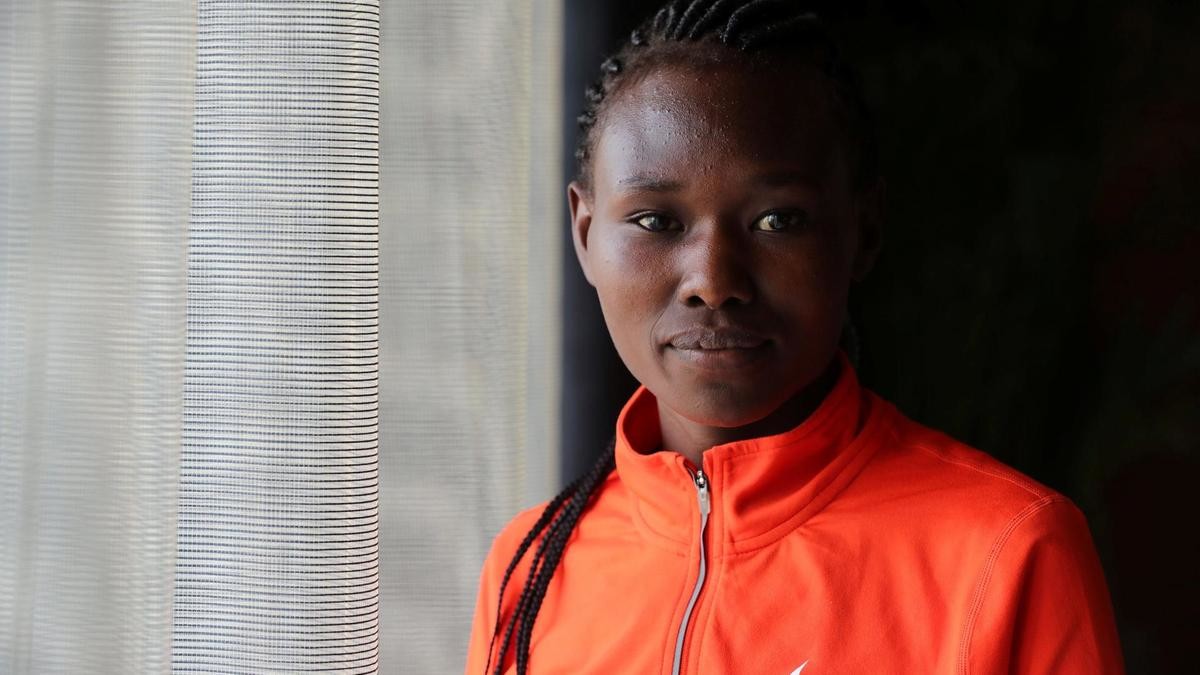
The coronavirus pandemic has changed the way races are organized and today’s race in the Spanish city is no exception.

Elite athletes are the only ones who will compete with this years’ race on a 2.5-kilometer loop “bubble” at Ensanche de Vallecas, as one way of protecting the athletes with the possibility of mingling with the public.
Olympic dream
The women’s race will start at 8.30pm Kenyan time with the men’s race going off one hour later with Chepng’etich seeking to wrestle the title currently held by Ethiopia after Hellen Bekele Tola won the race last year.
“It has been a difficult year for athletes but I’m happy because this is my third race and I will be running my own race. I have prepared well and I will be expecting a good competition eyeing a place in the podium,” said Chepng’etich.
“It’s my dream to compete in the Olympic Games and I have to start preparing early. I’m just using these races for speed work as we wait for next year which we hope things will ease off.”
In Italy, five Kenyan women will line up for Boclassic 10-kilometre road race with a different course expected to be used due to Covid-19 restrictions. World 5,000 metres silver medalist Margaret Chelimo leads compatriots who include Janet Kisa, Norah Tanui, Dorcas Tuitoek and Gloria Kite in the city of Bolozano.
(12/31/2020) ⚡AMPby Bernard Rotich
San Silvestre Vallecana
Every year on 31st December, since 1964, Madrid stages the most multitudinous athletics event in Spain.Sport and celebration come together in a 10-kilometre race in which fancy dress and artificial snow play a part. Keep an eye out for when registration opens because places run out fast! The event consists of two different competitions: a fun run (participants must be...
more...2021 Boston Marathon date still not set
The 2021 Boston Marathon is planned for the fall rather than its traditional Patriots’ Day running, but race organizers will not pick an official date until early next year amid ongoing pandemic concerns.

“Due to the recent surge in COVID-19 cases in Massachusetts, the @BAA will not be able to confirm a fall Boston Marathon date until early 2021,” organizers wrote in a tweet from the official Boston Marathon account Tuesday.
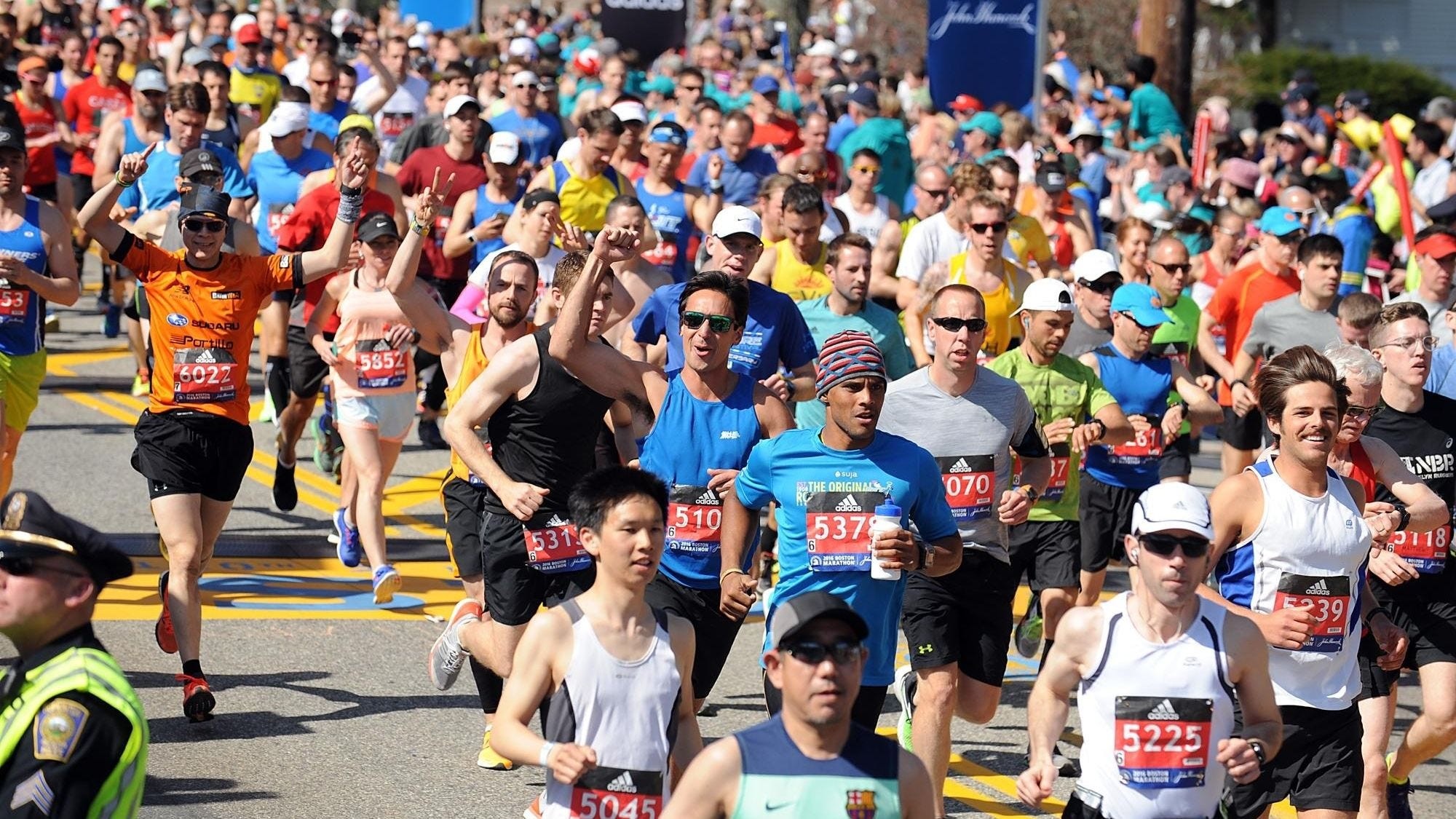
“We will continue to work with city and state officials in preparation for a safe return to in-person racing in the fall.”
Officials initially postponed the 2020 Marathon from April until September during the early stages of the pandemic, then ultimately canceled it for the first time in its 123-year history.
(12/30/2020) ⚡AMPby Chris Lisinski
Boston Marathon
Among the nation’s oldest athletic clubs, the B.A.A. was established in 1887, and, in 1896, more than half of the U.S. Olympic Team at the first modern games was composed of B.A.A. club members. The Olympic Games provided the inspiration for the first Boston Marathon, which culminated the B.A.A. Games on April 19, 1897. John J. McDermott emerged from a...
more...2021 Grandma´s marathon has reached the half-capacity limit for in-person registration
Back in October, registration was open for Grandma’s Marathon, the Garry Bjorklund Half-Marathon and the William A. Irvin 5K. The half-marathon filled up in just over 13 hours. And now the other two are full as well.
Organizers announced Tuesday that all three races have reached the half-capacity limit for in-person registration. The full and half-marathons were limited to 4,000 runners, while the limit was 1,500 for the 5K. For those who are still interested to run in-person, they are encouraged to reach out to the marathon’s charity partners which can be found on their website.
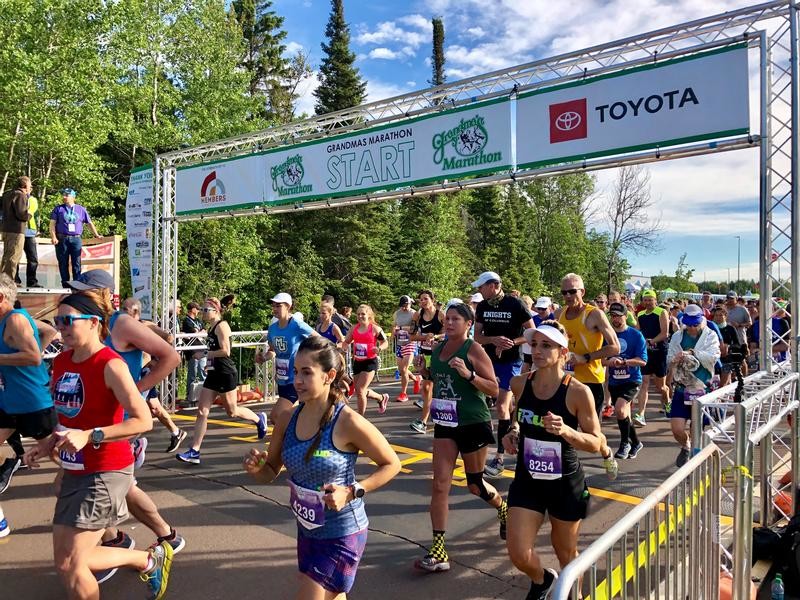
“What that is is you sign up, you get an entry into any of the three events for 2021 and you fund-raise from now until race day. And if you hit your fundraising goal, the entry then is free. So it’s a great way to not only get what you want, which is run a race at Grandma’s Marathon weekend. But also to help out one of our great charity partners and raise some money for the community,” said PR and marketing director Zach Schneider.
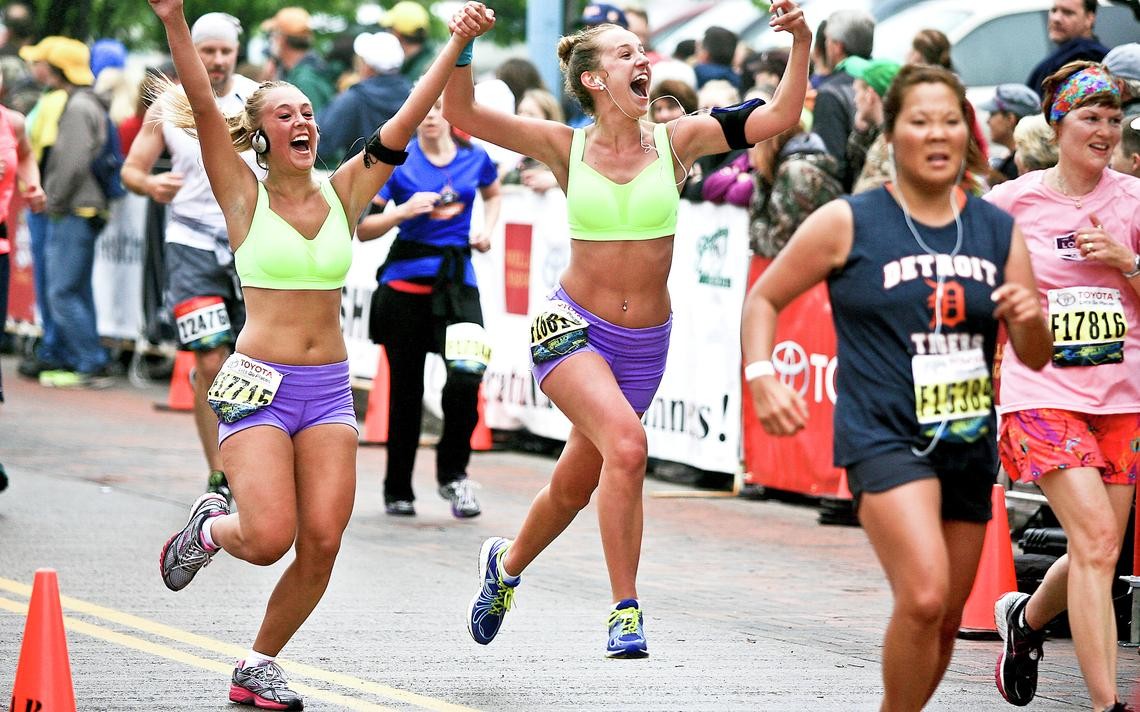
And now that the races are full, the focus turns to the possibility of adding more in-person spots if local and state restrictions on mass gatherings are loosened up.
“We hope to have a decision on whether we’re going to try and open up more in-person spots for the 2021 race by the end of January. We’re hoping that in the coming weeks, we’ll have the chance to meet as a staff to talk to our local health partners and officials, and really figure out what’s the best course for us and for our participants, our volunteers, our spectators,” Schneider said.
Organizers say a virtual option to run the race is also still available
(12/30/2020) ⚡AMPby Sam Ali
Grandmas Marathon
Grandma's Marathon began in 1977 when a group of local runners planned a scenic road race from Two Harbors to Duluth, Minnesota. There were just 150 participants that year, but organizers knew they had discovered something special. The marathon received its name from the Duluth-based group of famous Grandma's restaurants, its first major sponsor. The level of sponsorship with the...
more...Paul Chelimo, is set to compete for the title at San Silvestre Vallecana
Paul Chelimo, the Olympic runner-up in Rio of the 5,000 meters can become the first athlete 'made in the USA' to win the Nationale-Nederlanden San Silvestre Vallecana.
Chelimo also has the challenge of beating the American record for 10K -27: 48 , the same as Toni Abadía's in Spain - shared by Bernard Lagat and Mark Nenow . If he arrives in good shape, in a season in which he has hardly run a cross after the outbreak of the pandemic, he should be in a position to do so.

Among his great rivals we can mention the Israeli of Ethiopian origin Maru Teferi , triple national record holder of his adopted country in the distances 10K, half marathon and marathon, and the Kenyan Daniel Simiu Ebenyo , athlete with little pedigree but who arrives endorsed by the 27 : 18 who signed at the 10K Invitational in Berlin at the end of September.
Burundian Thierry Ndikumwenayo , ninth in the Cross World Championship in 2019 and an old acquaintance of cross-country events in national territory, arrives with 28:18 as the best 10K mark and closes the list of candidates for victory, always with the permission of the great Spanish figures.

Much national brilliance
Speaking of Spaniards, the national media, as usual, will not miss the appointment. Kevin López, Jesús Gómez and Ignacio Fontes arrive endorsed by their great season in the 1,500 and promise to fight.
The Nationale-Nederlanden San Silvestre Vallecana is also fertile ground for surprises. From León comes Jorge Blanco , who arrives at the classic on December 31 with a mark achieved in the 10K in Alcobendas, 27:51, second behind Fernando Carro in that race.
Among the specialists in obstacles, the triple champion of Spain of 3,000 meters, Sebas Martos, will seek to rediscover his best feelings after a fateful season in which he has not been at his best. In front of him, the Burgos Daniel Arce, current runner-up of
Among the specialists in obstacles, the triple champion of Spain of 3,000 meters, Sebas Martos, will seek to rediscover his best feelings after a fateful season in which he has not been at his best. In front of him, the Burgos Daniel Arce, current runner-up of
Among the specialists in obstacles, the triple champion of Spain of 3,000 meters, Sebas Martos , will seek to rediscover his best feelings after a fateful season in which he has not been at his best. In front of him, the Burgos Daniel Arce , current runner-up of the discipline in the Madrid nationals.
This dream cast is completed by Absessamad Oukhelfen , current champion of Spain of 5,000 meters in the open air; Jesús Ramos , ninth in the last Nationale-Nederlanden San Silvestre Vallecana and with a mark of 27:56 in 10K en route; the two-time Spanish half-marathon champion Houssame Benabbou and the national 3,000-meter indoor champion, Mohamed Katir .
(12/30/2020) ⚡AMPby Thomas Campos
San Silvestre Vallecana
Every year on 31st December, since 1964, Madrid stages the most multitudinous athletics event in Spain.Sport and celebration come together in a 10-kilometre race in which fancy dress and artificial snow play a part. Keep an eye out for when registration opens because places run out fast! The event consists of two different competitions: a fun run (participants must be...
more...Brenda Martinez has tested positive for a prohibited substance, without fault or negligence
USADA announced today that Brenda Martinez, of Big Bear, Calif., an athlete in the sport of track and field, has tested positive for a prohibited substance, which was determined to have been ingested by her without fault or negligence. As a result, Martinez will not face a period of ineligibility for her positive test.
“This is our sixth no-fault case in just one year, meaning that yet another athlete has been unjustly charged with a violation and publicly recognized for ingesting a prohibited substance from a completely innocent source, such as contaminated medication, meat, or water, and despite there being no effect on performance,” said Travis T. Tygart, Chief Executive Officer of USADA. “USADA strongly objects to this requirement under the rules and will continue to urge WADA to reform the system to be fairer for athletes.”

Martinez, 33, tested positive for hydrochlorothiazide (HCTZ) as the result of an out-of-competition urine sample she provided on September 10, 2020. HCTZ is a Specified Substance in the class of Diuretics and Masking Agents and is prohibited at all times under the USADA Protocol for Olympic and Paralympic Movement Testing, the United States Olympic and Paralympic Committee National Anti-Doping Policy, and the World Athletics Anti-Doping Rules, all of which have adopted the World Anti-Doping Code and the World Anti-Doping Agency Prohibited List.
During USADA’s investigation into the circumstances of her case, Martinez provided USADA with records of a permitted oral prescription medication that she was taking at the time of her positive test. This permitted medication, which Martinez takes at the direction of a physician, did not list HCTZ or any other prohibited substances on the label. However, detailed laboratory analysis subsequently conducted on multiple tablets of the athlete’s medication confirmed HCTZ contamination at a level consistent with Martinez’s positive test.

Martinez will not face a period of ineligibility for her positive test, and because the sample was collected out-of-competition, there are no competitive results to disqualify.
In an effort to aid athletes, as well as support team members such as parents and coaches, in understanding the rules applicable to them, USADA provides comprehensive instruction on its website on the testing process and prohibited substances, how to file and update athlete Whereabouts, how to obtain permission to use a necessary medication, and the risks and dangers of taking supplements, as well as performance-enhancing and recreational drugs.
In addition, USADA manages a drug reference hotline, Global Drug Reference Online (www.GlobalDRO.com), conducts educational sessions with National Governing Bodies and their athletes, and distributes a multitude of educational materials, such as an easy-reference wallet card with examples of prohibited and permitted substances, a supplement guide, a nutrition guide, an athlete handbook, and periodic alerts and advisories.
Along with education and testing, robust anti-doping programs enable investigations stemming from tips and whistleblowers. USADA makes available a number of ways to report the abuse of performance-enhancing drugs in sport in an effort to protect clean athletes and promote clean competition. Any tip can be reported using the USADA Play Clean Tip Center, by email at playclean@usada.org, by phone at 1-877-Play Clean (1-877-752-9253) or by mail.
USADA is responsible for the testing and results management process for athletes in the U.S. Olympic and Paralympic Movement and is equally dedicated to preserving the integrity of sport through research initiatives and educational programs.
(12/30/2020) ⚡AMPby LetsRun
Ethiopia’s Yalemzerf Yehualaw and Kenya’s Daniel Simiu poised to strike in Madrid
The 56th edition of the San Silvestre Vallecana will be held, as is tradition, on New Year’s Eve in Madrid, but this year there have been some significant changes to the World Athletics Gold Label road race.
Due to the Covid-19 pandemic, organisers have been forced to design a new circuit and so the race won’t start alongside Real Madrid’s famous Santiago Bernabeu stadium, nor will it finish in the stadium of another Spanish first division football club, Rayo Vallecano. Instead, competitors will have to cover four laps of a flat 2.5km circuit, meaning – unlike previous years when the race was held on a slightly downhill course – performances will be record-eligible.
The mass race, which often attracts about 40,000 runners, has been cancelled and only the elite contests will be held with separate starts for men and women.

The showdown between Ethiopia’s Yalemzerf Yehualaw and Kenya’s Ruth Chepngetich in the women’s race promises to be one of the highlights of the evening.

Yehualaw is in the form of her life. After taking bronze at the World Athletics Half Marathon Championships Gdynia 2020, the 21-year-old Ethiopian stormed to a 1:04:46 victory over the same distance in New Delhi in late November, beating Chepngetich in the process. Yehualaw now sits second on the world all-time list behind compatriot Ababel Yeshaneh, while Chepngetich, the world marathon champion, emerged from New Delhi with a lifetime best of 1:05:06.
Yehualaw’s fastest clocking in a standalone 10km race is 31:55, recorded more than a year ago at altitude in Addis Ababa. It’s worth noting, however, that she recorded 30:49 and 30:43 for the two 10km sections in New Delhi.
Chepngetich, meanwhile, has an official PB of 31:12 and she recorded 30:57 on Madrid’s downhill course last year. She, too, passed through the first 10km in New Delhi in 30:49.
Ethiopia’s Likina Amebaw, a 32:55 performer over 10km, is expected to battle with top Spaniards Lucía Rodríguez and Irene Sánchez-Escribano in the hunt for a place on the podium.
The men’s race features Olympic 5000m silver medallist Paul Chelimo. Having finished fourth and second at the World Athletics Cross Country Permit meetings in Elgoibar and Seville respectively in January, the 30-year-old US distance runner will compete in Spain for the third time this year.
His most recent outing was a cross-country race in November in Terre Haute where he finished second. His last completed race before that was the 3000m at the US Indoor Championships, which he won. Chelimo’s main aim in Madrid will be to break the US 10km record of 27:48, co-held by Bernard Lagat and Mark Nenow. The continental record of 27:41, held by Mexico’s Arturo Barrios, could also be within his sights.
Kenya’s Daniel Simiu Ebenyo appears to be the most in-form athlete heading into the race. The 25-year-old set a big 10km PB of 27:18 in Berlin in September to move to fourth on this season’s list.
Burundi’s Thierry Ndikumwenayo, who finished ninth at the 2019 World Cross in Aarhus, is also one to watch. He has recently enjoyed a one-month training stint in Tenerife in the company of Italian 3000m and 5000m record-holder Yemaneberhan Crippa.
Many of the top Spaniards will be in Madrid, headed by Ouassim Oumaiz, Toni Abadía, Javier Guerra, Fernando Carro, Ayad Lamdassem and Yago Rojo. Oumaiz improved to 13:13.14 over 5000m this summer, Abadía holds the national 10km record at 27:48, Guerra is fresh from a 1:01:21 PB at the Valencia Half Marathon, European steeplechase silver medallist Carro clocked 27:46 last month at a downhill event in Alcobendas, 39-year-old Lamdassem is the newly-minted Spanish marathon record-holder with a 2:06:35 clocking in Valencia, and Rojo is a newcomer to the elite, having run under 2:10 on his marathon debut earlier this month.
(12/30/2020) ⚡AMPby World Athletics
San Silvestre Vallecana
Every year on 31st December, since 1964, Madrid stages the most multitudinous athletics event in Spain.Sport and celebration come together in a 10-kilometre race in which fancy dress and artificial snow play a part. Keep an eye out for when registration opens because places run out fast! The event consists of two different competitions: a fun run (participants must be...
more...Kenya´s President Uhuru Kenyatta to sign Anti-Doping Bill into law
President Uhuru Kenyatta will Wednesday sign into law the Anti-Doping (Amendment) Bill 2020, placing Kenya at the cusp of complying with the 2021 World Anti-Doping Code.
This is after the Senate, in a special sitting held Tuesday, concurred with the National Assembly and approved the Bill without amendments, paving the way for Presidential assent.
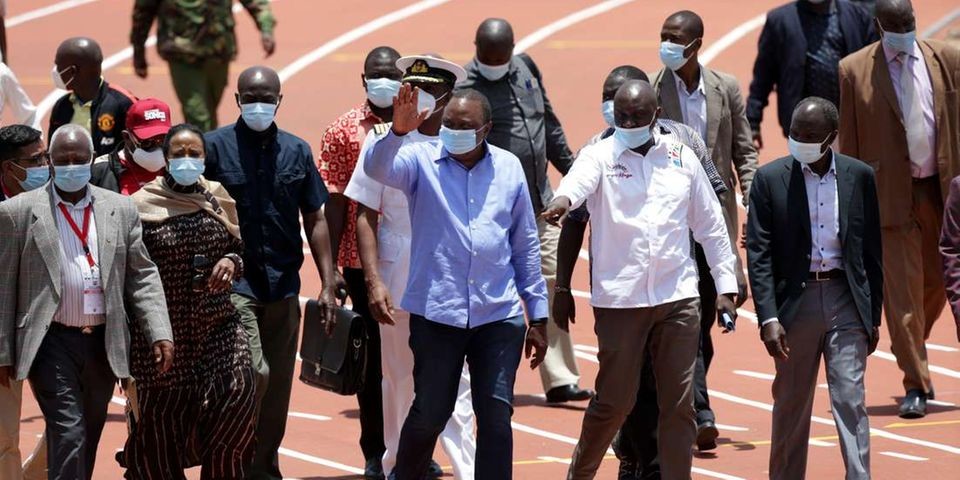
Nation Sport has learnt that State House has asked the two Speakers – Justin Muturi and Kenneth Lusaka – to avail the Bill to the President on Wednesday for the signing ceremony in what is seen as deliberate effort to beat the deadline put in place by the World Anti Doping Agency (Wada).
The signing of the Bill Wednesday will pave the way for Kenya’s participation in major international events in 2021, including the Olympics which were called off this year due to Covid-19 Pandemic.
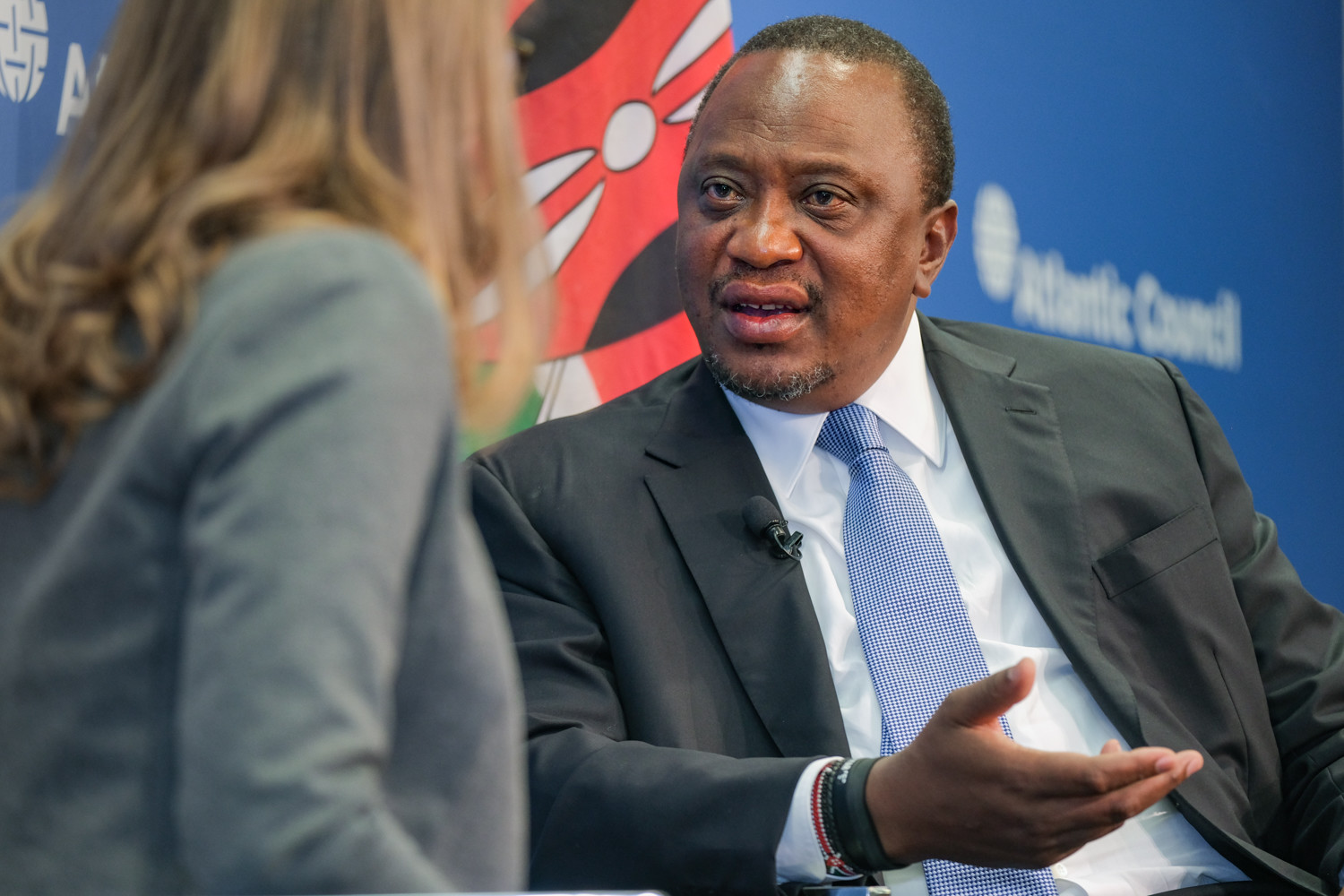
The code, which aims to ensure that athlete rights within anti-doping are clearly set out, accessible, and universally applicable, was approved by the World Anti-Doping Agency (Wada) and published in June 2020 and comes into force on January 1, 2021, the time in which the Kenyan law must be in place.
Senators who contributed to the debate on the Bill railed at the Ministry of Sports, accusing it of incompetence and acting as if the Wada deadlines did not exist.
Even though the code was adopted in September, the Ministry of Sports only submitted the draft to Parliament on December 7, long after Parliament had gone to Christmas recess.
Agents at fault
They however hailed the code as an important milestone in the career of Kenyan athletes arguing that it will guarantee greater success especially for long distance running that Kenya is famed for.
They however took a dig at the agents who they accuse of taking advantage of inexperienced athletes and initiating them into doping for self-gain.
Bungoma senator Moses Wetangula urged the government and the world athletics governing body to consider punishing agents in situations where the athletes are caught on the wrong side of doping.
“Most of the price money received by athletes ends up in the pockets of the agents. That is why they hold our athletes as guinea pigs,” Mr Wetangula told the House, adding that it is the agents who introduce athletes to performance enhancement drugs for selfish gain.
“Such crooked agents should be expelled from Kenya and if necessary prosecuted and imprisoned as a deterrent for destroying careers of young innocent athletes.”
Nandi senator Samson Cherarkey observed that doping has stained the Kenya sport in recent times, a fact he also blamed on the agents.
“This Bill offers an access card to our athletes. I urge all of us to pass this law so that it can open the way for Kenyan athletes to participate in international competitions.”
(12/29/2020) ⚡AMPby Ibrahim Oruko
Ugandan Joshua Cheptegei has said his focus is on becoming just the eighth man to successfully complete the 5,000m-10,000m double at an Olympic Games
The Ugandan, 24, set world records over both distances last year, adding to the 5,000m world gold he won at Doha 2019.
"It would be a mountain to climb, but the challenge is up to me," he told BBC World Service Sport.
"It is demanding a lot, in terms of racing and mindset but I want to give myself a try to win both gold medals."
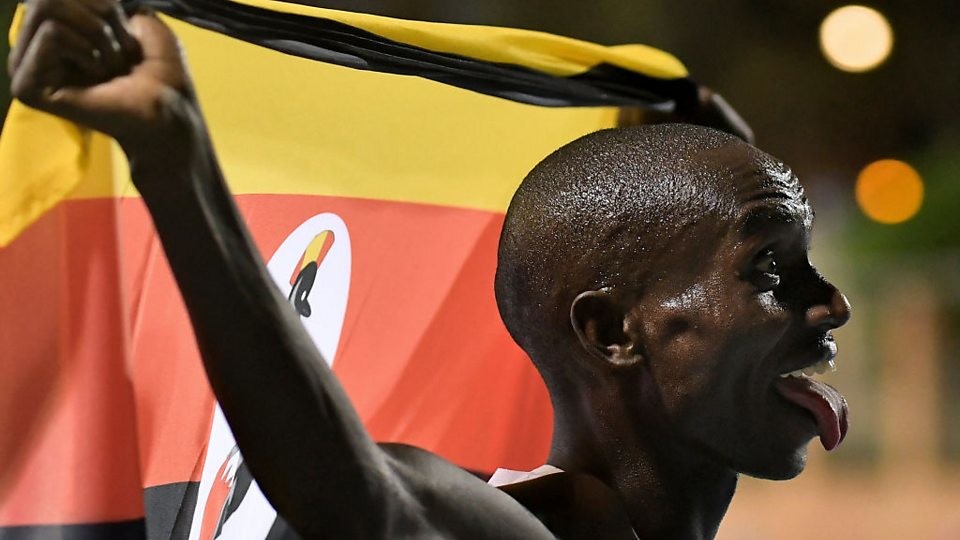
Seven men have won both 5,000m and 10,000m golds at the same Olympics, with Britain's Mo Farah doing the double at both London 2012 and Rio 2016.
As a teenager, Cheptegei finished eighth and sixth in the 5,000m and 10,000m finals respectively in Rio.

"It would be really amazing to win the double, but if I win gold in the 10,000m I would still be grateful," Cheptegei added.
Uganda have won only two Olympic gold medals in their history, with John Akii-Bua winning the 400m hurdles in 1972 and Stephen Kiprotich winning the marathon 40 years later in London.
Cheptegei wears Nike's ZoomX Dragonfly spikes, which transplant the sportswear giant's controversial combination of highly resilient foam and carbon plates to the track.
However Cheptegei believes that, with the same technology available to all athletes if they want it, he doesn't have any unfair advantage.
"The shoes really do help," he said.
"But in this case the shoes are not only available to Mr Cheptegei.
"They are available for everyone who wants to attack the world record.
"You have seen the likes of Yomif Kejelcha, Selemon Barega...it is not about shoes only, but athletes having this period concentrating more on training and not traveling.
"I was focused on just this one thing. And that was breaking the world record."
(12/29/2020) ⚡AMPby BBC Athletics
Tokyo 2020 Olympic Games
Fifty-six years after having organized the Olympic Games, the Japanese capital will be hosting a Summer edition for the second time, originally scheduled from July 24 to August 9, 2020, the games were postponed due to coronavirus outbreak, the postponed Tokyo Olympics will be held from July 23 to August 8 in 2021, according to the International Olympic Committee decision. ...
more...Veteran sprint hurdler Tony Bowman battles through a tough year
After recovering from heart problems the remarkable veteran sprint hurdler has struggled to train and compete in 2020 and lost his wife to Covid-19 but he refuses to be downbeat
Overcoming adversity is a regular theme in athletics. Yet Tony Bowman has endured far more than his fair share of problems in the last year or so.
The 85-year-old has undergone surgery to correct irregularities in his heart and then, earlier this year, his wife died after falling ill with coronavirus.

In an attempt to maintain his own impressive levels of fitness when training facilities were closed due to the pandemic, he bought his own set of hurdles and began practicing on an all-weather hockey pitch, only to find there are barely any competitions he can actually do.
Despite this he talks with optimism about 2021 and is looking forward to attacking world masters records in his age group.
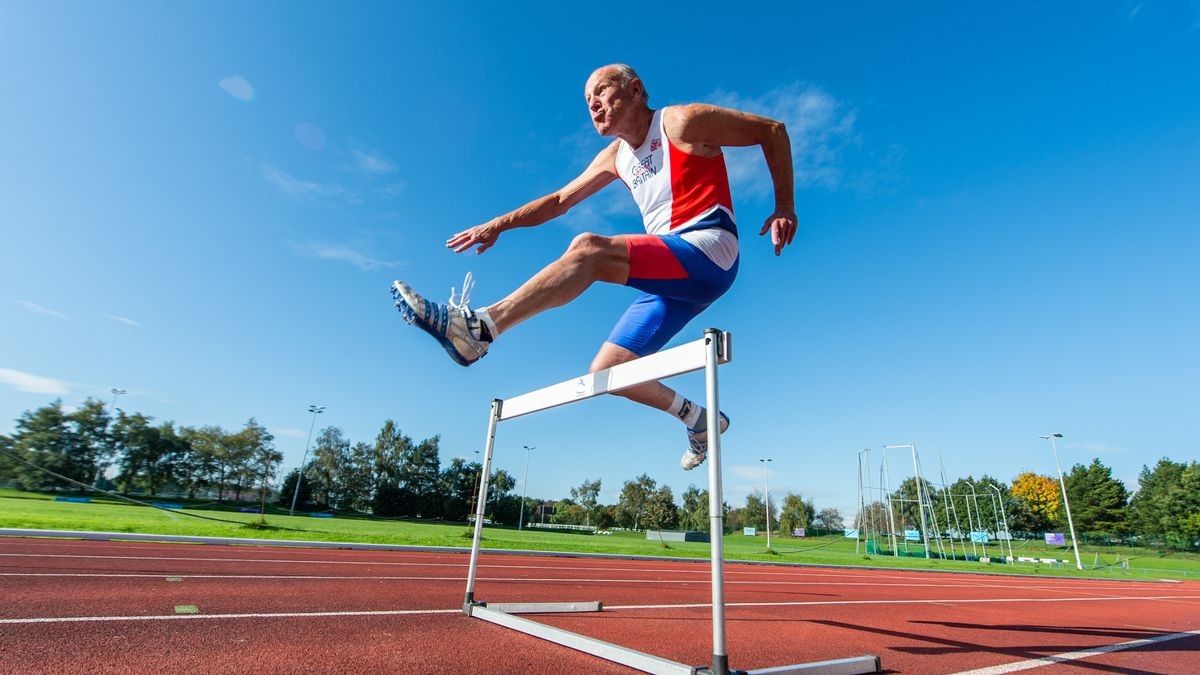
Of course the Leeds-based athlete is not merely a ‘tough nut’. He has considerable talent too.
After being inspired by athletics after watching the 1948 London Olympics as a teenager with his dad, in 1952 he won a silver medal in the sprint hurdles at the English Schools Championships in Bradford and then, after a break of many years, he returned to the sport as a veteran to more or less carry on where he left off.
“I gave up sprinting when I was about 26 and then concentrated on playing hockey and tennis,” he says. “But then someone told me about veteran athletics and I was 42 at the time.”
In recent years this remarkable man has won world and European masters titles in sprints, hurdles and combined events and has broken world records recently in the over-80s age group.
Bowman fizzes with energy when he talks. “I’m very competitive and don’t seem to have lost that as I’ve got older,” he enthuses. “If anything I’ve got more competitive.”
For years he has paid for his own travel to international masters championships, winning multiple gold medals for Britain, using his own savings and pension. “I don’t get any funding or sponsorship whatsoever,” he says. “The only sponsorship that I’ve ever had is with David Lloyd where they gave me free membership for about three years with a tracksuit and top etc, but then the firm changed hands and they dropped all the sponsorship.
“Fortunately I’ve worked all my life and never been a smoker or a drinker so I use my savings and pension. It’s something I absolutely love so I don’t regret it.”
If he does have one regret, it is maybe not focusing more on athletics as he emerged from his teenage years. After starting national service with the RAF he became intimidated by the increased height of hurdles as he got older and temporarily quit the sport. Still, he had great fun at the time as a young hurdler.
“My ambition is to run the 100 metres when I’m 100 and to live until I’m 120,” he says. “I will be 100 in only 15 years’ time and I only feel in my 50s now.
“You ask me what’s kept me going. I think I’m one of these very fortunate people. Not only do I do a lot of sport but I’m keen on dancing – ballroom, salsa, jive, cha-cha-cha, all that jazz – and I’ve won competitions with my dancing partner with Strictly Come Dancing people like Craig Revel Horwood judging. That all helps to keep me young.”
His advice to aging athletes who want to succeed? “Well, a lot of it is in the genes,” he says. “But if you’re enthusiastic for the sport then that counts for a lot. What can I say? Just keep at it.”
(12/29/2020) ⚡AMPby Athletics Weekly
Britain’s triathlete Tom Bishop gearing up for Tokyo 2021 challenge
At 29, Derby’s Tom Bishop is one of Britain’s leading triathletes and has his best chance yet to take part in the Olympics when, hopefully, they go ahead in Tokyo next year. Here, Bishop tells the story of his early career and preparations for Tokyo.
I grew up with my twin brother, David, on a cul-de-sac in Mackworth. We moved to Allestree and Woodlands Community School, as it was called then, was where my triathlon career really began.

As kids, we never took sport too seriously. Rather, we just did it and enjoyed ourselves. But there came a point when a decision had to be made about our dedication and commitment to triathlon and this choice came when we were 16.
You could say it was a coming of age moment and a few sacrifices had to be made. Growing up, we had joined numerous sports clubs, including school football and cricket teams, but these had to end.
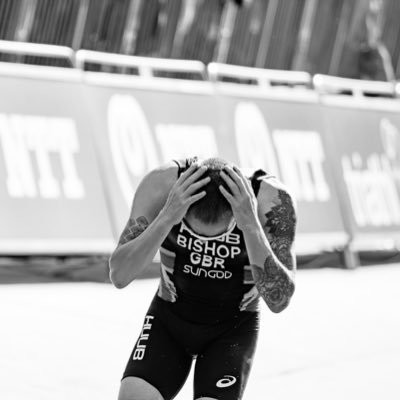
We were also members of City of Derby Swimming Club and Derby Athletics Club and they were fundamental in developing our triathlon skill set.
As sixth formers, we had a bit more time in the week to train and began to get access to the British Triathlon Team in Loughborough, with early morning sessions three times a week before school and a general increase in training hours, eight to 18 hours. We also started to cycle with the local group De Uno, adding sessions at lunchtime and after school, too.
The load was tough to balance around A-level studies but we both achieved some solid grades earned spots at university, myself at Leeds and David at Loughborough.
Our A-level years saw us develop into the best junior triathletes in the country, winning multiple medals, and I even represented Great Britain at youth and junior age groups. I said it was tough but we loved every minute, pushing each other to be the best we could.
At the end of my first year, I came second at the junior World Championships and the following two years I came third twice at under-23 level. By the time I graduated, I had won three world medals as a junior and under-23 and turned pro, racing full-time for the GB squad.
Looking forward to next year, Tokyo is the big focus. The first few months will see me racing to gain qualification points, hopefully starting in Abu Dhabi on first weekend in March, though it is yet to be scheduled.
The next block of racing will take me to Asia, with a race in Chengdu, then Osaka and one of the Olympic selection races in Yokohama, Japan. Simply, I need to be at my best and battling for podiums if I want to score enough points to hit the British Team’s selection criteria.
It’s going to be challenging but I’m up for it. Obviously, there’s still huge uncertainty about what the year will look like but I have learned a lot this year about how to deal with these times.
(12/29/2020) ⚡AMPby Colston Crawford
Tokyo 2020 Olympic Games
Fifty-six years after having organized the Olympic Games, the Japanese capital will be hosting a Summer edition for the second time, originally scheduled from July 24 to August 9, 2020, the games were postponed due to coronavirus outbreak, the postponed Tokyo Olympics will be held from July 23 to August 8 in 2021, according to the International Olympic Committee decision. ...
more...45th Annual Marshfield Road Runners New Year's Day Marathon and Half-Marathon is set to go on friday
Organizers of Marshfield Road Runners, said that they are excited to announce that the Marshfield Road Runners Club will be holding our annual New Year’s Day Marathon and Half Marathon on Friday, January 1, 2021 at 9am at the Marshfield High School.
We will hold two starts: 1 for registered marathon runners and 1 for registered half marathon runners. Each race will be capped at 20 runners – first come, first serve.
(12/28/2020) ⚡AMPMarshfield Road Runners New Year's Day
One of the oldest Marathons in the country, now with a Half Marathon option as well! USATF Certified, Boston Marathon qualifier, double loop through the wooded, rolling streets of Marshfield, MA. There will be a time cut off for marathon at half way mark based on Boston Marathon qualifying times for age of competitors. Registration is day of only....
more...Protein sources are the best for your heart and immune system
Protein is vital to build and repair body tissue and fight viral and bacterial infections. Immune system powerhouses such as antibodies and immune system cells rely on protein and a good way to get heart-healthy. Too little protein in the diet may lead to symptoms of weakness, fatigue, apathy, and poor immunity.
Plant and animal proteins:
But it's just as important—perhaps even more so—to focus on the source rather than the amount of protein you're eating. Plant-based protein sources (beans and nuts) also include healthy unsaturated fats and fiber, both of which help lower harmful LDL cholesterol levels. Fiber also helps lower blood pressure, and most Americans are woefully short on this key nutrient.
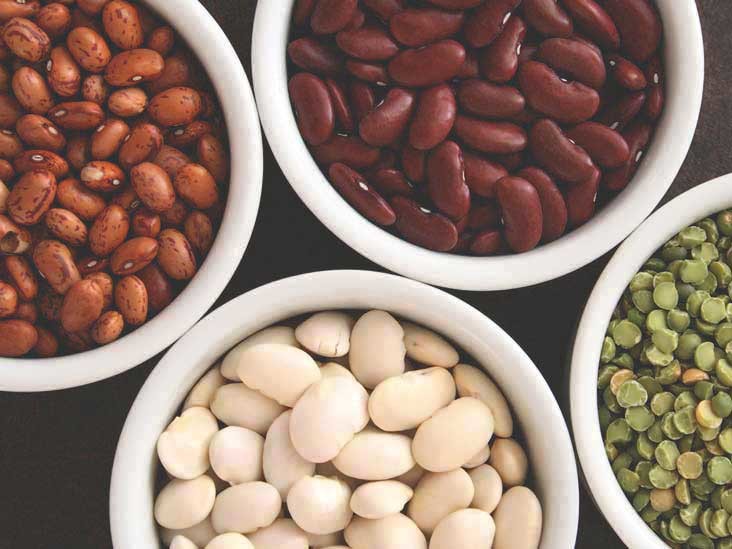
Most animal-based protein sources contain saturated fat, which is less healthy than unsaturated fat. Red meat and eggs also contain a compound called carnitine that, when broken down by gut bacteria, forms a substance that's been linked to hardening of the arteries. Certain types of fish, on the other hand, are rich in omega-3 fatty acids, which may help prevent blood clots, calm dangerous heart rhythms, and lower blood pressure.

Below are additional tips on various protein-rich foods.
Legumes (beans and peas). If it grows in a pod, it's a legume. Choose from black beans, garbanzos, pintos, split peas, and many more—including soybeans, which come in a variety of forms, such as fresh whole green beans (edamame), soy milk, and tofu. Eating beans has been linked to a lower risk of heart disease. Add them to soups, stews, or salads, or try bean-based dips such as hummus.
Nuts. These include walnuts, almonds, cashews, pistachios, and a host of others, including peanuts (though they're technically a legume). People who eat nuts regularly may be less likely to die of heart disease than those who rarely eat nuts. Eat a small handful (about a quarter-cup) a day.
Fish and shellfish. Fatty fish such as salmon and tuna are a good way to get heart-healthy omega-3 fatty acids, and people who eat fish may have fewer heart attacks than those who avoid it. For this reason, the American Heart Association recommends eating at least two servings a week. Other varieties of fish and seafood are good sources of protein as well and often low in fat.
Dairy products (milk, yogurt, and cheese). Because dairy contains saturated fat, experts have long recommended choosing low-fat or nonfat versions. However, most studies show no link between heart disease risk and dairy products, regardless of milk fat levels. The national dietary guidelines recommend two to three servings of dairy products daily, but Dr. Willett advises sticking to one to two servings daily. With such limited amounts, full-fat versions are okay, he says. "The worst are low-fat dairy products that include added sugar, which includes most low-fat yogurts," he adds.
Eggs. Eating an egg a day appears to be neutral as far as heart disease risk goes. But for people with diabetes, eggs appear to elevate heart disease risk. So if you have diabetes, limit yourself to no more than three eggs a week.
Poultry (chicken and turkey). Compared with red meat, poultry has fewer calories and much less saturated fat, so it's a healthier choice. There's no need to remove the skin before cooking, as it seals in moisture. The fat in chicken skin is mostly unsaturated, so feel free to eat it if you enjoy it, says Dr. Willett.
Red meat (beef, lamb, and pork). Because other protein options are healthier, Dr. Willett recommends eating red meat only occasionally—or at least limiting yourself to one serving a week. The proposed 2015 federal dietary guidelines also advise limiting red and processed meat, noting that a plant-based diet is "more health-promoting." Also, if you care about your contribution to climate change, limiting red meat intake is one of the most important steps you can take, he adds.
Processed meat (bacon, sausage, hot dogs, and deli meats). Compared with fresh meat, processed meat has preservatives, slightly more fat and calories, and four times the salt. These differences may explain why research finds that people who eat processed meat once a day have a higher risk of heart disease and diabetes than those who pass up processed meats.
(12/28/2020) ⚡AMPby Harvard Medical School
A few important notes for any new runners out there training through the winter for the first time
Running in the winter is much different than running in the summer. In the summer, it’s a carefree activity and it’s not too hard to convince yourself to get out the door. In the winter, though, you have to plan for the cold and the dark, and you might find yourself struggling to find motivation.
Running through the months of November to March can be difficult enough, so here are a few tips to make training easier this winter for any new runners out there.
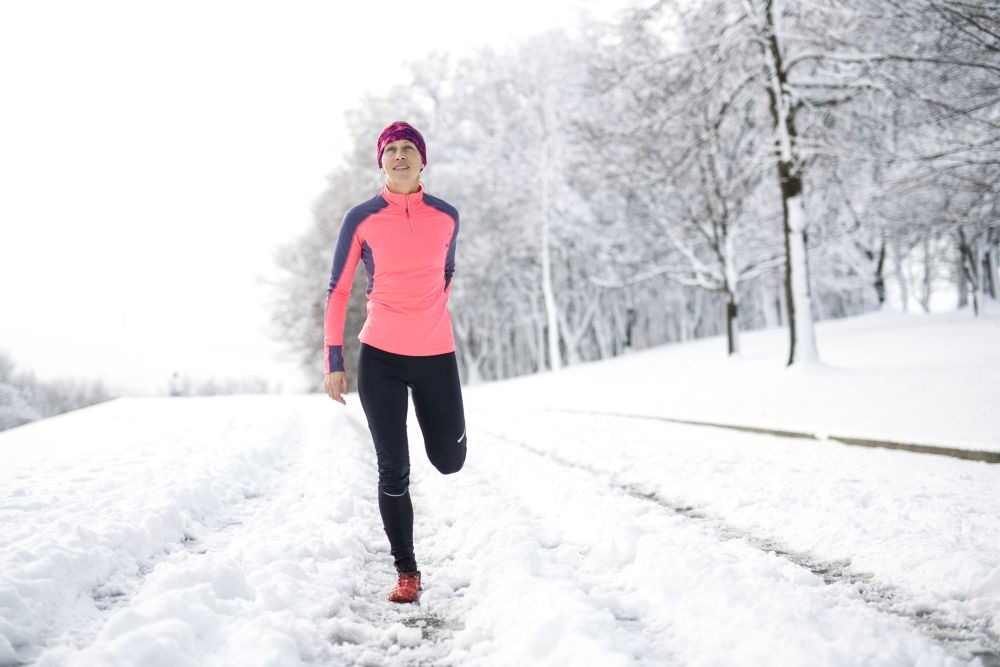
Star of easy:

Warming up is always important, but especially so in the winter. Even if you aren’t planning on going out for a fast or hard run, you should take it extra easy for the first five or 10 minutes of your session. Once your body warms up, you can pick up the pace.
Check the weather:
Winter sometimes is unpredictable. One day it can be 5 C and the next it can be -10 C. Unlike in the summer, when you can pretty much always get away with wearing the same type of outfit, in the winter, you need a running gear lineup. Some runs all you’ll need is a shirt or two, leggings, your hat and gloves, but on other runs it’ll be necessary to throw on a sweater, a jacket, a buff and maybe even more. Before every run this winter, take a look at the weather forecast so you can dress accordingly.
Leave things behind:
It’s better to wear too many layers rather than too few. You might start a run all bundled up, but as you get moving, you might start to get too hot. If this happens to you, don’t be afraid to leave things behind and go back to pick them up later. Tie your jacket or sweater to a signpost or tree, make sure you know exactly where it is and keep running. This tip probably isn’t the best for city runners, but anyone in smaller towns can probably get away with it without worrying that their gear will get taken.
Don´t trust the snow:
Be careful when you run on potentially slippery roads. Even if the snow on the ground looks like it’s packed down well, it can be slippery. Sometimes only a small dusting of snow covers the ice, and if you step on that, you’ll end up on the ground. It’s especially important to take it easy around corners. It’s OK to run fast in the winter, but make sure you focus on where you’re stepping so you can be as safe as possible every run.
Running the day if possible:
potentially slippery roads. Even if the snow on the ground looks like it’s packed down well, it can be slippery. Sometimes only a small dusting of snow covers the ice, and if you step on that, you’ll end up on the ground. It’s especially important to take it easy around corners. It’s OK to run fast in the winter, but make sure you focus on where you’re stepping so you can be as safe as possible every run.
Try out a race:
This winter you won’t be able to find an in-person race, but that doesn’t mean you can’t jump into virtual events. A lot of people reserve races for the spring, summer and fall, but why deprive yourself of competition for an entire third of every year? Do yourself a favour and enter some virtual races this winter. It’ll help motivate you in training and add some fun to your schedule.
(12/28/2020) ⚡AMPby Ben Snider-McGrath
For runners, 2020 was a year of noes, no races, no group runs, that is the reason why runners are looking forward to 2021
For runners, 2020 was a year of noes. No races, no group runs and, at least for a while, no (or very little) fun.
We eventually figured out how to have fun while keeping safe, which is one of the reasons next year looks like it has the potential to be better than 2020. Although the pandemic won’t magically end when we ring in the new year, the are several reasons runners should look forward to 2021, which could be a year of yeses.

Back to races:

It doesn’t look like mass participation races with thousands and thousands of runners will make a comeback in 2021, but that doesn’t mean smaller events won’t be held. As the pandemic wore on throughout the year, race organizers and event teams came up with plans for COVID-friendly runs. These organizing teams have worked closely with local and provincial health officials to create safe race formats, and that planning won’t stop throughout the winter.
Come spring, there could be a good number of race opportunities for runners across Canada, and while you shouldn’t expect to run alongside 10,000 of your closest running buddies, you might get the chance to run in a real race in 2021, which is definitely a reason to get excited.
The fall marathon schedule:
With the postponements of the Tokyo, Boston and London marathons, all six World Marathon Majors (WMMs) are set to be run in the fall of 2021. The mass participation events at these races might not be able to go ahead as planned, but after the success of the London Marathon’s elite-only event this year, there’s a good chance that the other five WMMs will follow suit and host elite fields next year.
This packed fall schedule will make for an exciting few weeks of races for running fans to watch, which will be a welcome change following 2020, a year in which we only saw a few elite marathons.
One of the biggest dissapointments for athletes in 2020 was the cancellation of the Tokyo Olympics. As we learned this year, nothing can be considered a sure thing in the age of COVID-19.
But International Olympic Committee officials have expressed their confidence that the Games will go ahead next summer. At the moment, the Games appear to be a go, and that is a big reason to look forward to 2021.
When COVID-19 first hit, we were thrown into the world of no races with pretty much no warning. Now, after months of living through a pandemic, we know how to keep ourselves busy when we can’t race. We’re confident that race organizers will be able to get their events up and ready to go with proper COVID-19 guidelines in place next year, but now we’ve all gotten creative and figured out how to come up with different running challenges. Whether you’re into time trials, ultra challenges or any other kind of personal competition, you’re set for an entertaining 2021.
Virtual challenges and events:
This is the same deal as the last reason to look forward to 2021. When the pandemic first started, race organizing teams were caught off-guard and left without many options for their events. Many races transitioned to virtual formats, but some cancelled everything for 2020. In addition to planning COVID-friendly in-person races for next year, a lot of these organizing teams have virtual events and challenges ready for 2021, which means we’ll all have so many options to keep ourselves busy, no matter how the global health situation looks.
(12/28/2020) ⚡AMPby Ben Snider-McGrath
Lake Biwa Marathon to be Subsumed Into Osaka Marathon beginning in 2022
On Dec. 25 it was learned that the longest-running marathon in Japan, the Lake Biwa Mainichi Marathon, will become a part of the Osaka Marathon beginning in 2022.
Following Lake Biwa's 76th edition on Feb. 28, 2021, it will next take place under the tentative title of the 10th Osaka Marathon and 77th Lake Biwa Mainichi Marathon Combined Competition.

The Osaka Marathon executive committee finalized the plan at a meeting in Osaka on Dec. 25. Plans call for the 2022 race to take place on Feb. 27 utilizing the existing Osaka course.
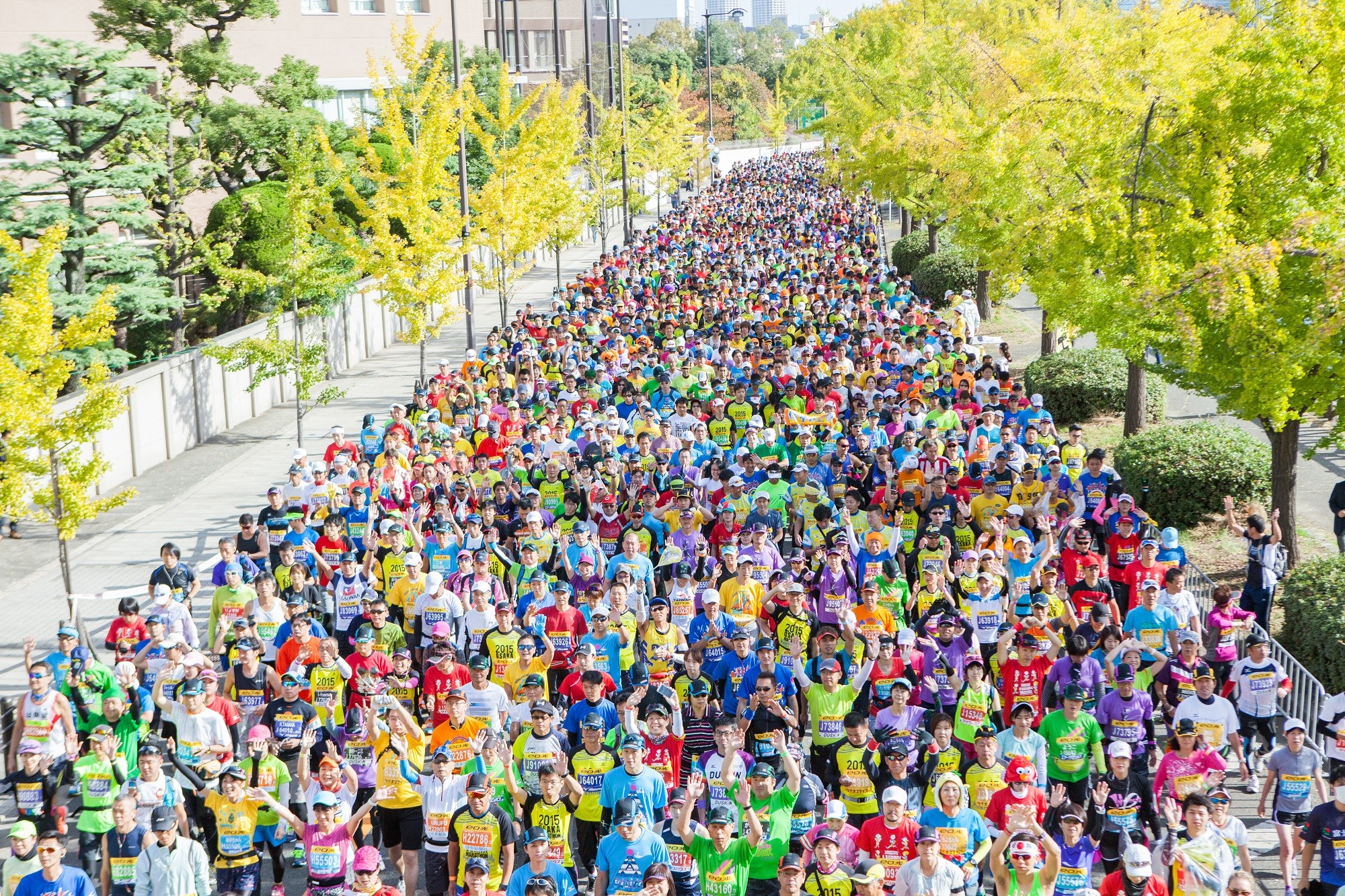
With an eye toward World Athletics' preference for large-scale races that combine elite and mass participation marathons, the plan will combine Lake Biwa's history of attracting top-level international and domestic athletes with Osaka's status as the second-largest mass-participation marathon behind only the Tokyo Marathon.
Organizers are aiming to go one level higher than Lake Biwa's current World Athletics ranking of gold to achieve the top-level platinum ranking, and hope that the arrival of such a prestigious event will help pave the way for success for the Kansai region at the 2025 Osaka World Expo.
Lake Biwa's first edition in 1946 was held in Osaka, moving to its current location in 1962. Its lakeside course has welcomed countless famous athletes and helped produced a large number of Olympic and World Championships team members.
The Osaka Marathon began in 2011. Starting in front of the Osaka Government Offices, its course passes many of Osaka's most popular tourist sites before finishing at Osaka Castle Park.
Its 10th running in late November this year was cancelled due to the coronavirus crisis, but it had attracted a field of 35,000 entrants.
(12/28/2020) ⚡AMPby Brett Larner
Osaka Marathon
In 2022 the Lake Biwa Mainichi Marathon and Osaka Marathon were held together. For 2023 the name of the marathon will be Osaka and both men and women can run the race. The original male-only competition was first held in 1946 and, having taken place every year since then, it is Japan's oldest annual marathon race. The early editions of...
more...A Runner At The Marathon Project Tested Positive For Covid-19 After The Race
A messageboard thread was started on Tuesday saying that a runner at Sunday’s Marathon Project race in Chandler, Arizona had tested positive for Covid-19 after the race. One of our volunteer moderators deleted the thread early Wednesday morning. The thread should not have been deleted as we have reached out to race organizer Ben Rosario and he has confirmed that there one racer tested positive after the race.
Here is what Rosario wrote us in a text message.
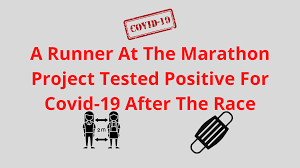
“Three athletes tested positive earlier in the week and had to scratch (didn’t travel as a result) so the protocols worked really well in that respect. One athlete had an issue post race (non covid symptom related) and had to go to the ER. They tested for covid while there and the athlete was positive. That athlete contacted anyone they spoke with that weekend (very minimal). We let all the athletes know in our post-race thank you email and specifically contacted anyone the athlete ran next to in the race (also minimal).
No one else has had any issue. With the protocols in place race weekend, we feel confident this was isolated. And because the athlete was positive Sunday night we also feel that the most likely scenario was that said athlete contracted the virus sometime between their negative tests earlier in the week and before race weekend began.
The athlete has mild symptoms but doesn’t seem like a bad case. So again, race weekend went as planned. The protocols worked really well. It’s unfortunate that this athlete got sick but we’re confident that it wasn’t a result of the race and that it wasn’t spread.”
(12/27/2020) ⚡AMPby Let’s Run
After Overcoming Drug and Alcohol Addiction, He Ran Off 216 Pounds in Two Years
“I used to assume that I’d be that fat guy forever—but my life is just starting.”
Before I started my weight-loss journey, I struggled with drug and alcohol addiction. But after I stopped doing drugs, the weight piled on. The drinking continued, and instead of drugs, I turned to food.

I fell into a vicious cycle of drinking and eating, and the bigger I got, the more depressed I felt. At my heaviest at 28 years old, I weighed 446 pounds. I was experiencing heart palpitations and sleep apnea because of the weight. My wake-up call was when I realized I had to hold my breath to bend down to tie my shoes.
I wanted a better life. I knew it would take time, but I needed to heal from my addiction and unhealthy habits. Finally, in my 30s, I became sober from drugs and alcohol. But I remember looking at my son and thinking becoming sober wasn’t enough—I wanted to create a healthier example for him. I was wearing a size 54 pant and a size 5X shirt. I felt like I wasted so much of my life—all my 20s—to the party scene. And if I didn’t change anything, I may not even make it past my 30s.
In 2018, I joined a CrossFit-style gym, and I had to run during the workouts. I remember running 100 meters, and thinking that I was going to die. I thought, This is crazy. I’ll never be able to run with my son.
At the time my son was running cross country at school and in local 5K fun runs. He asked me to run one with him, and I was so overwhelmed because I had just started running. But it motivated me to keep up with my workouts—and I made some serious dietary changes. When I was at my heaviest, I ate any food that crossed my path. I switched to eating an organic, plant-based diet whenever possible, and the weight started falling off. I lost 170 pounds and started running more.
I was honestly winging it when I started. A nice employee at my local running store gave me some good advice on training plans. Between that and watching some YouTube videos, I just listened to my body and mixed in sprints, calisthenics, and long runs. I began running 5Ks and 10Ks.
It wasn’t until 2020 that I really took running seriously. I had finally gotten comfortable lifting weights and doing group workouts when COVID-19 forced gyms to close. Not wanting to lose my results, I started running more.
I now run six days a week and have two strength-training sessions a week. I don’t follow a strict training plan but have slowly upped my mileage—I recently completed a 30-mile and a 40-mile training run. In November I did a virtual 100-mile challenge called the Corona Lisa 100 Mile Challenge, and I plan to run my first official marathon, the Clearwater Marathon, in January 2021.
In two years, I have lost 216 pounds. I’m hungry to show people that anything is possible, no matter how young or old you are, what your background is, or where you’ve come from. I’m hungry to push myself as far as I possibly can encourage others to change for the better.
Not only has running made me healthier physically, it has also been a mental and spiritual outlet for me as well. I run by myself with no headphones, and it gives me time to think, pray, and observe the world around me.
Running is something more than just running to me now. It’s time for me to just feel myself moving and to remember how hard it was just to walk down the street before. It reminds me how I used to be chained down with my addiction to drugs and alcohol. Running is more than just moving your feet— it’s a feeling of freedom with every mile I go.
The work isn’t over yet either. There is still a hunger. Currently, I’m hoping to do an in-person 100-mile race in 2021 at the age of 41. Plus, I want to lose another 30 pounds to reach my goal weight of 200. 
​
I wish everyone could feel the happiness that I feel while I’m running. I can appreciate the body I have. Even though I sometimes get overwhelmed by seeing my loose skin shake as I run, it makes me think how much I’ve changed from my past.
Running has brought so much happiness to myself and to my family. I used to assume that I’d be that fat guy forever—but my life is just starting. If I can encourage just one person by sharing my journey, then it’s all worth it. If you’re feeling discouraged about your weight, figure out what’s holding you up mentally, and eventually it will happen.

(12/27/2020) ⚡AMPby Runners World
Hot Water Immersion Via Hot Baths/Tubs And Performance
I’m always looking for possible interventions that can improve the health and performance of athletes I coach. It usually starts with a problem to solve. Here, I’m writing this article in December because the problem is that cross-population injury rates seem to go slightly up and overall performance seems to go slightly down in winter. There aren’t great studies to validate that hypothesis, but a 2014 master’s thesis found higher rates of musculoskeletal injury in winter months, attributing that increase to cold, icy and hard surfaces (cue Frosty the Snowperson saying, “That’s what she said”). And, in coaching, I rarely see the same levels of rapid progression in winter as in the other seasons, even controlling for training approach and background.
So we have the problem, and it boils down to this: screw winter.
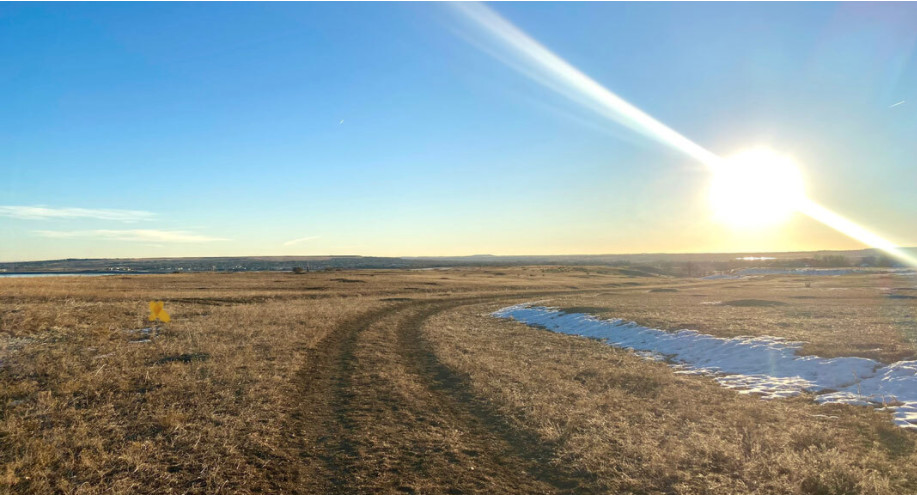
There are plenty of possible reasons for performance and health reduction during winter. Some options include the cold’s impact on blood flow, slippery surfaces affecting form, reduced Vitamin-D levels, lower motivation, fatigue from past training and inadequate ice-cream intake. I’m sure you can think of a bunch of others. But in thinking about this topic way too much over the years, I kept coming back to another explanation. Maybe it’s related (at least partially) to blood volume.
A reduction in blood volume (primarily via plasma volume, consisting mainly of the water content in blood) during winter has been observed for nearly 100 years (see this 1940 article in the American Journal of Physiology). A 1950 article in the Journal of Physiology pegged the seasonal blood-volume difference at 8.6%, and subsequent estimates have varied around that number depending on where you look. While there is no set number for every person, that 1950 article is titled “Seasonal Changes in Human Body Fluids,” so I know I trust it.
There are a few principles related to blood volume that could be important here.
One, as outlined by a 2010 article in the Journal of Applied Physiology, heat acclimation and increased blood volume can be associated with improved performance in both hot and temperate conditions. Two, there is growing evidence that hemoglobin mass may be affected by blood-plasma volume changes. A 2019 study in Frontiers of Physiology and a 2020 study in Experimental Physiology found that hemoglobin mass increases after plasma volume increases in athletes training in the heat. Three, both plasma volume and hemoglobin mass may impact how the body performs, heals, and adapts. The physiology of how it works gets complicated and is not 100% direct (incorporating seasonal changes in hematocrit, or the ratio of red blood cells in total blood volume), so the exact relationships are not always certain.
The million dollar question follows: how the heck would those principles apply in winter? Each of those blood-volume concepts is based on beneficial adaptations to heat, so when thinking about winter we are extrapolating the inverse—negative adaptations to lack of heat. Perhaps the body adapts to cold weather with time and none of the issues are relevant when that equilibrium is reached. There are studies on seasonal hematological variation (see this 2013 review in Sports Medicine) that do not provide a definitive answer for athletes. In addition, there is no settled evidence that cold-weather performance is significantly affected by heat adaptation (2014 review in Sports Medicine), so that part may not be relevant at all.
Either way, we do know that blood volume usually decreases in winter and increases in summer. I have written articles on heat acclimation to improve performance and blood volume’s role for fitness, but there are no perfect studies looking at the training question I can’t stop thinking about. If blood volume is important in summer, might it also be something to think about (at least a little bit) in winter?
I think it might be.
That sentence is powerful prose, I know. The conclusions to come rely on the physiological theory that blood volume matters for athletes even in cold conditions (which is debated), and that natural, seasonal reductions in blood volume could affect injury rates and performance. Perhaps that is part of why Scandanvian athletes are so famous for their saunas (fun side note: there are 2.2 million saunas in Finland for a population of just over 5 million people). And all that prelude brings us to the topic of the article: hot-water immersion via baths or tubs could play a role in winter health and performance.
Let’s take a step back first. We have known for a long time that exposure to heat causes rapid expansion of blood volume. As outlined in a 2000 review article in the Medicine & Science in Sport & Exercise journal, total blood volume is primarily composed of the sum of erythrocyte volume (red blood cells) and plasma volume (mostly water plus some dissolved proteins, glucose, clotting factors, electrolytes, hormones and other components). Plasma volume can adapt to environmental changes rapidly. For example, a 2015 study in the European Journal of Applied Physiology found a 17.8% increase in plasma volume in highly trained cyclists after just four exposures to post-exercise sauna. Plenty of other studies back that up. And recent studies tie those plasma volume increases to red-blood-cell-volume increases too.
Hot-Water Immersion Studies
A 2015 study in the Scandinavian Journal of Medicine & Science in Sports had 17 non-heat-acclimated males do a 40-minute easy run every day for six days, followed by hot-water immersion in 104 degrees F water (40 degrees C) for 32 to 40 minutes. The hot water caused heat acclimation similar to what would be expected from traditional sauna protocols—lower skin temperature and perceived exertion in temperate and hot running, improved performance in hot running and a non-significant improvement in temperate running. The study did not measure blood volume, but those adaptations are likely at least partially associated with increased plasma volume.
A 2018 study in Frontiers of Physiology followed up on those findings, based on the assumption that the principles may apply differently to trained endurance athletes since there is some amount of heat training in normal running at baseline. The study used the same protocol, but with eight trained athletes and eight untrained athletes. The findings of the 2015 study were reproduced in both groups. A 2019 study in Frontiers of Physiology found that athletes following the protocol retained the heat acclimation benefits for at least two weeks. Yet another 2019 study in Frontiers of Physiology found that delaying the hot-water exposure from right after exercise to eight hours later still had similar benefits, though of slightly less magnitude.
That’s all conjecture, so the exact mechanism isn’t the most important thing in the world. What matters more is the general principle that some passive heat exposure could be helpful even in winter months.
If you have a hot tub, consider spending some time in it. I wouldn’t suggest mimicking the study protocols unless you have a doctor and a crash cart on site, since 30 to 40 minutes at 104 degrees F could cause a deadly case of prune fingers and an even deadlier case of heart attack. But all of these benefits likely happen on a spectrum, so some time in the tub will likely have some benefits, even if they’re not as rapidly undeniable as the six-day protocols in the study.
Most of us will not have a hot tub, though, unless that student debt forgiveness plan goes through. So what are we to do? In the last few years, a few athletes I coach have sworn by hot baths for the same purpose. Their anecdotes are powerful enough that my wife Megan and I both take hot baths each day.
Now we get to the good stuff.
We have the problem: winter can suck for running health and performance. We have a hypothesis: that suckitude may at least partially be related to natural changes in blood volume. We have data that may be relevant: studies show heat acclimation is partially associated with increased blood plasma volume, and that hot-water immersion improves heat acclimation, likely increasing blood plasma volume. Now let’s conclude with another unproven (possibly wrong) hypothesis: hot-water immersion could make winter running more fun by giving blood volume a helpful nudge when it wants to go to sleep for the season.
Does it make a difference? I have no freaking clue. My routine is to fill up the bathtub with some soothing hot water and meditate for 10 to 20 minutes (by meditate, I mean listen to a bumping playlist), until I break a nice sweat. The first week I did it this year, my heart rate after 10 minutes was 10 to 20 beats per minute higher than it is now, possibly indicative of some acclimation effects over time, but that’s subject to tons of confounding variables.
Long story short: There is some physiological basis for benefits from hot baths or hot tubs (or even extra hot showers), both in winter and summer. However, the evidence is by no means definitive or even overly persuasive outside of the extensive study protocols. But I do know this for a fact: Some time in a hot bath is awfully relaxing.
And whether it’s winter or not, we could all use a little bit of extra time to relax.
(12/27/2020) ⚡AMPby David Roche
What the heck is "runner's face"?
A recent post on the Get the Gloss site out of the U.K. has some runners looking anxiously in the mirror, asking themselves, “Do I have ‘runner’s face’?” What even is runner’s face?
Then it seems blindingly obvious: running makes your face sag.
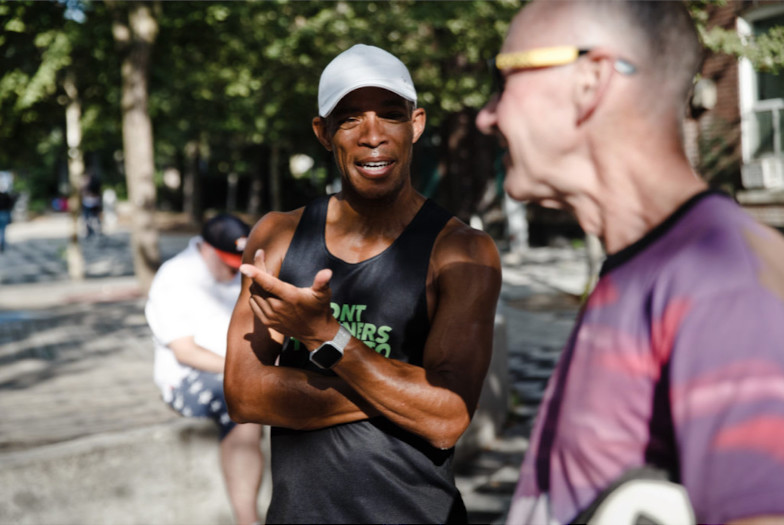
The post includes photos of the author (a runner) taken before and after receiving injections of a dermal filler product derived from cellulose that’s supposed to stimulate the body’s natural collagen production. It reportedly continues to puff out your wrinkles for three months after the initial treatment, and lasts two to four years.
Toronto cosmetic surgeon Dr. Oakley Smith confirms that runner’s face is definitely a thing: “It tends to be among people who are obsessive runners – the ones who have to run every day,” says Smith. “They tend to be thin, and are probably very healthy, but they don’t look healthy because they’ve lost a lot of fat from their face, and it makes them look gaunt. It’s not a good look at the moment.”

Of course, aging runners aren’t the only people taking advantage of these treatments, and Smith says there’s no proof that it’s the repetitive pounding of the pavement that causes this sagging to occur. But it makes intuitive sense: “Why would the face be immune to the repetitive strain that affects the other parts of the body?” he asks (rhetorically). The usual places where this shows up is at the temples and just below the cheeks. Typically, these areas can be volumized with fillers such as the product mentioned above, to give a more healthy and youthful appearance, though Smith says that unlike the product mentioned above, most fillers used to treat the condition are made from hyaluronic acid (H.A.), which is produced naturally in the body.
Some people opt for botox injections instead, which is not a filler, but diminishes the appearance of wrinkles by paralyzing facial muscles.
He cautions that there is wide variation among fillers. “If you inject pure H.A., it will be gone in a week,” he says, explaining that the molecules are modified so it takes longer for the body to break them down, and much depends on the skill and experience of the professional administering it. He adds that there are a number of other, non-H.A. products (such as the one mentioned in the post) but they are less reliable. “H.A. fillers are mostly pretty safe and predictable, without a lot of complications.”
The cost for treatment with fillers depends on the quality of the product and the experience of the health professional administering it, but typically ranges from $400 to $800 per syringe.
(12/27/2020) ⚡AMPby Running Magazine
Think like a pro - Why all runners should practice these mind games
The pace at which the elites un is something that amazes me. The way they move effortlessly, as if they don’t fully comprehend how fast they are travelling, while the rest of us watch in awe. One of the beautiful parts of my job is interviewing some of these athletes, men and women whose abilities leave me wondering, how do you run that fast?
A few days after he ran the London Marathon, I spoke with Eliud Kipchoge, the first man to break two hours for the marathon, and the world record holder. Kipchoge’s race hadn’t gone to plan (he finished in eighth place) and I wanted to know how he dealt with that mentally, both during the race and after he had crossed the finish line.

Much of what he said was inspiring, but one thing stuck with me: he talked about the law of substitution, the idea that your mind can hold only a negative thought or a positive thought at onetime, but your mind can also choose to replace one thought with the other.
I realised it’s something I have been forced to do on several occasions. Things going wrong midrace or on training runs because of injury, poor fuelling, gastric distress, cramp, overtraining or not enough training; or just the simple fact that it wasn’t my day.
The question is, what can we do to prepare for or combat situations such as these, regardless of where we are on our running journey? Here are a few tricks that have helped me along the way. The beauty of these mental exercises is you can use them one at a time or all at once.
Visualise
Create a mood board of what your win looks like – create this in your head or make it physically. Visualise your goal completed. This method has got me over the finish line many times at the London Marathon. When the going gets tough, I think about the finish, the route, people cheering, crossing the line, holding the medal, celebrating.
Make your mantra
A mantra is a word or phrase repeated constantly to aid concentration, to help to keep you in the zone, motivated and moving. I have things that I scream at myself or whisper quietly, depending on how I feel at the time. My first has been with me since my first run; it is, ‘Get to the bottom of the road.’ My second has been with me since I hobbled over the line in tears at my first marathon and that is, ‘We’ve got this, we’ve been here before.’ Think of something meaningful to you that will help keep you going.
See your showreel
I like to have in my head a rolling showreel of beautiful memories that don’t have anything to do with running. A favourite is of me sitting on a beach with the water rolling in on my feet, the waves rippling and the sun beating down on my face. I smile and push on.
Think body and breath
Simply thinking of nothing but your body and breathing can send you into a meditative space, bringing an air of calm to your running. You might find that by listening to your heartbeat or footsteps, your body starts to relax, alleviating some tension that might be holding you back.
(12/27/2020) ⚡AMPby Runner’s World
8 Ways You Can Harness the Long-Run Mindset
Yes, you can shift your attitude to think beyond short-term outcomes and work toward lifelong success.
Confession: Tempo runs scare me. Those long, hard, sustained efforts always look impossible when I see them on paper. Doubt creeps in. Some of my worst workouts have come from tempo runs.
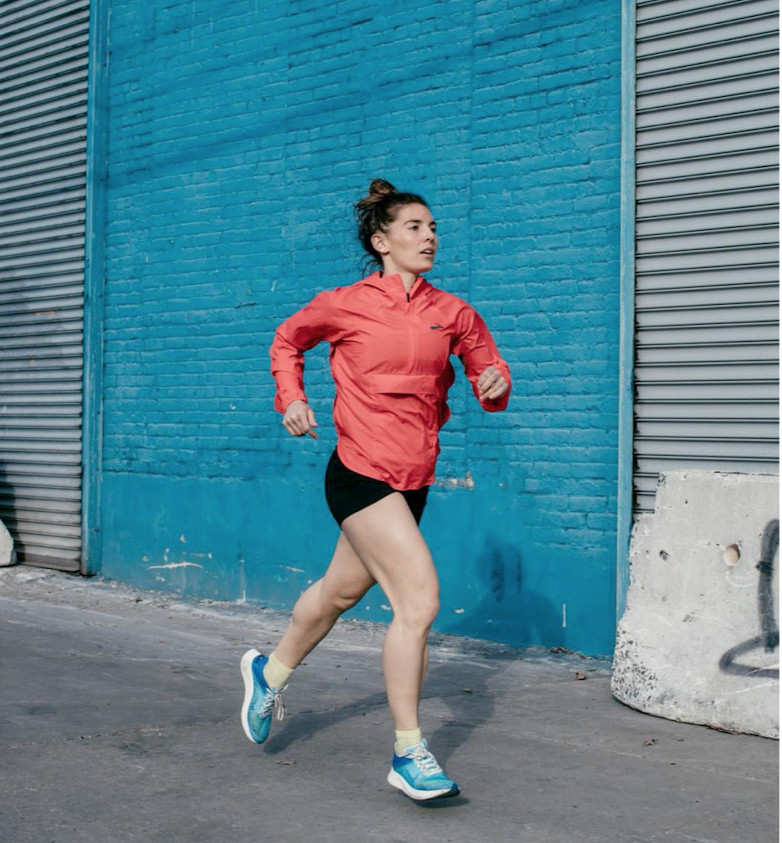
I remember one run in particular—a 50-minute slog at a ludicrous pace in the spring of 2018. I saw it on my plan and immediately began creating a laundry list of excuses as to why this was simply just not going to work, why I wasn’t fit enough, why I wouldn’t finish, why I would fail. Before I even laced up my shoes, I’d already convinced myself I couldn’t do this. Instead of using the warmup to find my groove, prepare for success, and get excited to make the best of it, I adopted a loser’s mindset, revisited my list of excuses, and fell further into a bad attitude.
How’d it go? You already know. I quit the workout mentally before I’d even started. Who knows how many times I stopped and restarted my watch? If you count the time I spent sitting on the curb feeling sorry for myself, it made for an awfully long afternoon. Well, it made for an awfully long few weeks, actually. One bad workout would derail me for days. The doubt lingered. I questioned my fitness. I cut more workouts short. And pretty soon, my fitness plateaued—or moved backward.
The problem, I realized, was that I treated my entire training plan like a tempo run—hard, fast, strict. In a tempo run, if you don’t hit your pace early, it’s nearly impossible to catch up. In my training plan, I felt like if I didn’t hit a workout early, I wouldn’t be able to catch up.
So how did I fix my mindset? I realized I needed to treat my training like my favorite workout: the long run.
I love long runs. I love ignoring my watch, settling into a relaxed pace, enjoying the route, and focusing on only one goal—finishing. I love that I can have a bad mile in the middle and still end strong.
Now, when I set a new goal and write a new training plan, I have what I call “the long-run mindset.” I find success and value in my training because I’m not desperate for immediate results like I have been in the past. I care more about the big picture and my long-term goals as a runner. Yes, there is still an important place for hard, fast tempo runs, but I have shifted my attitude to think bigger than short-term outcomes and work toward lifelong success.
At the start of a brand new year, as you evaluate, set, and chase new goals, I challenge you to have a long-run mindset too. How? Adopt the same tips and tools you need to survive a good long run into your training as a whole.
→ Pace yourself
A good long run always starts slow—slower than you think. It’s the same with training. Realistic timelines are essential for success. Generating movement forward at a speed that is sustainable is key. Consistent efforts over a long period of time reap large rewards. It’s not about a one-mile split in the big picture of success; it’s the amount of time it takes you to get there.
→ Focus only on your next mile marker
It’s easy to get overwhelmed when you recognize or overthink the long route ahead. So don’t do it. Focus on one mile (or one workout) at a time. Work toward mini victories that keep you moving in the right direction. Small and meaningful efforts on a consistent basis build substantial progress. But in the moment, all that matters is the next mile.
→ Find your why
Meaningless miles are the hardest miles, which is why during long runs, I like to run to somewhere—a brunch spot, my friend’s apartment, a gorgeous overlook. In training as a whole, your “why” will likely be more abstract and meaningful but just as important. What are you running toward? A healthier lifestyle? A PR? Figure out the reason for the miles, and they become easier.

→ Fuel your body
Fuel is vital during a long run, and just as vital on a daily basis. Eat healthy often, and then don’t be afraid to reward yourself. Every experienced runner knows that if you’ve waited until the wall to care about nutrition, you’ve waited far too long. Be proactive in your choices to live a well-balanced and energized life.
→ Stop looking back
It steals time and energy from your ability to move forward. Stop comparing yourself to an old version of you, and focus on the open road ahead. Worry less about what is behind you, and put time and effort into what is in front of you. This will not only lead to more overall happiness, but it will also bring you closer to where you want to be with a clear focus forward.
→ Allow room for adjustments
Mentally prepare and plan for curve balls. Nothing goes perfectly all the time, and the sooner that you can accept the challenges and mishaps that might come your way, the sooner you can be prepared to work through them and overcome unexpected obstacles. During a long run, that might mean slowing down because of the heat. In training, that might mean taking a break because of an injury or big change in your life. It’s okay to change goals midway through.
→ Keep it interesting
I design my long-run routes to be fun, new, and rewarding. It’s the same with training. You have no obligation to chase a PR in every race you enter. You don’t even have an obligation to race. If you are stuck in a rut, change course.
→ Don’t do it alone
There will be times when you need additional support. Don’t feel afraid or ashamed to reach out to those important to you to ask for help, or just to join you on a run with several easy conversational miles. If they truly belong in your network, they will be happy to be there with you, right by your side in the moments of difficulty and the moments of reward.
Try 200+ at home workout videos from Men’s Health, Women’s Health, Prevention, and more on All Out Studio free for 14 days!
(12/27/2020) ⚡AMPby Runner’s World
What happened when the Tarahumaras' love of ultrarunning went global?
The book Born to Run brought attention to an indigenous Mexican’s people feats of long-distance running. A new documentary looks at what happened next
Next up in ESPN’s venerable 30 for 30 series is The Infinite Race, a documentary on a sports topic that hardly checks the biggest 30 for 30 box, in that the film does not involve a famous star athlete, sport or event. In fact, The Infinite Race kicks off with a simple story about an indigenous people’s joy of long-distance running.
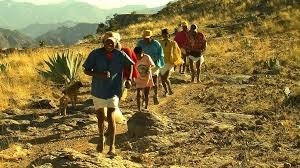
The documentary explores what happens to these people, the Tarahumara, who live deep in the mountains of Chihuahua, Mexico, when their love of running, or even their calling to run, spills out to the rest of the world because of a popular book about running and an American known as Caballo Blanco, or the White Horse.
“It’s a story about resilience, survival and continuance,” Bernardo Ruiz, the veteran Mexican and American film-maker who directed The Infinite Race, tells the Guardian.
That the 50-mile Ultra Maratón Caballo Blanco, which The Infinite Race revolves around, will be held again next March in the rugged terrain of Chihuahua’s Copper Canyon is a testament to the event’s durability. Running won out, as it has for generations among the Tarahumara, but only after the event survived a culture clash that involved a lot of dollars and pesos, good and bad.
Although he directed an award-winning 2008 documentary about baseball star Roberto Clemente and says he always wanted to make a film about running, Ruiz deals with tougher subjects, like the US-Mexico drug war in his 2016 documentary Kingdom of Shadows.
He says of The Infinite Race: “I liked how it was a compelling, beautiful film about running, but it also talked about social issues.”
The film, which debuts on 15 December, starts a little slowly, but those who stick with it will find out much about an indigenous people’s rich past – and a future lighted by hope.
The Tarahumara, or the Rarámuri, have run vast distances for years, often wearing sandals that have tire treads as soles. They say running is in their blood: isolation and geography helped them build endurance to hunt prey. They became famous after they were featured in Born to Run, a 2009 bestseller by Christopher McDougall.
The central figure of Born to Run was American ultramarathon runner Micah True, also known as Caballo Blanco, who organized a race in 2003 that would eventually become the Ultra Maratón Caballo Blanco. True hoped the race would help the Tarahumara preserve their running heritage and, more significantly, their culture, which had been battered by hunger, a lack of drinking water, a shortage of housing and global heating.
True, who had wintered in the area for 10 years, offered prizes of cash and corn, a commodity: “I don’t want to see people kill themselves for corn,” he said in the documentary. He opened the event to ultramarathoners, and it became popular among Americans, who were looking for a new challenge and a new culture to explore.
True died in 2012 at the age of 58 of a heart attack while running, but the event named after him continued to grow. A shorter kids’ run for “Caballitos” was offered, with bags of school supplies given to participants. The event had become commercialized, even with its own line of merchandise, but the whole region benefited from Caballo Blanco’s idea.
But the region’s seclusion had also become attractive to criminal gangs, who took over farms to grow marijuana and poppy plants to smuggle into the United States, whose border is only about 550 miles to the north. People needed work, and the drug trade provided opportunities, with even distance runners hauling drugs. Gangs proliferated. So did violence.
“Many families were forced out of their communities because of the violence,” Irma Chávez, an activist, explains in the film. “Unfortunately, you have to run away before they kill you.”
The 2015 Ultra Maratón Caballo Blanco was supposed to be the biggest yet, but gangs all but took over the town, clouding the event with the real threat of violence. The Americans who helped organize the race, believing participants could be in danger, decided almost at the last minute to call off the official race. No vouchers for corn would be issued to participants.
“They kind of intruded with a heavy hand into a runner’s paradise,” Ruiz says of the gangs.
He says, “It’s been my view that the race organizers were stuck in kind of an impossible situation.”
And that might have been the end of the event. But a group of Tarahumara assembled on what was supposed to be the morning of the race – and ran the course anyway, without incident. The marathon was officially back in 2017. Miguel Lara Viniegras won the 2020 race, which attracted 220 runners last March, in six hours 43 minutes.
As an ultrarunner and photographer Luis Escobar says in the film, “People are looking for something big, outside of their office, outside of their home. It is a big struggle, it’s hard physically and mentally – and there’s nothing like doing it. When you complete it, you know that you can do anything.”
Ruiz, who says he spent most of his career examining the love-hate relationship between the United States and Mexico, had a compelling challenge: telling a story that was not that well-known and based in a place that was very difficult to get to from the outside world. “You’d have to kind of be an ultrarunner or a sports geek to care about it,” he says.
Perhaps the film won’t draw as big an audience as other ESPN documentaries because it does not include an American sports celebrity like OJ Simpson or Michael Jordan. But the 30 for 30 project, now more than a decade old, has become much deeper, delivering quality projects that are way more than mere sports movies. This is one.
As Ruiz says, 30 for 30 “is a franchise that is really film-maker-driven.”
(12/27/2020) ⚡AMPStrava's Year in Sport report tells the story of running during COVID-19
We didn’t need hard numbers to tell us there was a running boom in 2020, but Strava’s Year in Sport data report has confirmed that fact. There are many interesting stats to come out of this report, and if you’re on Strava, you’ve probably already seen your own personal year in review. Here are a few of the most mind-boggling and shocking numbers highlighted in the Year in Sport for 2020 — a year in which we all ran extremely far.
Skyrocketing in popularity
Outdoor walking took the top spot for the Strava activity with the highest increase in popularity between 2019 and 2020, but the running still saw quite a big jump, too. From April to June in 2020, athletes uploaded 1.9 times more outdoor runs compared to the same period in 2019. As for indoor runs, 1.3 times more activities were uploaded to Strava in 2020 versus 2019.
Mixing it up
With nothing else to do this year due to lockdowns, many runners decided to try new activities on Strava as well. Cycling was the most popular activity for runners (other than running, of course), and 11.2 per cent of us posted outdoor rides to Strava in 2020 for the first time ever. Outdoor walks came in a close second (10.8 per cent of Strava runners posted these activities for the first time this year) and indoor workouts finished in a distant third at 5.3 per cent.
Solo marathons
Events around the world were cancelled this year, but that didn’t stop runners from creating their own races and time trials. The total number of marathons uploaded to Strava was down from 2019, but that’s due to the fact that there were next to no official marathons available to race. Even so, Strava users uploaded hundreds of thousands of marathons, 44 per cent of which were run solo. This is reportedly up from just 14 per cent in 2019, back when most of us wouldn’t even consider running a marathon all alone.
Personal bests
This year was a big one for Strava PBs. According to the Year in Sport report, of the athletes who have had Strava since at least 2019, 55 per cent ran PBs in the 5K, 10K, half-marathon or full marathon. They might not have been run in official races, but moving forward, we all know what we’re capable of running when we finally do return to in-person events.
A lot of running
In 2020, Strava users ran a whopping three billion kilometres. That’s farther than the distance from Earth to Uranus. Strava runners also climbed a collective 28.8 billion metres this year, which works out to climbing Mount Everest 3.25 million times. That’s a lot of running.
(12/27/2020) ⚡AMPby Running Magazine
According to a study Glucosamine supplements may reduce overall mortality similar to regular exercise
Glucosamine supplements may reduce overall mortality about as well as regular exercise does, according to a new epidemiological study from West Virginia University.
He and his research partner, Jun Xiang--a WVU health data analyst--assessed data from 16,686 adults who completed the National Health and Nutrition Examination Survey from 1999 to 2010. All of the participants were at least 40 years old. King and Xiang merged these data with 2015 mortality figures.

After controlling for various factors--such as participants' age, sex, smoking status and activity level--the researchers found that taking glucosamine/chondroitin every day for a year or longer was associated with a 39 percent reduction in all-cause mortality.
It was also linked to a 65 percent reduction in cardiovascular-related deaths. That's a category that includes deaths from stroke, coronary artery disease and heart disease, the United States' biggest killer.

"Once we took everything into account, the impact was pretty significant," King said.
The results appear in the Journal of the American Board of Family Medicine.
King himself takes glucosamine/chondroitin, one of the most common formulations of glucosamine supplements.
"I'm in a local cyclists' club, and we go for rides on weekends," he said. "One day I asked the other cyclists if they took glucosamine, and everyone did. And I thought, 'Well, I wonder if this is really helpful?' That's how I got curious about it."
He explains that because this is an epidemiological study--rather than a clinical trial--it doesn't offer definitive proof that glucosamine/chondroitin makes death less likely. But he does call the results "encouraging."
"In my view, it's important that people know about this, so they can discuss the findings with their doctor and make an informed choice," he said. "Glucosamine is over the counter, so it is readily available."
(12/26/2020) ⚡AMPby News Medical Life Sciences
Russia’s leading track and field athletes to compete at Olympics in Japan
Russia’s leading track and field athletes will have an opportunity of going next year at the Olympic Games in Japan next year, Russian Sports Minister Oleg Matytsin said on Thursday speaking at the Sport Forum Live event in Moscow.
"If we speak about the track and field athletics, I must say that our relations with World Athletics entered a constructive stage of relations," Matytsin said.
"We have accepted our mistakes from the past, elected the new leadership of the All-Russia Athletics Federation [RusAF] and are now actively cooperating about its membership reinstatement," the Russian sports minister said.

"I am positive that our leading athletes of track and field athletics will be cleared to perform at the upcoming international tournaments, including at the next Olympic Games," Matytsin added.
World Athletics, suspended RusAF’s membership in November 2015, following a wave of anti-doping rules violations and formed a special mission on the issue.
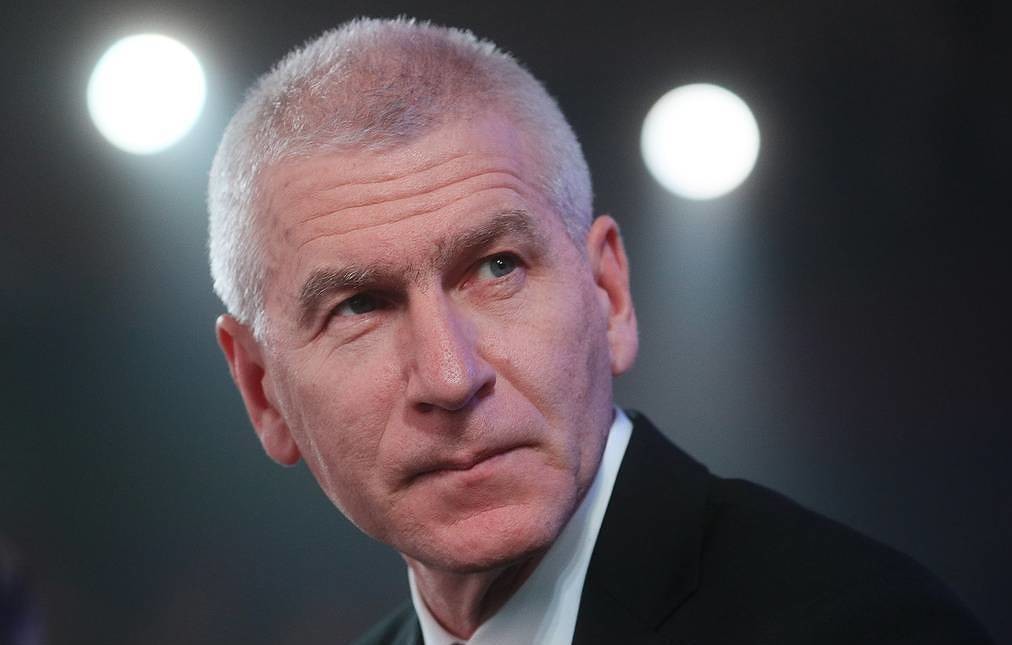
World Athletics, however, allowed clean athletes from Russia to participate in international tournaments under the neutral status or the Authorized Neutral Athlete (ANA) until the membership of the RusAF is reinstated. The ANA status prohibits Russian athletes from participating in all international track and field tournaments under the national flag.
The suspension of Russia’s governing athletics body has been ruled to remain in force 15 times since its introduction in 2015.
The Russian sports minister also said that depriving Russia of the right to fly the colors of the national flag was a "dear price to be paid."
The Court of Arbitration for Sport (CAS) ruled on the night of December 17 to keep in force a number of sanctions against Russia for the period of up to two years. The decision of the Swiss-based court was made within the frames of a legal spat between RUSADA (the Russian Anti-Doping Agency) and WADA (the World Anti-Doping Agency).
According to the CAS decision last week, Russian athletes were deprived of their right to participate in all World Championships, Olympic and Paralympic Games under the national flag of Russia for the two-year period.
The national anthem of Russia was also ruled out to be played at international sport tournaments in the course of the next two years, including at the upcoming Olympic Games in Japan next year.
"It is a dear price that we must pay for the dark period if we speak about the national flag and anthem," Matytsin said. "I’m sure that this situation will bring us closer and unite us."
"However, taking into account all mistakes from the past, I would prefer to set my aim for the future," he continued. "The most important is to cultivate a respect for each other and to keep an attitude of intolerance regarding the use of doping in sports."
The IOC (the International Olympic Committee) and the IPC (the International Paralympic Committee) announced on March 24 a decision to postpone for one year the Olympic and Paralympic tournaments in Japan due to the continuous COVID-19 spread.
(12/26/2020) ⚡AMPby Russian News Agency
Tokyo 2020 Olympic Games
Fifty-six years after having organized the Olympic Games, the Japanese capital will be hosting a Summer edition for the second time, originally scheduled from July 24 to August 9, 2020, the games were postponed due to coronavirus outbreak, the postponed Tokyo Olympics will be held from July 23 to August 8 in 2021, according to the International Olympic Committee decision. ...
more...Amy Hunt looks forward to the Olympics in Tokyo
The delay of the Games to sprinter Amy Hunt and the teenage sprinter’s eyes light up and she smiles. “We’ve been given this extra year and it’s a year to get fitter and faster before trying to make our first Olympic team. So I think it’s worked out really well for me.
“There are no negatives for young athletes like me when it comes to having the Olympics pushed back because we’ll have a better chance of being selected when those trials come around.”

In 2019 Hunt won the European under-20 200m title and set world under-18 and British under-20 records at the distance. This year another great sequence of results has led to her being named AW readers’ junior female athlete of the year again in 2020.

In February she won the British indoor 60m title in 7.39 before improving to 7.36 for fourth at the Müller Indoor Grand Prix in Glasgow. Then, when outdoor track meets started, she raced exclusively at 100m instead of 200m at events ranging from the British Champs in Manchester, where she was fourth, to her first Diamond League in Doha, where she placed sixth.
“I can’t describe how good it was to go to my first Diamond League in Doha,” she says. “To experience the hype and energy there was really fun.”
She turns 19 in May and is looking forward to returning to her specialist distance of 200m after spending 2020 working on her ability get out the blocks quickly. “We also felt the biggest gains were to be made over 100m and we treated it almost as a freebie year,” she explains.
“We stripped back and focused on that start again and it definitely really helped and I saw an improvement in my start. At the British Champs I felt really confident and able to put together a first 20m.”
She adds: “It was interesting to have the focus on the 100m because going into an event knowing it’s not your favorite event and to be one of the slowest was an interesting process for me to learn. It was good to head into a race not being too star-struck and to just focus on my lane.”
She has also stepped up her training on the track and in the gym. “Heading into next year I’m in a really good position,” she says.”I have more confidence in my technical abilities and during what has been effectively a free year I’ve upped the amount of time I’ve done in the gym. Now three a week and I’m seeing a lot of gains from that.”
She adds: “This winter increased track sessions and gym so I now train six days a week. It was rough for my body to deal with for the first two weeks but I’m not getting used to that kind of exertions and I’m discovering recovery techniques that work for me.
“I really do enjoy winter training in a bit of a sadistic way. I’ve liked being back on the track and in the gym this winter. If you want to get to a certain level, you have to love what you’re doing. My coach Joe is always cracking jokes and creates a really good environment to be in.”
So what really motivates her to put on her kit and start training? Is it the Olympics or World Under-20 Championships next year? Or the idea of improving her PBs?
“I think it’s a combination,” she says. “But the most important to me is putting the work in so my idols become my rivals. That’s what gets me out of bed in the morning. I want to be the best that I can be and be up there with those people who I used to idolize and now want to race.”
As for those idols, she says: “A younger me definitely looked up to Allyson Felix a lot. I’ve always looked up to Dina (Asher-Smith) because she’s always such an amazing role model for the sport. She encompasses a lot of values that I hold dear to myself too.
“Shaunae Miller-Uibo is an amazing athlete and people like Shelly-Ann Fraser-Pryce have gone away and had a baby and returned to run well so there are lots of amazing female role models out there.”
So far she has not spent much time with any of them. The only time she has bumped into Asher-Smith, for example, was the Great CityGames in 2017. But she adds: “Hopefully I’ll be meeting most of them next year in Tokyo!”
(12/26/2020) ⚡AMPby Jason Henderson
Tokyo 2020 Olympic Games
Fifty-six years after having organized the Olympic Games, the Japanese capital will be hosting a Summer edition for the second time, originally scheduled from July 24 to August 9, 2020, the games were postponed due to coronavirus outbreak, the postponed Tokyo Olympics will be held from July 23 to August 8 in 2021, according to the International Olympic Committee decision. ...
more...Rodchenkov Anti-Doping Act officially passed into law
The U.S. bill to criminalize doping has officially been passed into law despite objections from WADA
On December 4, the U.S. officially signed the Rodchenkov Anti-Doping Act into law. This new law will allow American prosecutors to investigate doping at international events in which Americans are participants, sponsors, or broadcasters. Violators will face up to 10 years in prison, as well as fines of $250,000 for individuals and $1 million for organizations.
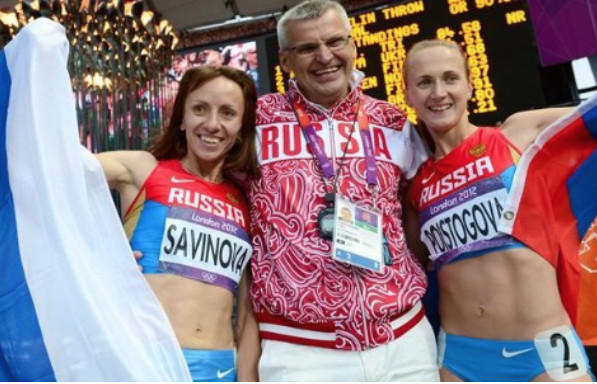
This comes less than one month after the bill was passed through the U.S. Senate, amid heavy criticism from the World Anti-Doping Agency (WADA). In a statement released on November 17, the agency expressed its concern that some important elements of the Act may have unintended consequences, and that its extraterritorial nature might undermine the global fight against doping.
“No nation has ever before asserted criminal jurisdiction over doping offences that occurred outside its national borders – and for good reason,” the Agency said. It is likely to lead to overlapping laws in different jurisdictions that will compromise having a single set of anti-doping rules for all sports and all Anti-Doping Organizations under the World Anti-Doping Code (Code).”
Additionally, WADA wants to know why the act excludes large areas of U.S. sports, including college and professional leagues. These leagues consist of nearly half a million athletes and yet were removed from the bill without explanation.
Despite this controversy, the law has officially been passed. Some prominent voices in the fight against doping are considering this a victory, including Jim Walden, the lawyer representing Grigory Rodchenkov, the Russian whistle-blower for whom the act is named. Walden says that it is now up to the Department of Justice to cooperate with the U.S. Anti-Doping Agency (USADA) and international law enforcement partners to develop an effective program that creates zero tolerance for doping in sport.
“Dopers should be on clear notice: there is a new sheriff in town, so cheat at your own peril,” he said in a statement.
It is important to note that this law is aimed not at individuals who are cheating, but at larger doping schemes. Walden is considering the Rodchenkov Anti-Doping Act a monumental step in the fight for clean sport, and is hoping that other countries will partner with the U.S. on cross-border law enforcement to protect the rights of clean athletes and the integrity of sport.
(12/26/2020) ⚡AMP
by Running Magazine
Boxing legend Jeffrey LeMair is now running ultra marathons
The steady beat of a footstep, after footstep. It’s a calming and comfortable sound to Jeffrey LeMair.He runs for fun. Jeffrey has more than 30 marathons under his belt, including the Boston Marathon.
“When I’m having a bad day, some people go out and say ahh I resolve all my problems by running, it’s not that easy, but what happens is you get so relaxed that you’re in a non-emotional state to be able to deal with your issues,” said LeMair.
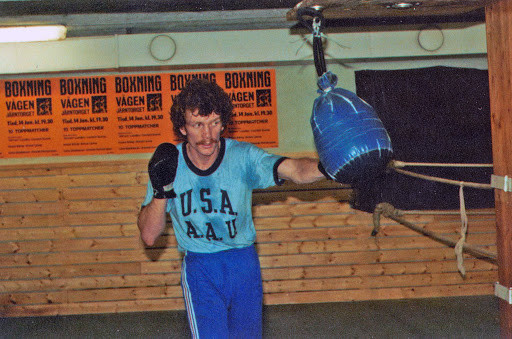
And for Jeffrey, a regular 26 mile marathon isn’t enough. He now runs Ultra Marathons of 50 to a hundred miles.

“It’s more of an adventure for me, so I want to extend the adventure, I also want the peace and fulfillment,” said LeMair.
During his 66 years, Jeffrey has run into his share of obstacles. The biggest came in the most unlikely place. The White House. You see Jeffrey wasn’t always a runner. Pound for pound Jeffrey LeMair is probably the best boxer to come out of the state of South Dakota.
Jeffrey won amateur championships, traveled the world and met stars. His brother Greg was his trainer and coach.
“Everybody that knows Jeffrey knows he was a pretty good boxer, but I don’t think people fully understand how good he was, said his brother Greg LeMair.
With Greg in his corner, Jeffrey fought, virtually to a draw, three boxers who went on to become world champions. One of them was Sugar Ray Leonard, who Jeffrey fought in Denver.
“It was a really really beautiful boxing match, really close but in the third round, Jeffrey decked Sugar Ray Leonard, the first time and one of the few times Sugar Ray Leonard was ever off his feet,” said Greg LeMair.
Leonard went on to become an Olympic gold medalist in 1976. At the next Olympics, it was to be Jeffrey’s turn. And that’s how he ended up at the White House on March 21st, 1980. On that rainy day, LeMair, and other top athletes in their sports were called to a meeting with President Jimmy Carter. One of LeMair’s fellow boxers spoke up but the president had made up his mind.
“He said young man, we’re not going, and that was it,” said LeMair.
Boxing will always be a part of his life, the muscles may be a little stiffer, the movement a fraction slower, but you still would not want to be on the receiving end of one of these punches. At times in his life, Jeffrey has been a contender, a challenger and in the eyes of those who know him best, a champion
“As good a fighter as good a boxer as Jeffrey was, he’s as good a human being,” said Greg LeMair.
In more than 200 fights Jeffrey says he was never knocked out and he credits his brother Greg for much of his success. Lemair, who turns 67 in February is preparing for another 100 mile race in 2021.
By the way, his grandkids call him “Grandpa Boom Boom.”
(12/24/2020) ⚡AMPby Tom Hanson
Seb Coe warns it will be harder than ever to cheat at Tokyo Olympics
Sebastian Coe has warned the biggest names in track and field that being “high profile no longer protects you from the investigative powers of the sport” – and predicted it will be harder than ever to get away with taking banned drugs at the Tokyo Olympics.
There has long been a suspicion that some countries have not done everything in their powers to catch their stars who cheat. However Coe, the World Athletics president, insisted things had now fundamentally changed and that drugs cheats would now be “fearlessly and ruthlessly weeded out” by the independent Athletics Integrity Unit (AIU).
Athletes need to understand why Russia is so important to the IOC
While Coe readily conceded it was not a good thing for the sport that its fastest man, the world 100m champion Christian Coleman, was serving a doping ban for missing tests, he said it showed the system was working.

“The AIU was a centrepiece in the reforms and that’s exactly why I pushed for that independent, dispassionate organisation that could remove the decision making from any undue political interference,” he said. “I like to think that it has shown the athletes that we’re not respecters or fearful of reputation. Where there is an infraction we’re not fearful of sitting there going: ‘Oh well that’s quite a big name.’
“The AIU is not always going to be on everybody’s Christmas card list, nor should they be. But I do think that it has restored some confidence among the athletes that we’ve got an organisation out there that will fearlessly and ruthlessly weed out the cheats when and where they surface.”
Coe said athletics now did more intelligence-led testing than any other sport – a fact that made him hopeful it will be harder than ever to cheat at the Tokyo Olympics.
Those comments will raise eyebrows in some quarters, given he also predicted before the London 2012 Olympics that it would be “the cleanest in history”. But Coe said he was confident that was the case. “Technology has improved, significantly even since 2012. Now, we’ve become much more sophisticated in the way testing takes place. It’s much more intelligence-led. And we’ve also got the AIU and that’s now 20-odd people with a good chunk of those people are sophisticated international investigators as well.
“I feel that I will be taking World Athletics as a federation to Tokyo with better systems in place than any other federation. I’m proud to be able to say that. And what I can say is if athletes do cheat there is a greater chance of them being caught in Tokyo than probably any previous Games.”
Coe also dismissed suggestions that the whereabouts system, under which athletes receive a two-year ban if they miss three drug tests in a 12-month period, was unduly harsh.
(12/24/2020) ⚡AMPby Sean Ingle
Tokyo 2020 Olympic Games
Fifty-six years after having organized the Olympic Games, the Japanese capital will be hosting a Summer edition for the second time, originally scheduled from July 24 to August 9, 2020, the games were postponed due to coronavirus outbreak, the postponed Tokyo Olympics will be held from July 23 to August 8 in 2021, according to the International Olympic Committee decision. ...
more...2021 Boilermaker will be moved on Sunday, October 10th
The Boilermaker announced today that the date for the 2021 Boilermaker 15K and 5K races will be moved from its traditional second Sunday in July to the second Sunday in October, which will be October 10th, 2021. It will also be subject to whatever guidelines and regulations that may be in place at the time due to the ongoing COVID-19 pandemic.
Due to the breadth of the unknowns going forward, registration periods, race capacities and the host of other events both within the races and surrounding Boilermaker Weekend will remain on hold until such time when there is clarity relating to the aforementioned guidelines and regulations surrounding the COVID-19 situation.
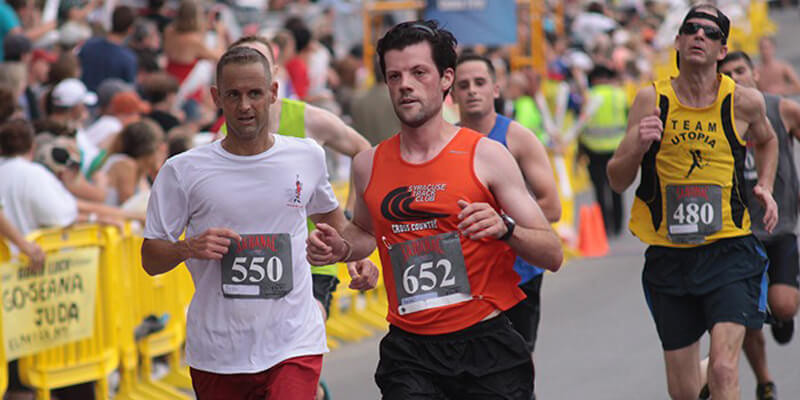
“After such a horrific 2020, our goal for 2021 has been focused on being in a position to safely host an in-person Boilermaker. While the scientific community has worked to develop vaccines in record time for which we should all be grateful, given the deadly resurgence of COVID-19 of late, the unknowns related to the widespread availability of the vaccines, and our commitment to the health, safety and well-being of our community, we were not comfortable with the probability that we would be allowed to proceed with our traditional date in July,” said Mark Donovan, Boilermaker President.
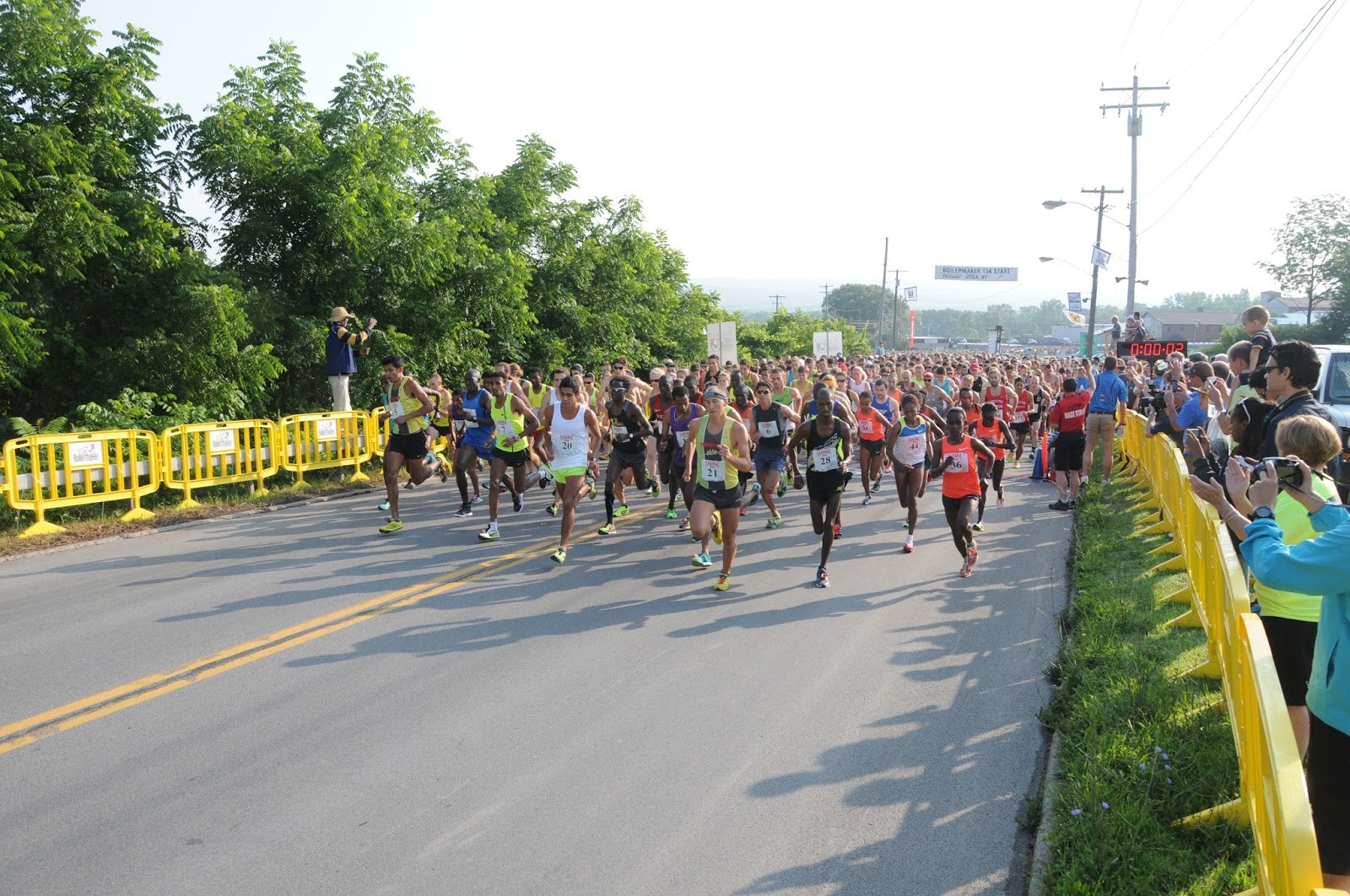
“Rather than put our participants, volunteers, vendors, and our community through potentially changing scenarios which we all just experienced this year, we wanted to not only give our community something to look forward to, but to also provide as much certainty in these uncertain times as feasible while giving the Boilermaker the best possible opportunity to be held in-person and safely in 2021.”
The Boilermaker urges all of its participants to check their emails regularly and to pay close attention to our traditional and social media communications to ensure that they are aware of future announcements.
Donovan added, “In order to give the 2021 Boilermaker the best chance of being held in-person on October 10th, we urge everyone to continue to wash their hands, stay socially distanced, wear a face covering when appropriate and get vaccinated when they become available.”
(12/24/2020) ⚡AMPBoilermaker 15k
The Boilermaker 15K is the premier event of Boilermaker Weekend. This world krenowned race is often referred to as the country's best 15K. The Boilermaker 15K is recognized for its entertaining yet challenging course and racing's best post-race party, hosted by the F.X. Matt Brewing Company, featuring Saranac beer and a live concert! With 3 ice and water stops every...
more...

